June23-25,2023
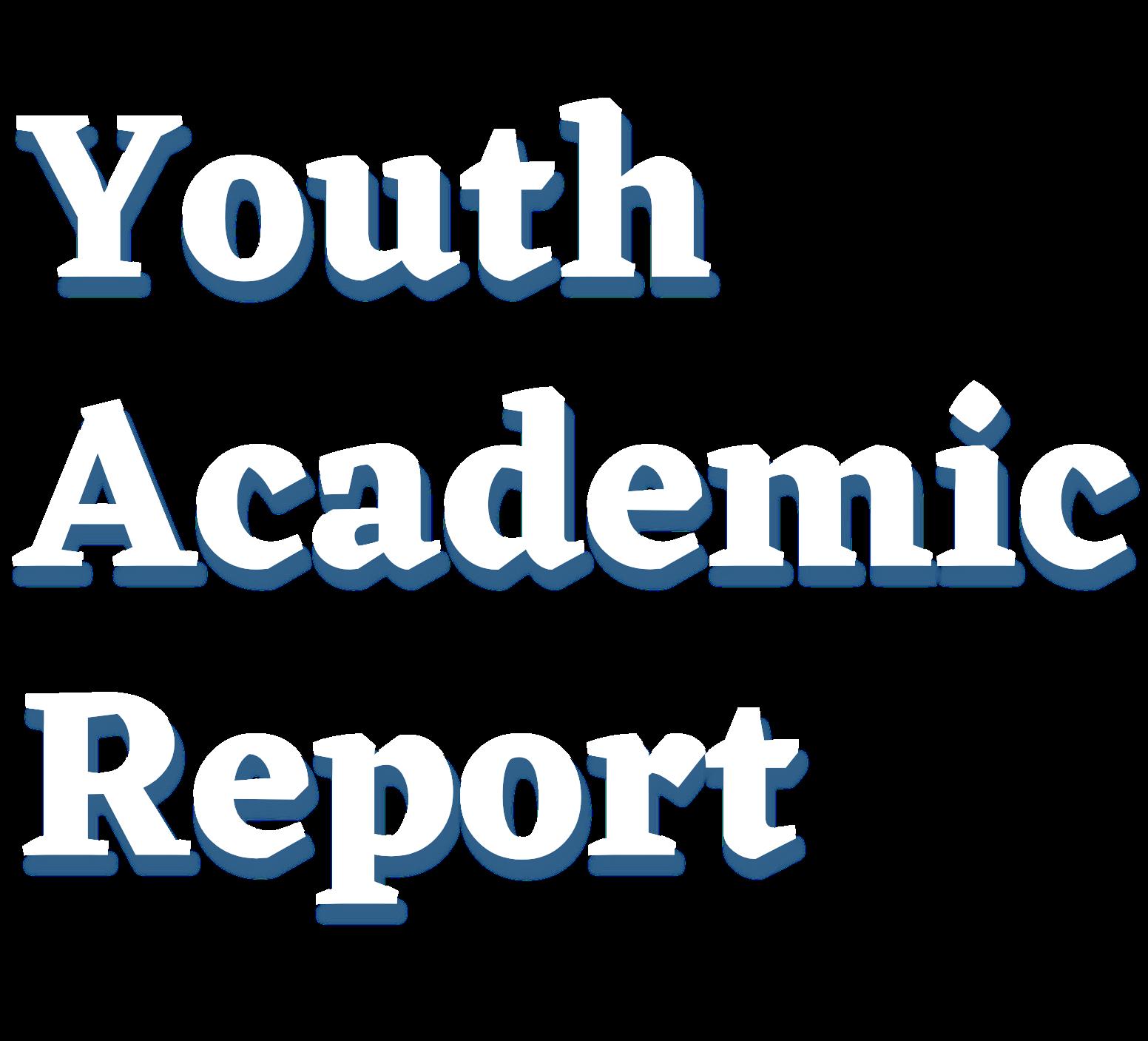
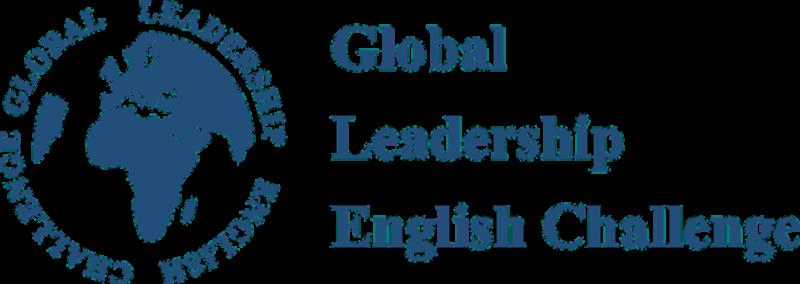

PublishedbytheGlobalLeadershipEnglishChallenge

Seoul,RepublicofKorea
PublishDate:June252023
Email:glec@hopetofuture.org
Website:wwwgleaderorg
English Speech and Essay Writing Competition on the United Nations Sustainable Development Goals as an International Youth Influencial Platform
Project Manager
Editor-in-Chief
Assistant Editor
JinHoanChoung
HyeonkyungHa
ChangjuLee| Seoul National University
SeunghoeKoo| Seoul National University of Science and Technology
YoujinCho| Seoul Women's University
LuuNguyenKimNgan| Vietnam National University
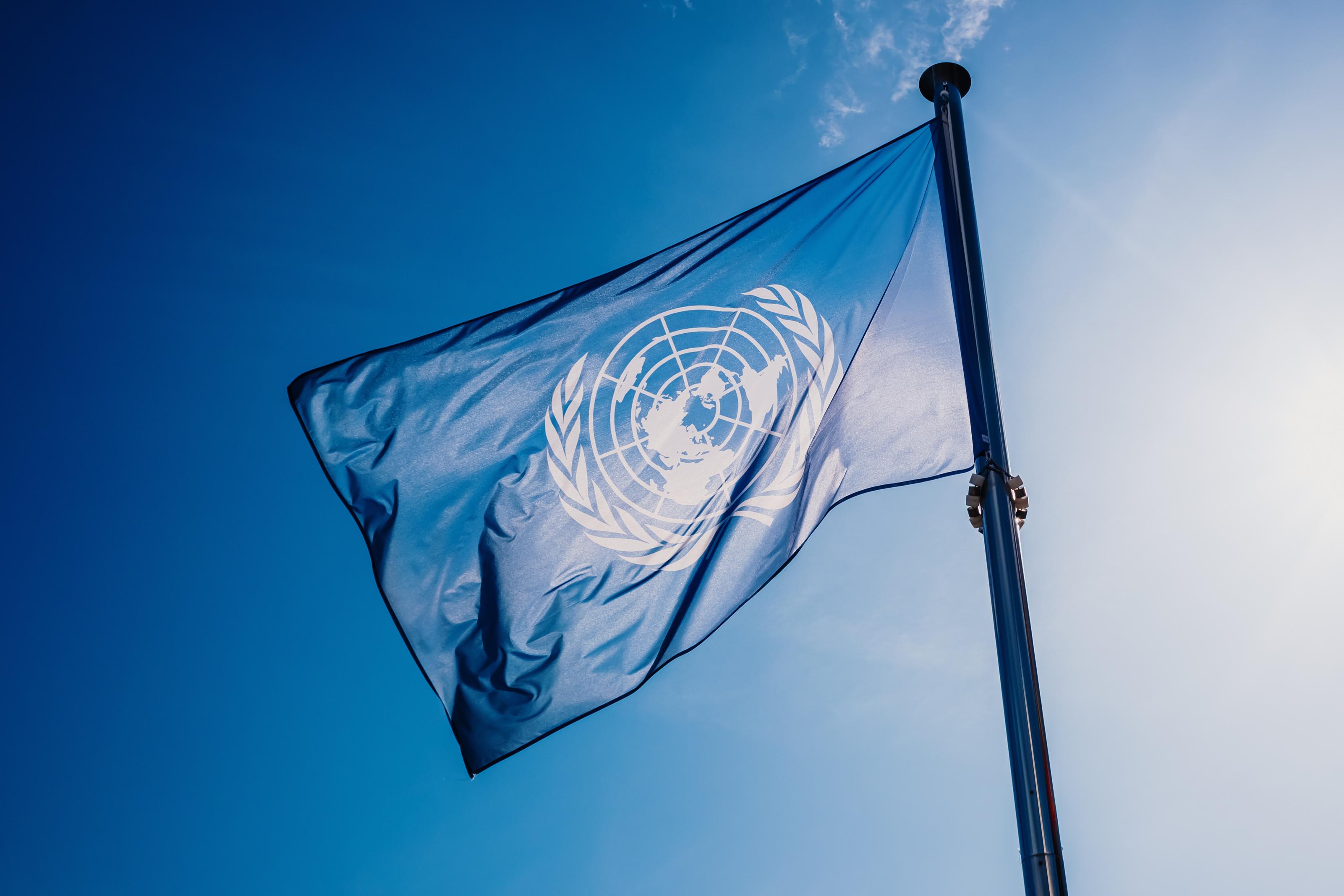

01 SDGs Debate SDGs Discussion SDGs Presentation Individual Essay Photo Gallery Welcoming Remark 02 09 12 34 43 62 159 Introduction Participant List
WelcomingRemark
LadiesandGentlemen,esteemedguestsandfellowstudents,
It is an honor to stand before you today as we gather from around the world to exchange knowledge, engage incollaborativediscussions,andexploretheSDGsthatshapeoursharedfuture.
Allow me to begin by quoting a former United Nations Secretary-General who once said, "We may have different religions, different languages, different colored skin, but we all belong to one human race " These words,spokenbyKofiAnnan,resonatedeeplyintoday'sglobalizedyetindividualizedworld.
In a world where technology connects us instantaneously, our individual actions can have far-reaching consequences. This interconnectedness calls for collective action like never before. No longer can we afford to view global challenges as distant and disconnected from our lives. Climate change, poverty, inequality, and injustice are universal issues that demand a collective response. Our fates are intertwined, and it is throughcollectiveactionthatwecanshapeasustainableandequitablefutureforall
Understanding global challenges is not merely an academic pursuit; it is imperative for informed and responsible global citizens. By delving into the complexities of these challenges, we can expand our perspectives, broaden our horizons, and develop innovative solutions The SDGs serve as a blueprint for addressing these challenges, but their success relies on our commitment to understanding them and taking actionatboththeindividualandcollectivelevels
Thus, youth empowerment is a key ingredient in driving positive change Young people possess boundless creativity, fresh perspectives, and an unwavering belief in their ability to effect change. The voice of youth mustbeheard,andtheirideasandsolutionsmustbeintegratedintothedecision-makingprocesses Wemust provide platforms that enable them to contribute meaningfully to shaping national and international policies
In this globalized yet individualized world, collective action is our path forward. Understanding global challenges, empowering youth, mastering the language of communication, and embracing collaborative discussionsareessentialstepsonthisjourney.
Thankyouandagain,welcometotheGlobalGLECConference.
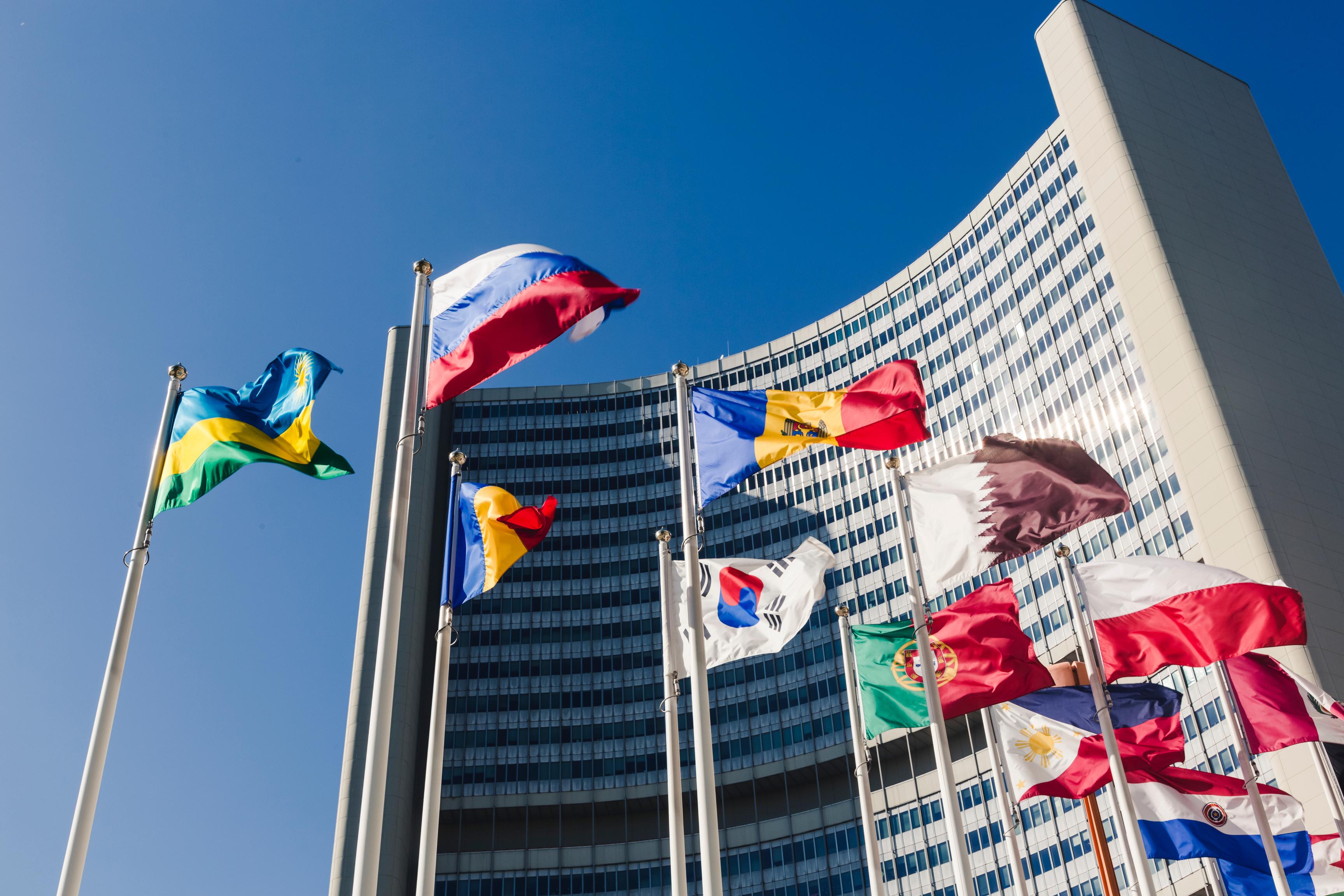
01 Global GLEC Conference Final Report 2023 June

Global GLEC Conference
Introduction
Background
‘Global Leadership English Challenge (GLEC)’ is an English Speech and Essay Writing Contest on the topics of the United Nations and the Sustainable Development Goals (SDGs). With the world facing seemingly unresolvable matters, which range from environmental issues to refugee crises, GLEC aims to raise awareness and understanding of contemporary global issues among the participating students. Participants are expected to share their views on current issues and offer potential solutions to multifaceted global problems on the given themes based on their grade level. Participants will go through two stages (preliminaryroundandfinalround)intheirrespectivecountries,andthefinalroundwinnerswillbeinvited toparticipateintheGLECGlobalConference,avirtualinternationalacademicconferenceontheUNandthe SDGs.
Asaglobalwinners'platform,theGlobalGLECConferenceservesasadynamicandinclusiveglobalstagefor youth, fostering dialogue, collaboration, and innovative thinking towards addressing international challenges. With the primary objectives of promoting global citizenship and cultivating future leaders, this conference brings together talented students from Korea, Vietnam, India, China, and Japan, providing them with a unique platform to interact, exchange ideas, and seek avenues of cooperation on the international agenda By engaging with UN experts, participating in team debates related to the Sustainable Development Goals (SDGs), and developing their presentation and career skills, students are empowered to become global citizensanddrivepositivechangeintheircommunitiesandbeyond TheGlobalGLECConferencestandsasa catalyst for youth empowerment, offering an enriching experience that nurtures leadership potential, culturalunderstanding,andadeepcommitmenttocreatingasustainableandinclusivefuture
Hope to the Future Association (HFA) is a non-profit organization that has been dedicated to fostering global competence and raising awareness of the importance of global citizenship education and international development among young people. HFA believes that global competence is essential in today's interconnected world, and therefore, it offers programs that enhancetheglobalcompetenceofdomesticandinternationalyouth.

OneofHFA'skeymissionsistopromoteglobalcitizenshipamongyoungpeople.HFAbelieves that global citizenship is about understanding and valuing different cultures, perspectives, and ways of life. Throughitsprograms,HFAseekstoempoweryoungpeopletobecomeactiveglobalcitizenswhocanmakea positiveimpactintheircommunitiesandtheworld.
Another important mission of HFA is to enhance the capacity of young people HFA believes that young people have the potential to become leaders and agents of change. Therefore, it offers programs that provide guidance and academic inspiration for the global youth. Through these programs, HFA helps young people developtheirskills,knowledge,andconfidence,enablingthemtopursuetheirgoalsandaspirations.
03 Global GLEC Conference Final Report 2023 June
Objectives
Enhanced Cooperation
ParticipantsfromKorea,Vietnam,India,China,Japan,andothercountrieswill havetheopportunitytointeractandcollaboratewithoneanother The conferenceaimstofacilitatenetworkingandencourageparticipantstoseek methodsofcooperationontheinternationalagenda Byexchangingideasand perspectives,participantscandevelopadeeperunderstandingofglobalissues andworktogethertowardssustainablesolutions
Global Leadership Development
Theconferenceoffersvariousskilldevelopmentopportunitiesforstudents. Presentationtrainingsessionswillenableparticipantstoenhancetheir communicationandpublicspeakingskills Additionally,participantswillengage inteamdebatesandcollaborativeprojectswhichwillempowerstudentsto becomeeffectiveleaderscapableofaddressingglobalchallengesandpromoting positivechangeintheircommunities.
Long-term Connections
TheGlobalGLECConferenceintendstoestablishlong-termconnectionsamong participants.Byfosteringasenseofcommunityandfacilitatingmeaningful interactions,theconferenceseekstocreateaglobalnetworkofyoungleaders. Theseconnectionscanleadtofuturecollaborations,exchangeprograms,and partnershipsthatcontributetosustainabledevelopmentandpromote internationalunderstanding
01 02 03
04 Global GLEC Conference Final Report 2023 June
Theme
SustainableDevelopmentGoals(SDGs)andYouthEmpowerment
The Sustainable Development Goals (SDGs) were born at the United Nations Conference on Sustainable Development in Rio de Janeiro in 2012. The objective was to produce a set of universal goals that meet the urgentenvironmental,politicalandeconomicchallengesfacingourworld
The SDGs replace the Millennium Development Goals (MDGs), which started a global effort in 2000 to tackle the indignity of poverty. The MDGs established measurable, universally-agreed objectives for tackling extreme poverty and hunger, preventing deadly diseases, and expanding primary education to all children, amongotherdevelopmentpriorities.
For 15 years, the MDGs drove progress in several important areas: reducing income poverty, providing much needed access to water and sanitation, driving down child mortality and drastically improving maternal health. They also kick-started a global movement for free primary education, inspiring countries to invest in their future generations. Most significantly, the MDGs made huge strides in combatting HIV/AIDS and other treatablediseasessuchasmalariaandtuberculosis.
KeyMDGachievements
Morethan1billionpeoplehavebeenliftedoutofextremepoverty(since1990)
Childmortalitydroppedbymorethanhalf(since1990)
Thenumberofoutofschoolchildrenhasdroppedbymorethanhalf(since1990)
HIV/AIDSinfectionsfellbyalmost40percent(since2000)
ThelegacyandachievementsoftheMDGsprovideuswithvaluablelessonsandexperiencetobeginworkon thenewgoals.Butformillionsofpeoplearoundtheworldthejobremainsunfinished.Weneedtogothelast mile on ending hunger, achieving full gender equality, improving health services and getting every child intoschoolbeyondprimary.TheSDGsarealsoanurgentcalltoshifttheworldontoamoresustainablepath.
TheSDGscoincidedwithanotherhistoricagreementreachedin2015attheCOP21ParisClimateConference. Together with the Sendai Framework for Disaster Risk Reduction, signed in Japan in March 2015, these agreements provide a set of common standards and achievable targets to reduce carbon emissions, manage therisksofclimatechangeandnaturaldisasters,andtobuildbackbetterafteracrisis
TheSDGsareuniqueinthattheycoverissuesthataffectusall.Theyreaffirmourinternationalcommitment to end poverty, permanently, everywhere. They are ambitious in making sure no one is left behind. More importantly,theyinvolveusalltobuildamoresustainable,safer,moreprosperousplanetforallhumanity.
05 Global GLEC Conference Final Report 2023 June
What are the Sustainable Development Goals?
The Sustainable Development Goals (SDGs), also known as the Global Goals, were adopted by the United Nations in 2015 as a universal call to action to end poverty, protect the planet, and ensure that by 2030 all people enjoy peace and prosperity The 17 SDGs are integrated they recognize that action in one area will affect outcomes in others, and that development must balance social, economic and environmental sustainability
Countries have committed to prioritize progress for those who're furthest behind The SDGs are designed to end poverty, hunger, AIDS, and discrimination against women and girls. The creativity, knowhow, technologyandfinancialresourcesfromallofsocietyisnecessarytoachievetheSDGsineverycontext
Reference: Sustainable Development Goals: Background on the Goals (https://www undp org/sdg-accelerator/background-goals)
Youth Empowerment
Today, the world is home to 1.8 billion young people, the largest generation of youth in history. They are more interconnected than ever before, and many are leading political, social, and economic change in their communities and societies. At the same time, young people face significant challenges and risks, disproportionately carried by girls and young women in many parts of the world. In many countries, youth exclusion is strongly evident, often crossing with other forms of marginalization linked to gender, location, culture and/or community, undermining development and social cohesion In many cases, social norms continue to sideline youth, treating political and economic participation as the prerogative of older people. While a few national policy frameworks have started to pay deliberate attention to youth concerns, much more can be done. In all countries, youth need to be full participants in shaping and implementing the choicesthataffectthem
United Nations and the global society recognize that young people can be positive agents of change and represent an immense and valuable potential that governments and institutions should nurture and invest in They seek to enhance those aspects required for vibrant democratic governance, including by advancing initiativesfocusedonyouthempowermentandengagementinpeaceanddevelopmentprocesses.
Because youths are a significant force for sustainable development and key agents for social change, economic growth, and technological innovation, the United Nations promotes and supports their empowerment. This is done by promoting fully inclusive governance, increasing youth participation in decision-making, ramping up youth employment, engaging youth in peacebuilding and gender equality programs,andensuringyouthareapartofSDGintegration,implementation,andmonitoring.
06 Global GLEC Conference Final Report 2023 June
Day 1 | June 23 (Fri.)
OpeningCeremony
Moderator | HyeonkyungHa,ProgramAssociate
Welcoming Remark | JinHoanChoung,FounderandPresident

9:00-10:00pm 10:30-11:30pm
8:00-8:30pm 3:00-3:30pm
3:30-5:00pm
Speaker
Senior Economist at ILO Geneva
UnitedNationsVirtualTour
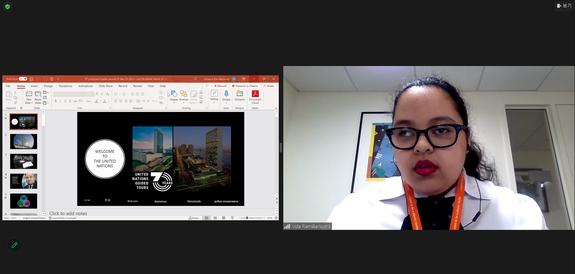
Speaker
UnitedNationsBriefing DanielSamaan VolaRamiliarisona
Tour Guide at UN Visitors Centre
Day 2 | June 24 (Sat.)
Day2Opening
SDGsDebate
Topic (1) TheImpactofArtificialIntelligenceonEmployment
Moderator |
SeunghoeKoo
ChangjuLee
Seoul National University of Science and Technology
Seoul National University
Topic (2) NuclearEnergyTransitionbetweenFranceandGermany
Moderator |
YoujinCho
Seoul Women's University
LuuNguyenKimNgan Vietnam National University
07 Global GLEC Conference Final Report 2023 June Timeline
5:30-7:00pm 9:00-10:00pm
8:00-9:00pm 10:00-11:30pm
SDGsTraining
RachelNaddeo
Managing Editor at the Journal of Public Diplomacy
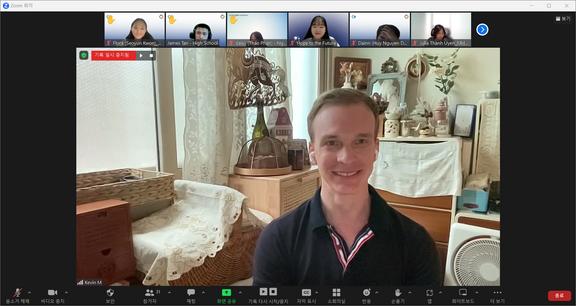

SDGsDiscussion
Topic BalancingEnvironmentalResponsibilityandDevelopment
SDGsTraining
DenisGodwinAntoine
Day 3 | June 25 (Sun.)
3:00-3:30pm
3:30-5:00pm 8:00-9:30pm
5:30-7:00pm 9:30-10:30pm
GroupActivity
Day3Opening
FinalRehearsal
CareerDevelopmentSession
Speaker Speaker Speaker
Permanent Representative of Grenada to the United Nations Professor at Chung-Ang University

KevinMitchell
SDGsPresentation
ClosingCeremony
08 Global GLEC Conference Final Report 2023 June
Participant List

Global GLEC Conference










10 Global GLEC Conference Final Report 2023 June
Anh Thu Phuong
Elyna Mehriel Camus
Henry (Yuyeop Jung)
Jahanara Mariya Tigley
Chi-Han Lin
Gia Ninh Dam
Hyeseong Ju
James Benedict Tan
Dayoon Kang
Gianna Erin Camaya
Irene Pae Khanh Doan
Vietnam Finland International school
University of the Philippines Rural High School
Songok Middle School
St Scholastica’s Academy of Marikina
Wufu Junior High School
Lawrence S. Ting School
Xian International School
University of Saint Louis Tuguegarao
Cheong-ju Daesung Elementary School
St. Scholastica’s Academy of Marikina
Fayston Preparatory of Suji
The American School of Vietnam









11 Global GLEC Conference Final Report 2023 June
KWON, SEOYUN
Nguyen Thanh Mai
Yeeun Kim
Seunghoe Koo
Ngo Thanh Uyen
Sungyoon Moon
Ynna Buhisan
Youjin Cho
Nguyen Duc Huy
Ye Yeon Lee
Changju Lee
Luu Nguyen Kim Ngan
CMIS Canada
The Dewey Schools
SALT International School
Seoul National University of Science and Technology
Lawrence S. Ting School
St. Johnsbury Academy Jeju
University of San Carlos Cebu City
Seoul Women's University
Lawrence S. Ting School
Singapore School Clark
Seoul National University
Vietnam National University
SDGs Debate

Global GLEC Conference
Topic(1)
TheImpactofArtificialIntelligenceonEmployment
AFFIRMATIVE
DayoonKang
GiannaErinCamaya
Henry(YuyeopJung)
HuyNguyenDuc
IrenePae
KWON,SEOYUN
YnnaBuhisan
Background
NEGATIVE
Chi-HanLin
JahanaraMariyaTigley
KhanhDoan
MariaCaliahDelRosario
NgoThanhUyen
NguyenThanhMai
SungyoonMoon
The topic of the debate revolves around the potential consequences of the increasing adoption of Artificial Intelligence (AI) on employment and its implications for SDG 8. In recent years, AI has emerged as a transformative technology with the potential to revolutionize industries and societies As AI applications becomemorewidespread,thereisgrowingconcernaboutitsimpactonemploymentandthefutureofwork.
Currently, the adoption of AI technologies is rapidly expanding across various sectors, leading to both optimism and apprehension Proponents argue that AI has the potential to drive job creation, improve productivity, and foster economic growth. They highlight how AI can automate repetitive tasks, enhance efficiency, and unlock new opportunities for innovation and entrepreneurship Moreover, proponents argue thatAItechnologiescancontributetotheachievementofSustainableDevelopmentGoal8,whichfocuseson promoting inclusive and sustainable economic growth, full and productive employment, and decent work forall.
However, the increasing adoption of AI also raises significant concerns and controversies. Critics argue that AI technologies may lead to job displacement, as automation and machine learning algorithms replace certain tasks traditionally performed by humans. They raise concerns about potential skill gaps, as the workforce may require reskilling or upskilling to adapt to the changing demands of AI-driven industries. Furthermore, there are concerns about the potential exacerbation of inequalities, with certain groups being disproportionatelyaffectedbyjoblossesorlimitedaccesstoAI-relatedopportunities.
13 Global GLEC Conference Final Report 2023 June
challenges and opportunities presented by AI technologies. Governments, policymakers, and organizations are actively seeking ways to navigate this evolving landscape to ensure that AI adoption aligns with sustainable development goals and promotes inclusive growth. Initiatives are being undertaken to foster responsible AI development, including the establishment of ethical guidelines and frameworks for AI governance.
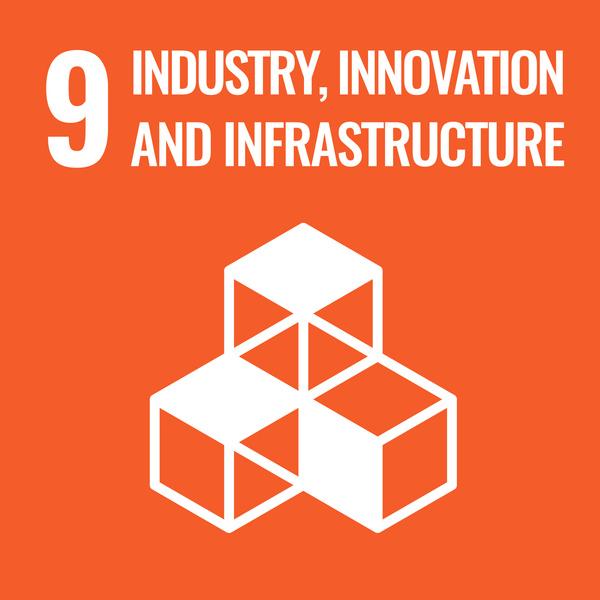
EXPECTED OUTCOMES
GiventhedynamicnatureofAIanditspotentialimpactonemployment,itiscrucialtoengage ininformedandthoughtfuldiscussionstounderstandthemultifacetedaspectsofthistopic.By exploringthepotentialconsequencesofAIadoptiononemploymentandanalyzingstrategiesto maximizebenefitsandmitigatenegativeimpacts,studentswilldevelopanuanced understandingofthecomplexitiesinvolved.Tacklingthistopicisimportantforstudentsto growasgloballeadersasitencouragesthemtothinkcritically,analyzediverseperspectives,and proposestrategiestomaximizethebenefitsofAIwhileaddressingconcernsaboutjob displacement,skillgaps,andinequalities
Linkages with the SDGs


Examining the concerns surrounding potential job displacement, skill gaps, and inequalities caused by the rise of AI, we can ensure that the benefits of AI are accessible to all segments of society, including marginalized communities. By discussing the implications of AI on employment, students can explore how AI technologies can contribute to job creation, improved productivity, and economic growth, thus aligning withtheobjectivesofSDG8.
AI is a prominent technological advancement within the domain of industry and innovation. Students can explore how AI technologies can contribute to industrial growth, productivityimprovements,andthedevelopmentofinnovativesolutions.
By discussing the implications of AI on employment, students can explore how AI technologiesmayexacerbateexistinginequalitiesorcontributetoreducingthem Theycan analyze how certain populations, such as low-skilled workers or marginalized communities, might face greater challenges in adapting to AI-driven changes in the labor market.
14 Global GLEC Conference Final Report 2023 June
1st Constructive Speech | Affirmative
Speaker | Irene Pae
StateArgument:
AI can significantly improve work productivity and enhance various aspects of our lives, contributing to sustainableandinclusiveeconomicdevelopment.
Evidence:
SDGs focus on utilizing technology and innovation to foster sustainable and inclusive economic development.
Technological advancements, such as AI, have the potential to add high value to economic productivitythroughupgradesandinnovations.
AI is already integrated into our daily lives through applications like Face ID, social media, and suggestedalgorithmsonplatformslikeYouTube,demonstratingitswidespreadusageandimpact AI tools like ChatGPT can enhance work efficiency and productivity by providing helpful prompts andsuggestions
AI can also play a crucial role in education, facilitating children's educational development and improvingtheirfutureworkperformance
Cross-Examination | Negative
Speaker | Nguyen Thanh Mai
Questions:
Can you provide specific examples of how AI has been utilized to foster sustainable and inclusive economicdevelopmentinalignmentwiththeSDGs?
While AI may enhance work productivity, how do you address concerns about potential job displacementandtheimpactonemploymentlevels?
How do you ensure that AI tools like ChatGPT provide accurate and reliable suggestions, considering thepotentialformisinformationontheinternet?
While AI can facilitate educational development, what measures are in place to ensure that it complements rather than replaces the role of human teachers in providing personalized instruction andemotionalsupport?
15 Global GLEC Conference Final Report 2023 June
1st Constructive Speech | Negative
Speaker | Chi-Han Lin


StateArgument:
While AI technology has advanced significantly, there are certain professions and tasks that cannot be fully replaced by AI due to the absence of human qualities like empathy, social impressions, and critical thinking.
Evidence:
Somefieldssuchasstatistics,policies,andcomputersciencemaybelesslikelytobereplacedbyAI,as theyrelyheavilyondataanalysisandtechnicalexpertise.

Professions like teachers, writers, lawyers, and social workers involve strategic thinking, creativity, empathy,andsocialinteractions,whicharedifficultforAIandrobotstoreplicate.
AI lacks the ability to understand and evaluate students' diverse levels and needs, making human teachersindispensableinprovidingpersonalizededucation.
AI relies on internet resources and can be influenced by misinformation, limiting its reliability and accuracyindecision-makingprocesses.

16 Global GLEC Conference Final Report 2023 June
IrenePae
NguyenThanhMai
Chi-HanLin
SeunghoeKoo
Cross-Examination | Affirmative
Speaker | Henry (Yuyeop Jung)
Questions:
How do you determine which professions are less likely to be replaced by AI? Are there specific criteriaorfactorsthatdeterminethefeasibilityofAIreplacingcertainroles?
Canyouprovideexamplesofprofessionsortaskswithinthefieldsofstatistics,policies,andcomputer sciencethataremoreresistanttoAIreplacementandrequirehumanexpertise?
While AI may struggle to replicate human qualities like empathy and critical thinking, are there any advancementsordevelopmentsinAIthatshowpotentialforbridgingthesegapsinthefuture?
While AI may lack the ability to understand and evaluate students' diverse needs, are there any advancements in AI-assisted education or adaptive learning systems that show promise in addressing personalizededucation?
What measures or policies should be implemented to ensure that AI technology is used as a complement to human expertise rather than a substitute that devalues human skills and contributions?
1st Rebuttal | Affirmative
Speaker | Irene Pae
StateArgument:
The development of AI technology and the unemployment rate are not necessarily directly related, as the disappearanceofcertainjobsdoesnotnecessarilyleadtoadecreaseintheoverallworkforce.
Evidence:
WhileitistruethatadvancementsinAImayresultintheautomationandeliminationofcertainjobs, newopportunitiesandindustriesmayemerge,creatingalternativeemploymentoptions.
Historical data and studies have shown that technological advancements and automation have not necessarilyledtoadecreaseinoverallemploymentlevels.
The impact of AI on employment is complex and multifaceted, with some jobs being replaced, others beingtransformed,andnewjobsbeingcreatedasaresultoftechnologicaladvancements.
Workforce adaptation and upskilling initiatives can help individuals transition to new roles and industries,mitigatingthepotentialnegativeeffectsofjobdisplacement.
17 Global GLEC Conference Final Report 2023 June
1st Rebuttal | Negative
Speaker | Sungyoon Moon
StateArgument:
The integration of AI in schools may lead to a decrease in teacher time and potentially lower salaries, as a portion of their compensation could be allocated towards AI education that has the potential to replace certainteachingroles.
Evidence:
The use of AI in education can streamline administrative tasks, grading, and other routine activities, potentiallyreducingthetimeteachersspendonthesetasks.
With the automation of certain teaching functions, there may be a shift in the role of teachers towards facilitation and personalized instruction, potentially altering the traditional model of education.
If AI technology becomes more prevalent in classrooms there could be a redistribution of resources
Henry(YuyeopJung)
2nd Constructive Speech | Negative


Speaker | Jahanara Mariya Tigley
StateArgument:
SungyoonMoon
The inevitable changes brought about by AI advancements in the job market should be approached with cautionduetothepotentialnegativeimpactonemploymentandsocio-economicfactors.
18 Global GLEC Conference Final Report 2023 June
Evidence:
The rapid advancement of AI technology is leading to inevitable changes in the job market, requiring carefulconsiderationofitsimplications
The socio-economic consequences of AI adoption should be taken into account, as it can exacerbate existinginequalitiesandcreatenewchallengesforindividualsandcommunities. ExamplesofindustriesorjobsectorswhereAIhasalreadyledtojobdisplacementorchangesinwork dynamicscandemonstratethereal-worldimpactofAIadvancementsonemployment.
Discussions and debates surrounding the ethical and social implications of AI adoption further supporttheargumentforexercisingcautionandconsideringthepotentialnegativeeffects.

2nd Constructive Speech | Affirmative
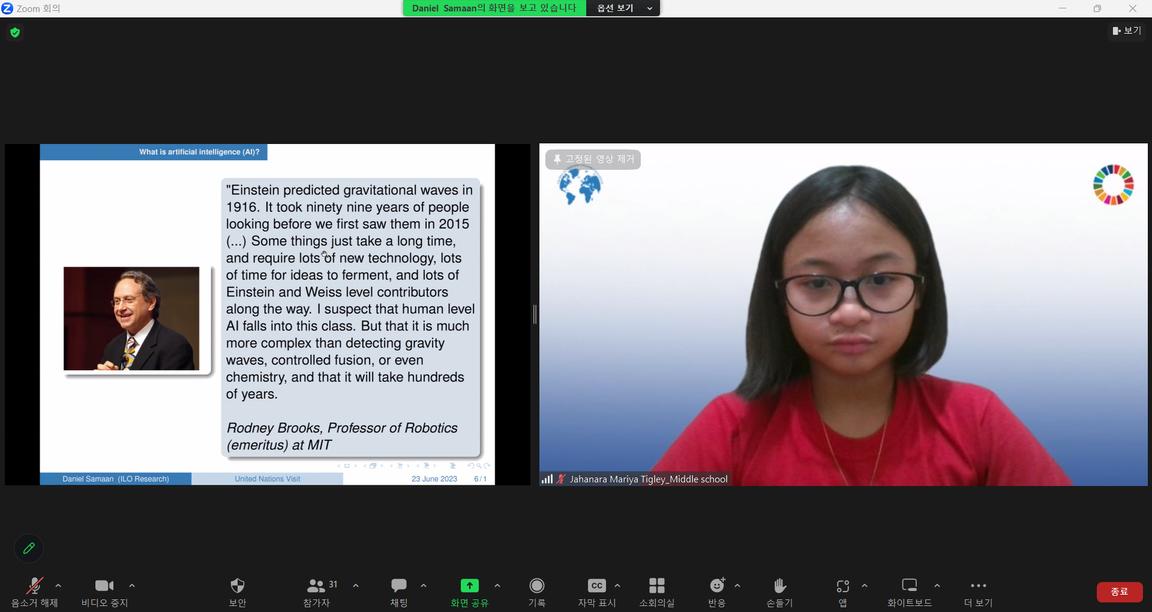
Speaker | Gianna Erin Camaya
StateArgument:
The implementation of AI technology is unlikely to increase the unemployment rate in the short term and,inthelongterm,ithasthepotentialtocreatemorejobopportunitiesthanitdestroys.
Evidence:
AItechnologyisprimarilyaimedatincreasingtheefficiencyandproductivityofworkers,ratherthan replacingthem.Itservesasatooltoenhancetheircapabilitiesandeffectivenessinperformingtasks. Historically, advancements in technology have led to the creation of new industries and jobs. AI has the potential to stimulate innovation, leading to the emergence of new roles and employment opportunities.
dependent on various factors, including workforce
19 Global GLEC Conference Final Report 2023 June
i f i d t i th tl AIt h l
JahanaraMariyaTigley
GiannaErinCamaya
2nd Rebuttal | Negative
Speaker | Nguyen Thanh Mai
StateArgument:
While highly developed countries may experience enhanced economic development through AI, there is asignificantgapbetweenrichandpoorcountriesintermsofAIadoptionanditsimpact.
Evidence:
ResearchconductedbyOxfordUniversityindicatesthatoverhalfthejobsindevelopingcountriesare vulnerable to automation by AI in the coming years, highlighting the potential impact on employmentintheseregions.
The gap between rich and poor countries in terms of AI adoption and access to technology can further exacerbate existing economic inequalities, as highly developed countries may have more resourcesandcapabilitiestoleverageAIforeconomicdevelopment
WhileAIexcelsincomputationalanalysis,dataprocessing,andpatternrecognitiontasks,itstilllacks thecapabilitiesforcomplextasksthatrequirecreativity,criticalthinking,andempathy
Human expertise remains essential in areas such as innovation, strategic decision-making, interpersonalinteractions,andtasksthatrequirenuancedjudgment,whicharenoteasilyreplaceable byAI.
2nd Rebuttal | Affirmative
Speaker | KWON, SEOYUN
StateArgument:
The automation of jobs, particularly in the manufacturing sector, poses challenges and potential human rights violations. However, gatekeeping AI technology and banning its use would further widen the wealthgapbetweenrichandpoorcountries,makingamoreinclusiveapproachtoAIadoptionnecessary.
Evidence:
While the automation of low-skilled jobs can lead to human rights violations, such as child labor, it is importanttoaddresstheseissuesdirectlyratherthanadvocatingforacompletebanonAI.
Gatekeeping AI technology and restricting access to less developed countries can widen the gap betweenrichandpoornations,furtherperpetuatingglobalinequalities.
Banning AI technology would not necessarily address the underlying issues but may hinder opportunitiesfortechnologicaladvancementsandtheirpotentialbenefits
20 Global GLEC Conference Final Report 2023 June
InsteadofbanningAI,amoreinclusiveapproachshouldbetakentoensurethatthebenefitsofAIare accessible to all, including measures to address labor rights, provide education and training opportunities,andpromotefairandethicalAIpractices.
The example of Korea's Pyeonghwa Market in the 1970s illustrates the potential adverse impact of rapideconomicdevelopmentonlaborersandworkingconditions.
Final Speech | Affirmative
Speaker | Dayoon Kang
StateArgument:
AI will not harm job prospects and will create new opportunities, leading to a brighter future for everyone.
Evidence:
AI will not replace jobs like teaching, which require emotional intelligence and human connection thatAIlacks
As weak AI, does not possess opinions and is limited in its development, indicating that it will not dominatedecision-makingorunderminehumanautonomy
Examples of existing technologies like Papago and Calculator, which have not caused the disappearance of math or English academies, suggesting that AI will complement rather than replace humanroles.
AI'sintegrationintosocietywillleadtoamoreglobalandfuturisticsociety,fosteringcooperationand advancement.
Final Speech | Negative
Speaker | Ngo Thanh Uyen
StateArgument:
AI has a negative impact on employment, leading to widening economic gaps, vulnerability to unemployment,anddrawinglinesbetweencountries.
Evidence:
Statistics from reputable sources like the International Monetary Fund and Oxford University support the claim that AI will contribute to widening economic hierarchies and vulnerability to unemploymentformillionsofworkers.
AI's ability to learn, maintain, and improve itself allows it to gradually replace human tasks, leading topotentialjobdisplacement.
21 Global GLEC Conference Final Report 2023 June
Transitioning to new jobs requires education and training, which can be challenging in vulnerable countriesandcommunitieswithlimitedresources.
Access to education should be granted regardless of individuals' status or wealth, ensuring equal opportunitiesforallandequippingthemwithskillstocompetewithAI-drivenautomation. While the growth of AI is significant, efforts to regulate and control its influence on employment shouldbegivencarefulconsideration.


To counter the negative impact of AI, directing young generations towards fields related to technology and providing them with quality education can help prepare them for the changing job market.


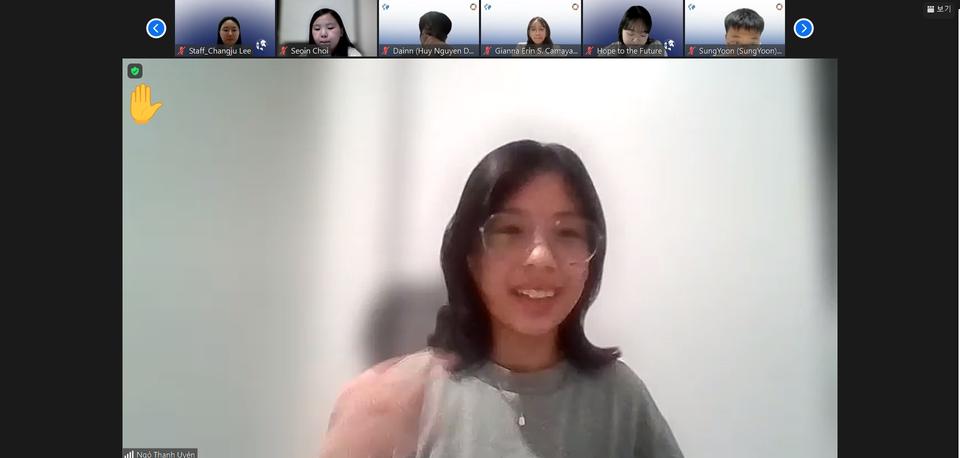

22 Global GLEC Conference Final Report 2023 June
KWON,SEOYUN
DayoonKang
IrenePae
NgoThanhUyen
NguyenThanhMai
Hyeonkyung Ha
Topic(2)
NuclearEnergyTransitionbetweenFranceandGermany
FRANCE
GiaNinhDam
HyeseongJu
JamesBenedictTan
Background
GERMANY
YeYeonLee
YeeunKim
AnhThuPhuong
The topic of the debate centers around the advantages and challenges of nuclear energy transition, with one group representing France and the other group representing Germany Nuclear energy has long been a topic of debate due to its potential benefits and associated risks. Understanding the current status quo and contrasting approaches of France and Germany provides valuable insights into the complexities of nuclear energyasasustainablesolution.
France has been a prominent proponent of nuclear energy, with a significant reliance on nuclear power for electricity generation. Approximately 70% of France's electricity comes from nuclear sources, making it one of the world leaders in nuclear energy. Proponents argue that nuclear energy offers substantial advantages, including low carbon emissions, energy security, and reliable baseload power generation. France's experience showcases the positive impact of nuclear energy on achieving climate goals, as it has significantlyreduceditsdependenceonfossilfuels.
In contrast, Germany has taken a different approach by shifting away from nuclear energy and prioritizing renewable energy alternatives This decision was largely influenced by safety concerns, public opposition, and a desire to transition towards a more sustainable energy mix. Germany's case presents an opportunity to explore the challenges associated with nuclear energy, such as safety considerations, radioactive waste management,andthepotentialrisksofaccidentsordisasters.
By engaging in this debate, students will develop a comprehensive understanding of the advantages and challenges of nuclear energy transition, honing their research skills, critical thinking abilities, and capacity to consider multiple perspectives. They will gain insights into the complexities of energy systems, sustainabilitygoals,andtheroleofnuclearenergyintheglobalenergylandscape
23 Global GLEC Conference Final Report 2023 June
EXPECTED OUTCOMES
Throughthedebate,studentswillhavetheopportunitytodelveintotheadvantagesandchallenges ofnuclearenergytransition,examiningcontrastingviewpointsfromtheperspectivesofFrance andGermany Theywillanalyzethebenefitsofnuclearenergy,suchasitsroleinachievinglow carbonemissionstargets,ensuringenergysecurity,andprovidingbaseloadpowergeneration.
ThegrouprepresentingFrancecanemphasizethepositiveaspectsofnuclearenergy,highlighting France'ssuccessfulimplementationofnuclearpoweranditscontributiontoreducinggreenhouse gasemissions.TheycanshowcasehownuclearenergyhasplayedacrucialroleinFrance'senergy mix,ensuringareliableandsustainablesourceofelectricity.
Ontheotherhand,thegrouprepresentingGermanycanshedlightonthechallengesassociated withnuclearenergy,focusingonsafetyconcerns,wastemanagement,andthepotentialrisks involved.TheycanpresentGermany'sshifttowardsrenewableenergyalternativesasaresponseto thesechallengesandexplorethepotentialbenefitsanddrawbacksofthistransition
Linkages with the SDGs

Nuclear energy, when properly managed, offers a potential solution for providing affordableandcleanenergyonalargescale Bydiscussingthebenefitsofnuclearenergyin terms of low carbon emissions and reliable baseload power generation, students can highlighthowitalignswiththeobjectivesofSDG7

Nuclear energy plays a role in driving innovation and technological advancements in the energy sector By examining the advantages and challenges associated with nuclear energy transition, students can explore how it influences the development of sustainable infrastructureandpromotestechnologicalinnovation
As countries strive to combat climate change and reduce greenhouse gas emissions, exploring the role of nuclear energy becomes crucial Nuclear power, with its low carbon footprint,cancontributesignificantlytoclimateactionefforts.Studentscanemphasizethe positive impact of nuclear energy in mitigating climate change and achieving the targets setforthinSDG13.

24 Global GLEC Conference Final Report 2023 June
Primary Statement | France
Speaker | Gia Ninh Dam
StateArgument:
France, as the delegate supporting nuclear power, presents compelling arguments in favor of nuclear power,emphasizingitslowcarbonemissions,energysecurity,andaffordability.
Evidence:
Nuclear power plants produce energy through a process called nuclear fission, which does not involve burning fuel and results in significantly lower carbon emissions compared to traditional fossilfuelpowerplants.
France, a leader in nuclear power generation, has reduced its dependence on fossil fuels and made significant progress towards its climate change commitments with approximately 70% of its electricitycomingfromnuclearsources
Sweden is another example of a country that has invested in nuclear power to reduce its carbon footprint,withmorethan40% ofitselectricitygeneratedfromnuclearresources
Nuclearpowerprovidesenergysecuritybyofferingareliableandresilientsourceofenergy,reducing dependence on fossil fuel markets, and minimizing the risks associated with geopolitical implications.
The economic aspect of nuclear power is highlighted by the case study of South Korea, which has achieved competitive prices for electricity through investments in nuclear power and the long operationallifespanofnuclearreactors
Primary Statement | Germany
Speaker | Ye Yeon Lee
StateArgument:
The transition to nuclear energy has more drawbacks than benefits, given its limited impact on greenhouse gas emissions, high construction costs compared to renewables, and challenges in nuclear wastemanagement.
Evidence:
Limited impact on emissions: Doubling global nuclear capacity by 2050 would only reduce greenhouse gas emissions by around 4%, which is a small percentage considering the required numberofnewreactorsandthecurrentpaceofconstruction.
25 Global GLEC Conference Final Report 2023 June
High construction costs: Nuclear power plant construction is significantly more expensive than solar orwindpowergeneration Theinitialcosts,includingsafetymeasures,makenuclearenergylesscosteffective,especiallywiththedecliningcostsofrenewables.
Challenges with waste management: The nuclear fuel cycle produces large volumes of long-lasting radioactive waste. The safe disposal of this waste remains unresolved, leading to high costs for j h hbilli fd ll
Rebuttal | France
Speaker | James Benedict Tan

StateArgument:
Emphasizing renewable energy alone as the solution to climate change is ironic, as it can contribute to greenhouse gas emissions. Despite past accidents, nuclear energy should be supported as a reliable and improvedenergysource
Evidence:
The irony of renewable energy: Germany's high greenhouse gas emissions contradict the goal of sustainableenergy,highlightingthelimitationsofrelyingsolelyonrenewables
Learning from mistakes: Nuclear energy plants that have had accidents have reopened, demonstrating the importance of improving safety measures rather than abandoning nuclear energy altogether.
Improved and reliable energy source: Nuclear energy provides a consistent and dependable power supply,addressingtheneedforsustainable,affordable,andreliableenergy.
26 Global GLEC Conference Final Report 2023 June
GiaNinhDam YeYeonLee
Speaker | Gia Ninh Dam
StateArgument:
Nuclearpoweroffersreliablebaseloadpower,highenergydensity,andlong-termcostcompetitiveness.
Evidence:
Reliablebaseloadpower:Nuclearplantsoperateconsistently,meetingconstantenergydemands Highenergydensity:Nuclearpowergeneratessubstantialenergywithasmallfootprint.
Long-term cost competitiveness: Over its operational lifespan, nuclear power becomes costcompetitive.
Speaker | Hyeseong Ju
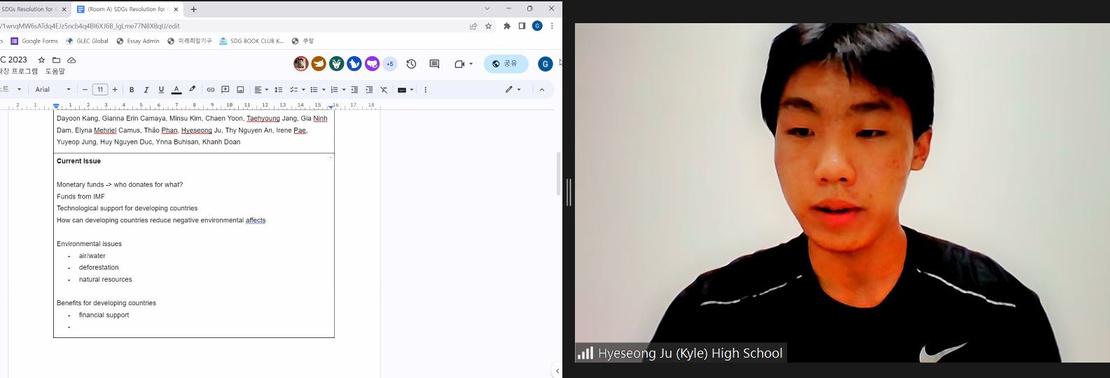
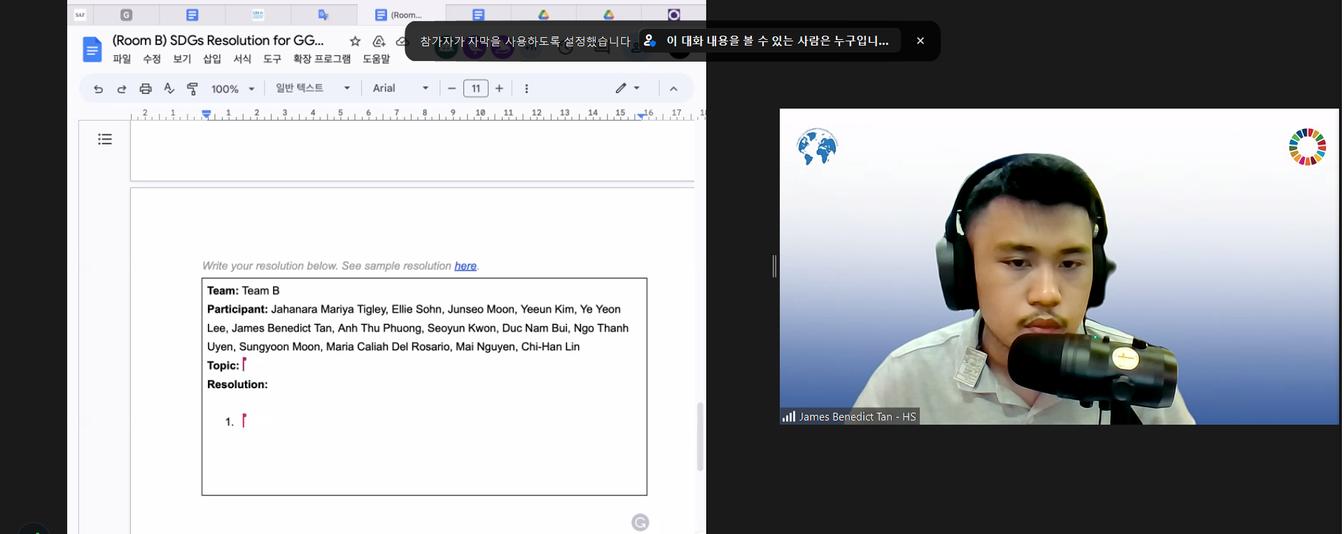
StateArgument:
Long-term costs of nuclear power are cheaper than hydropower or solar power, making it the most costeffectiverenewableenergyoption
Evidence:
Forbes reports that solar power costs $18,000 for every 6 kilowatts produced, with installation prices increasingtoaround$22,800.
Hydropower requires $2,135 per kilowatt produced, resulting in substantial costs when multiplied by estimatedelectricityusage.
Nuclearpowerplantsofferamoreaffordableoptioncomparedtotheinitialpricesofotherrenewable
27 Global GLEC Conference Final Report 2023 June
JamesBenedictTan
HyeseongJu
Counter-Rebuttal | Germany
Speaker | Yeeun Kim


StateArgument:
Germany believes a comprehensive approach to energy transition, focusing on renewables and energy efficiency,ismoresustainablethanheavyrelianceonnuclearpower.
Evidence:
The entire nuclear fuel cycle contributes to carbon emissions, including uranium mining, enrichment,andwastedisposal.
Accidents like Chornobyl and Fukushima demonstrated the significant safety risks associated with nuclear power, posing immediate threats to human lives, and the environment, and causing longtermeconomicandhealthconsequences.
StateArgument:
Investing in renewable energy, despite higher costs, is a necessary and fair investment due to the risks andconsequencesofnuclearpower.
Evidence:
Poor management of radioactive waste from nuclear power poses environmental and health catastrophes.
28 Global GLEC Conference Final Report 2023 June
YeeunKim
AnhThuPhuong
Nuclear accidents can lead to catastrophic breakdowns, nuclear proliferation, and increased death tolls
Medical care costs resulting from nuclear energy can exceed initial investments, straining healthcare systems.
Prioritizing population health over immediate costs is crucial, making renewable energy the responsiblechoice.
Speaker | Ye Yeon Lee

StateArgument:
Investing in renewable energy is a fair and necessary choice for the future, despite higher costs, due to therisksassociatedwithnuclearpower.
Evidence:

Radioactive waste management in nuclear power poses significant medical risks, as the waste cannot befullyrecycledandrequirescarefuldisposaltopreventcatastrophes.
Nuclear power can lead to breakdowns, proliferation, and increased death tolls Medical care costs canexceednuclearpowerinvestments,straininghealthcaresystems.
Prioritizing population health and well-being is crucial, necessitating consideration of renewable energyoverimmediatecostconcerns.
Uranium, the fuel for nuclear power, is limited Reliance on it depletes resources, drives up extraction costs,andharmstheenvironmentthroughthecontaminationofaquaticecosystems.
29 Global GLEC Conference Final Report 2023 June
YeYeonLee
GroupPhoto
Rebuttal | Germany
Speaker | Ye Yeon Lee
StateArgument:
The risks associated with nuclear power, including malfunctions, catastrophic events, terrorist threats, vulnerability to natural disasters and climate change, water dependency, and historical nuclear meltdowns,raiseconcernsaboutitsworthinessdespitepotentialbenefits.
Evidence:
Nuclear power plants are vulnerable to terrorist attacks, plane crashes, and cyberattacks due to inadequateenclosures.
Severe accidents in reactors and fuel stores have severe consequences, as seen in Fukushima and duringconflicts.
Water-intensive cooling systems make nuclear plants vulnerable to water stress, rising temperatures, andheatwaves,riskingmeltdownsandthereleaseofradioactivematerials.
Past meltdowns like Three Mile Island, Chornobyl, and Fukushima highlight the environmental and healthimpacts,necessitatingmassevacuationsandincurringsubstantialcosts.
Considering the risks of radiation leaks, mass evacuations, and costly repairs, the viability of nuclear powermustbecarefullyevaluated.
Counter-Rebuttal | France
Speaker | James Benedict Tan
StateArgument:
Germany's emphasis on renewable energy neglects its own flaws and fails to address the main issue of SDG 7 (ensuring access to affordable, reliable, sustainable, and modern energy) while relying on weatherdependentsourcesthatareunreliableduetoclimatechange.
Evidence:
A 2016 study by the United States reported 182,794 human fatalities and $2651 billion in property damagesresultingfrom686accidentsrelatedtorenewableenergyfrom1950to2014.
The emphasis on renewable energy is problematic because it relies heavily on weather conditions, whichareincreasinglyuncertainduetotheeffectsofclimatechange.
Germany's focus on solving the problem of climate change with renewable energy is self-defeating, as renewableenergyitselfcontributestogreenhousegasemissions,exacerbatingtheissue.
30 Global GLEC Conference Final Report 2023 June
Speaker | Gia Ninh Dam
StateArgument:
Nuclearpowerhasmadesignificantadvancementsinsafetymeasures,regulations,andradioactivewaste management,resultinginanexemplarysafetyrecordandensuringitsreliability
Evidence:
Nuclear power has undergone improvements in safety practices and regulations, resulting in enhancedreactordesignsandstricteroversightbyorganizationsliketheNRCandIAEA
The overall safety record of nuclear power has been exemplary, with a remarkably low number of accidentscomparedtothesignificantnumberofreactorsoperatingglobally Well-established practices for radioactive waste management, such as secure storage and continuous researchintoadvancedtechnology,ensurethereliabilityandsustainabilityofnuclearpower
Speaker | Hyeseong Ju
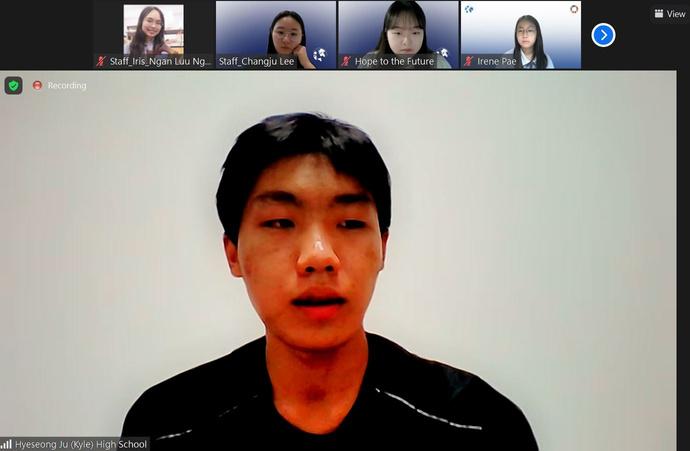
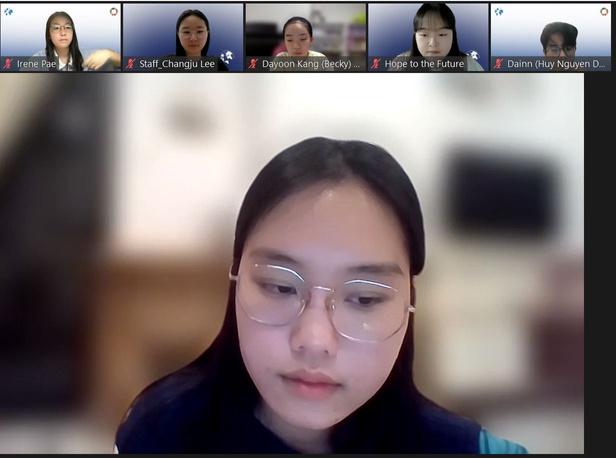
StateArgument:
Both nuclear power plants and renewable energy sources have negative environmental impacts. It is crucial to consider the long-term energy supply they offer while recognizing that hydropower and solar energycancauseecosystemdamageandpollutionrespectively.
Evidence:
Hydropower plants, a renewable energy source, can cause damage to ecosystems and pollution if not managedproperly
The construction and materials used in solar energy, another renewable source, can release harmful chemicalsintotheenvironmentifnothandledcarefully
It is important to consider the long-term energy supply that both nuclear power plants and renewables can offer, weighing their environmental impacts against their contribution to sustainable
31 Global GLEC Conference Final Report 2023 June
GiaNinhDam
HyeseongJu
Final Statement | Germany
Speaker | Anh Thu Phuong

StateArgument:
Germany opposes nuclear power due to health risks, and proliferation concerns, and advocates for renewableenergyasasaferalternativeinvestmentforthefuture.
Evidence:
Nuclear energy carries risks of potential health issues, including cancer, and the proliferation of nuclearweapons Livingnearnuclearpowerplantscanexposepeopletogreaterdangersandnegativeeffects. While renewable energy may have higher initial costs, it avoids the long-term financial and health consequencesassociatedwithnuclearenergy.
Speaker | Yeeun Kim
StateArgument:
Germany chooses renewable energy to avoid nuclear power ' s consequences, prioritize safety, and enhanceenergyresilience.
Evidence:
Renewable energy sources are preferred over nuclear power to minimize the direct consequences on people.
Incidents like Fukushima and Chornobyl have caused deep-rooted anxiety and trauma, impacting individualsandcommunities aims to reduce dependence on a single energy advancements.
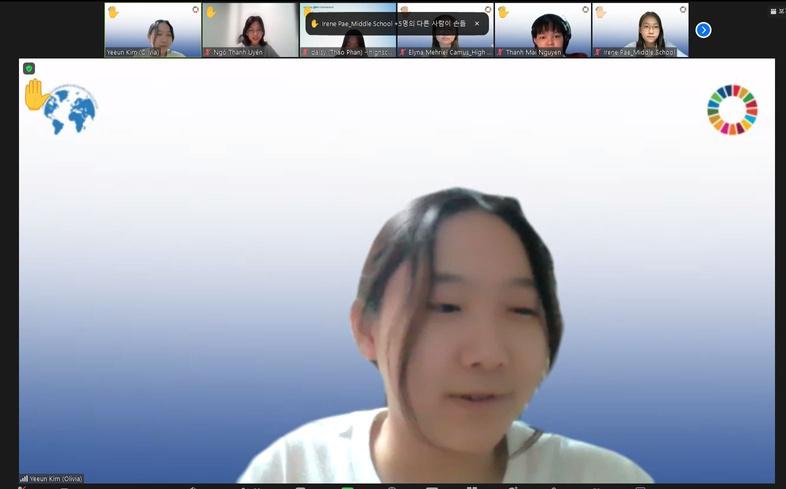
32 Global GLEC Conference Final Report 2023 June
AnhThuPhuong
YeeunKim
Final Statement | France
Speaker | Hyeseong Ju
StateArgument:
Francesupportsnuclearpowerplantsasasustainable,reliable,andaffordablesolutioninlinewithSDG7 goals,addressingenergyneedsandenvironmentalconcernseffectively.
Evidence:
Nuclear power plants have a longer lifespan compared to hydropower facilities, lasting up to 50 to 60 yearswithoutrepairs
Nuclear power plants provide a more reliable source of electricity, requiring less maintenance and contributingtoreducedcarbonemissions
France's reliance on nuclear power, with 76% of its electricity generated from nuclear reactors, demonstratestheireffectivenessandtheabilitytoshareenergywithneighboringcountries
Nuclear power plants offer affordability, as demonstrated by France's use of nuclear energy during the 1973 oil shock, providing an alternative to expensive oil purchases and ensuring energy productionforitscitizens.
33 Global GLEC Conference Final Report 2023 June
SDGs Discussion

Global GLEC Conference
Background
BalancingEnvironmentalResponsibilityandDevelopment
The topic of balancing environmental responsibility and development is a critical and complex issue that requires careful consideration and discussion It stems from the realization that while industrialized nations have achieved significant economic growth, this growth often came at the expense of environmental degradation On the other hand, developing countries face the challenge of meeting their developmental needswhilestrivingtominimizetheirimpactontheenvironment.
Over the years, industrialization has led to the depletion of natural resources, increased pollution levels, and contributed to climate change As the global community recognizes the urgent need to address these environmental challenges, the Sustainable Development Goals (SDGs) were established by the United Nations as a comprehensive framework for achieving sustainable development by 2030 The SDGs encompass a wide range of interconnected goals, including those related to poverty eradication, environmentalprotection,andeconomicdevelopment
However, the question arises as to whether developed countries, given their historical contributions to environmental degradation, should take a leading role in restricting the development of developing nations in the name of the SDGs. This dilemma brings forth ethical implications and raises concerns about equity, fairness,andtherighttodevelopment.
The discussion on balancing environmental responsibility and development at the youth level is crucial for several reasons. Firstly, young people represent the future leaders and decision-makers who will inherit the consequences of past and present actions Engaging them in such discussions fosters their understanding of the complexities involved and encourages them to become active participants in shaping a sustainable future Secondly, by providing a platform for young individuals to explore and debate this topic, we empower them to develop critical thinking skills, consider multiple perspectives, and propose innovative solutions Their insights and ideas can contribute to the global dialogue on sustainable development, ensuring that the voices of the youth are heard and valued. Lastly, discussing this topic with students at the youth level promotes awareness and action It encourages young people to reflect on their own lifestyles, consumption patterns, and choices, fostering a sense of responsibility towards the environment. By empowering them to become agents of change, we can maximize their potential to drive sustainable developmentwithintheircommunitiesandbeyond.
Through this SDGs discussion, we aim to provide a platform for young minds to delve into the ethical implications and potential solutions for balancing environmental sustainability with the development needs ofdevelopingnations.
35 Global GLEC Conference Final Report 2023 June
LinkageswiththeSDGs
Balancing environmental responsibility and development is crucial for poverty eradication By addressing environmental challenges sustainably, we can ensure that development efforts benefit the most vulnerable populations, reducing poverty and inequality

Achieving a balance between environmental responsibility and development involves promoting the use of clean and renewable energy sources. Encouraging the adoption of affordable and clean energy technologies can help meet the energy needs of developing nationswhileminimizingtheirenvironmentalimpact.

Balancing environmental responsibility and development requires fostering sustainable industrialization and promoting innovation in infrastructure. By adopting eco-friendly practices and technologies, developing nations can achieve economic growth while minimizingtheirecologicalfootprint.

The topic of balancing environmental responsibility and development is intrinsically linked to addressing climate change Developing nations, as well as industrialized countries, must take collective action to mitigate greenhouse gas emissions, adapt to climatechangeimpacts,andpromotesustainablepractices

Striking a balance between environmental responsibility and development involves preserving and restoring terrestrial ecosystems. By implementing sustainable land management practices, protecting biodiversity, and combating deforestation, we can ensurethelong-termhealthofecosystemsandpromotesustainabledevelopment.
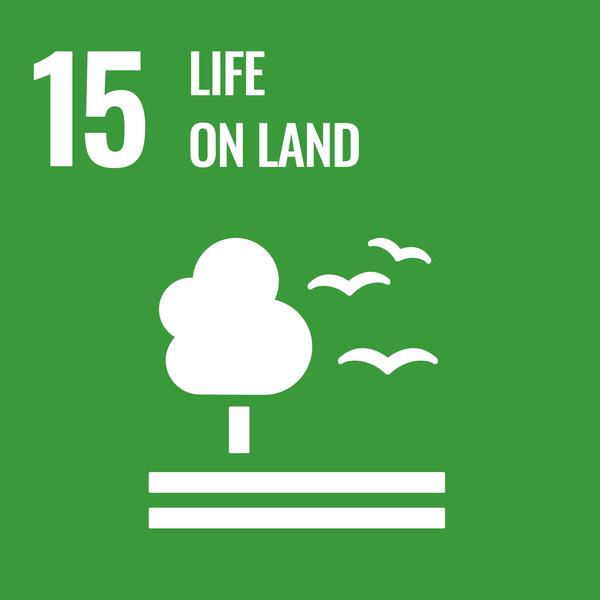
The ethical implications surrounding the topic of balancing environmental responsibility and development highlight the importance of strong institutions and inclusive decisionmaking processes Fostering transparent governance, promoting access to justice, and ensuring meaningful participation of all stakeholders can help navigate potential conflicts andachievesustainableoutcomes

36 Global GLEC Conference Final Report 2023 June
Team1.
Participants
IrenePae
HuyNguyenDuc
HyeseongJu
GiannaErinCamaya
DayoonKang
Henry(YuyeopJung)
GiaNinhDam
ElynaMehrielCamus
ThaoPhan
SeoinChoi
KhanhDoan
Resolution:
ACKNOWLEDGEStheneedsofdevelopingcountriesinfinancialsupport;
CALLSFORthesharingofresources,technologies,andknowledgeamongbothdevelopedanddeveloping nations;
EMPHASIZEStheimportanceofdevelopedcountriessupportingthedevelopingcountries;
FURTHER REQUESTS all nations, regardless whether developing or developed, to contribute towards financialallocations;
AUTHORIZES international organizations to further supervise and operate resource distribution programs;
REMINDSallnationsoftheneedinequityinfinancialandsupportprovision
INTRODUCES the lend and loan system towards all nations that have received financial, resource, and educationalsupport;
FURTHER RECOMMENDS the debts of developing countries to be paid back after developing countries havedevelopedintodevelopedcountries
URGESthedevelopedcountriestogathermoneytosupportdevelopingnations;
REQUESTS developed countries to extend their help to developing countries through cooperation and globalconnection;
URGES the international communities to establish dedicated funds to provide financial support, especiallyfortheinitiativesregardingenvironmentalsustainability;
37 Global GLEC Conference Final Report 2023 June
Financial Support: 1 2. 3. 4 5. 6. 7. 8. 9 10. 11.
For Developing Countries:
ENCOURAGES developing countries to integrate sustainability considerations into their national developmentsplans,aswellaspoliciesattheinstitutionallevel;
REQUESTS the United Nations and other relevant international organizations to organize the workshops, training programs, especially platforms for knowledge sharing tailored to the needs of developingcountries;
ENCOURAGES developed countries to support the establishment of regional cooperation among developingcountriestoaddresssharedenvironmentalchallengesandpromotesustainabledevelopment;
CALLS UPON the developing countries to create specified plans for their funds to borrow money with liability;
WELCOMES the need to promote eco-friendlier environment through the development of environmentallysustainablefactoriesandproducts;
EMPHASIZES the initiative for developing countries to work on the improvement of their own nations, maximizing the resources they have in order to not solely become dependent on the support they get fromdevelopedcountries;
URGESenvironmentalNGOstooperateindevelopingcountries: Employingworkersindevelopingcountriestoreduceunemployment, Allowingdevelopingcountriestopurchasemachineriesatalowercost Understandthattheyarestillgeneratingincomefromlocatingthere;
WELCOMESanyopportunitytolearnneededbythedevelopingcountriesinordertonotrepeatthesame mistake;
EMPHASIZES the importance of environmental issues and education to citizens of developing countries, insuchwaysbutnotlimitedto:
STRONGLY ENCOURAGES developed countries to take responsibility in addressing the environmental damagetheyhavecausedthroughindustrialization;
INTRODUCES developing countries to the resources and technologies that developed countries have usedtoachievetheirowndevelopment.
38 Global GLEC Conference Final Report 2023 June
1.
2.
3.
4.
5.
6.
Newspaper, Socialmedia, Televisionbroadcasts;
1 a. b c. 2 3 a b. c 4. 5.
For Developed Countries:







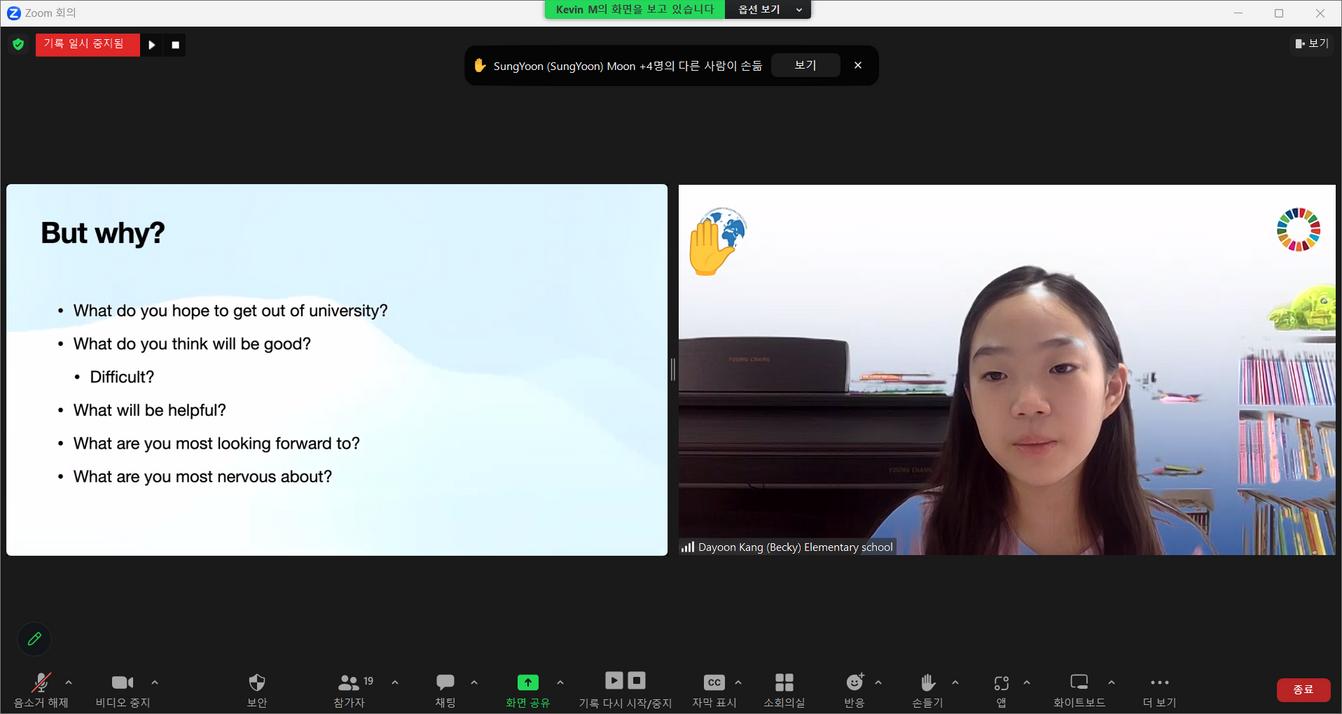 GiannaErinCamaya
Henry(YuyeopJung)
IrenePae
GiaNinhDam
HuyNguyenDuc
HyeseongJu
SeoinChoi
DayoonKang
GiannaErinCamaya
Henry(YuyeopJung)
IrenePae
GiaNinhDam
HuyNguyenDuc
HyeseongJu
SeoinChoi
DayoonKang
Team2.
Participants
JahanaraMariyaTigley
YeeunKim
YeYeonLee
AnhThuPhuong
KWON,SEOYUN
NgoThanhUyen
SungyoonMoon
MariaCaliahDelRosario
NguyenThanhMai
Chi-HanLin
JamesBenedictTan
Resolution:
ACKNOWLEDGESthefactthatallnationsareresponsibleforenvironmentalharms;
RECOGNIZES the distinction between developed and developing countries according to the Kyoto Protocol;
APPEALStothedevelopingnationduetotheindustrializationintheircountries;
NOTICEStheimpactofthecarbontax;
APPROVES that developed countries should take more responsibility for factory constructions in developingcountries;
ADOPTS governmental policies to promote sustainable industrial practices and environmental responsibility;
RECALLSthegoalsestablishedintheParisAgreement;
SUPPORTStheLDCs(LeastDevelopedCountries)infavoroftheirsocioeconomicgrowth;
EMPHASIZES the fact that the developed countries have to bear the responsibility to support the LDCs fortheireconomicgrowth;
STRONGLY BELIEVES that every country has to acknowledge and try to reduce its own impact on the globalcarbonfootprintregardlessofthesizeoftheimpact;
ENCOURAGES that developed countries collaborate with developing countries in promoting sustainable developmentthroughknowledgesharing,technicalcooperation,andpartnerships;
DIRECTS developed countries to collaborate with LDCs in order to balance economic development and environmentalresponsibility;
40 Global GLEC Conference Final Report 2023 June
1. 2. 3. 4 5. 6. 7. 8 9. 10. 11. 12.
STRONGLY BELIEVES that every country has to acknowledge and try to reduce its own impact on the globalcarbonfootprintregardlessofthesizeoftheimpact;
ENCOURAGES that developed countries collaborate with developing countries in promoting sustainable developmentthroughknowledgesharing,technicalcooperation,andpartnerships;
DIRECTS developed countries to collaborate with LDCs in order to balance economic development and environmentalresponsibility;
CALLS FOR multinational companies to take responsibility for their respective factories in developing countries;
COMPELSeverynationtotryitsbesttostopenvironmentalharm;
DECLAREStheneedforeverynationtocontributetoenvironmentalharmsandbetterindustrialization;
ENDORSES that environmental protection should be given the same priorities and attention as industrialization;
STRESSES the developing countries that their environments are getting harmed because of the factories builtbydevelopedcountries;
REMINDSallnationsandpeoplethatthereisnogoingbackoncetheEarthisdestroyed;
WELCOMES new resolutions for climate change and takes actions to tackle climate change caused by rapidindustrialization;
SUGGESTSdevelopedcountriestosharetheirknowledgeandtechnologywithdevelopingcountries;
CONCERNStheenvironmentalgapsacrossthedevelopedanddevelopingcountries;
DRAWSTHEATTENTIONtothemediaofeverycountryaboutenvironmentalresponsibility;
CALLSOUTtheirresponsibleactionsthatnegativelyimpactclimatechange;
INVITES non-governmental organizations to form partnerships with developing and developed countriesinordertostrengthenyouthinvolvement;
ESTABLISHES mechanisms to monitor progress towards achieving the SDGs, including regular reporting andreviewprocessesatthenationalandinternationallevels
41 Global GLEC Conference Final Report 2023 June
10. 11. 12. 13. 14. 15. 16. 17. 18 19. 20. 21 22. 23 24. 25.




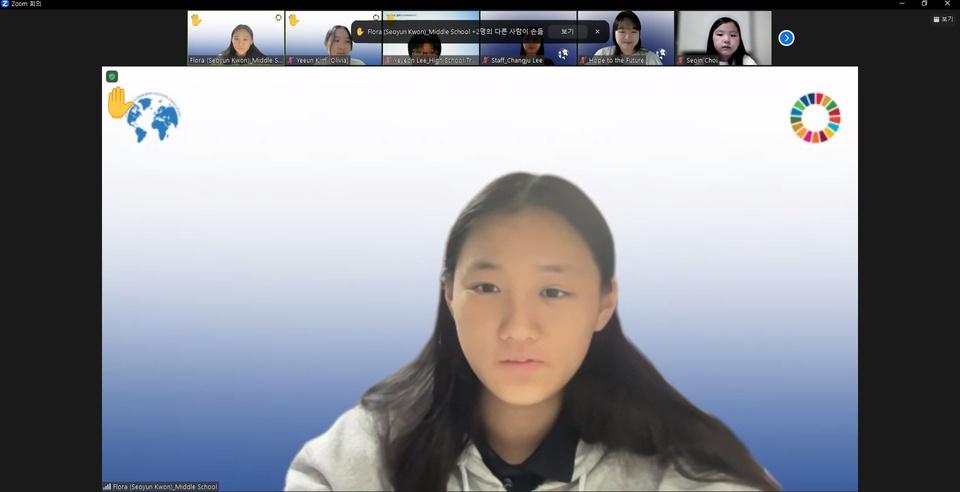
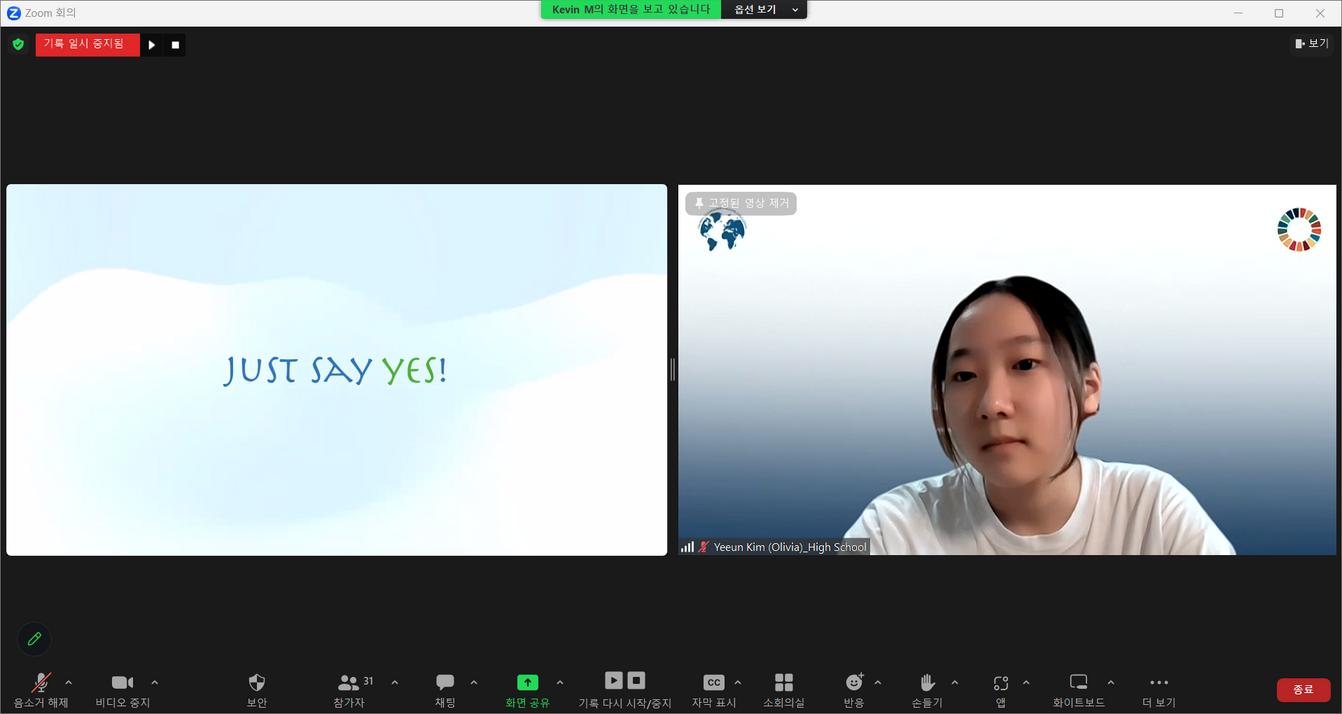


42 Global GLEC Conference Final Report 2023 June
JamesBenedictTan
NgoThanhUyen
JahanaraMariyaTigley
NguyenThanhMai
KWON,SEOYUN
YeeunKim
SungyoonMoon
Chi-HanLin
SDGs Presentation

Global GLEC Conference
Team1.
SDG2&HoneyBees
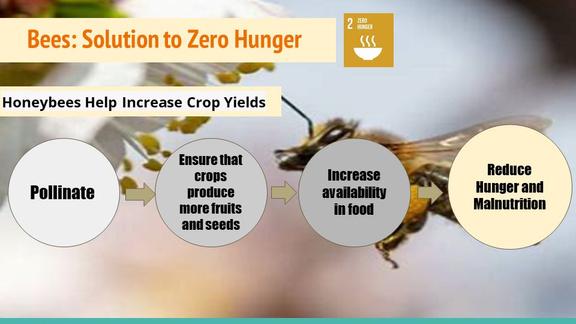
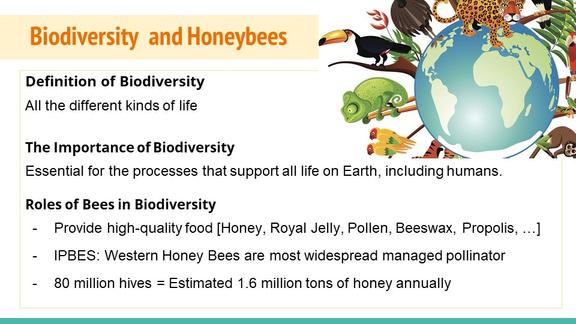



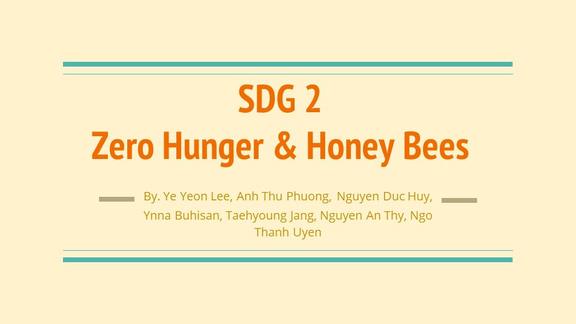
Participants
Ye Yeon Lee
Anh Thu Phuong
Nguyen Duc Huy
Ynna Buhisan
Taehyoung Jang
Thy Nguyen An
Ngo Thanh Uyen
44 Global GLEC Conference Final Report 2023 June


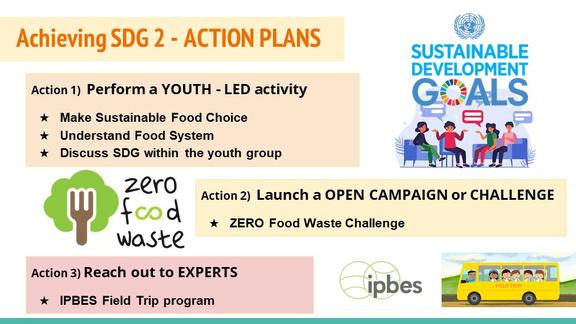
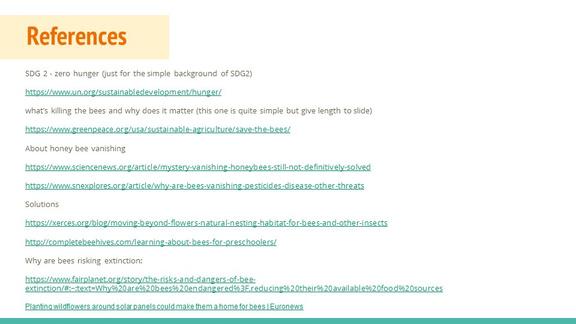
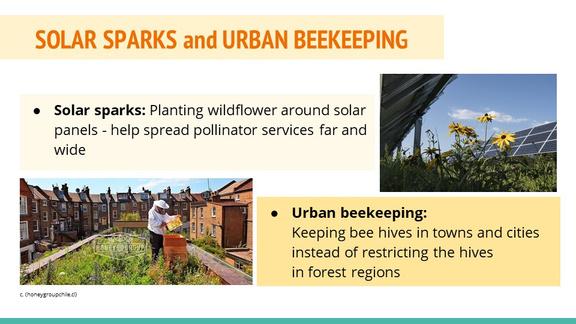
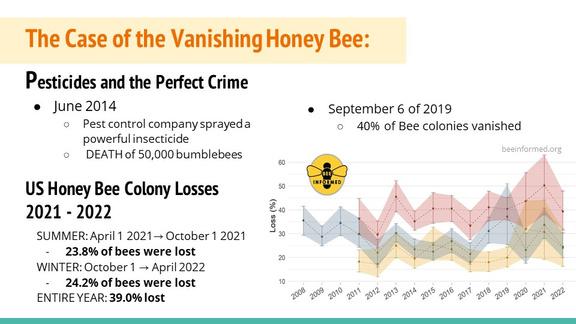
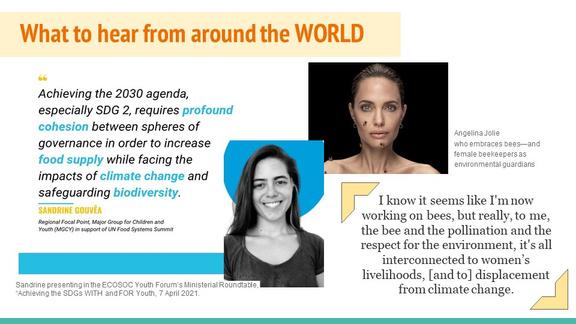

45 Global GLEC Conference Final Report 2023 June

46 Global GLEC Conference Final Report 2023 June
Team2.
SDG11&UrbanDevelopment


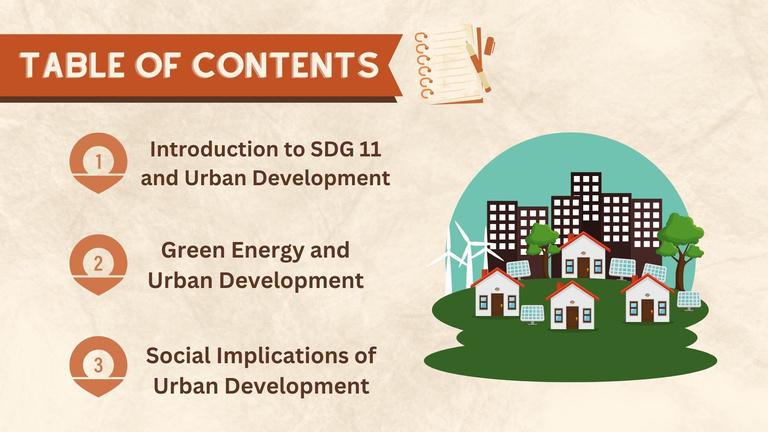
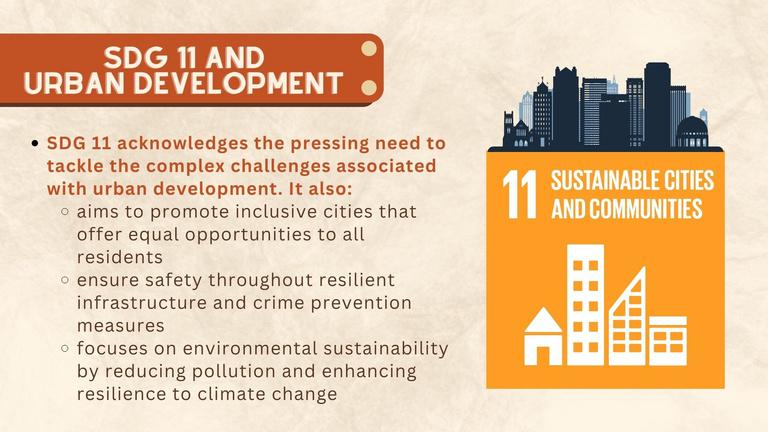


Participants
Elyna Mehriel Camus
Irene Pae
Jahanara Mariya Tigley
Gia Ninh Dam
Maria Caliah Del Rosario
Nguyen Thanh Mai
47 Global GLEC Conference Final Report 2023 June



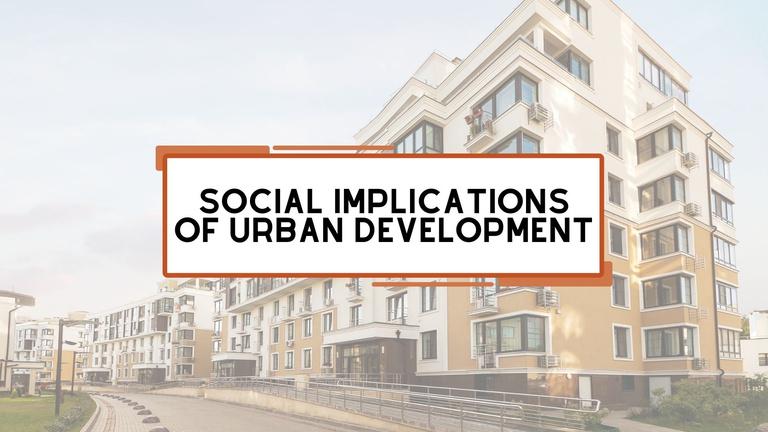
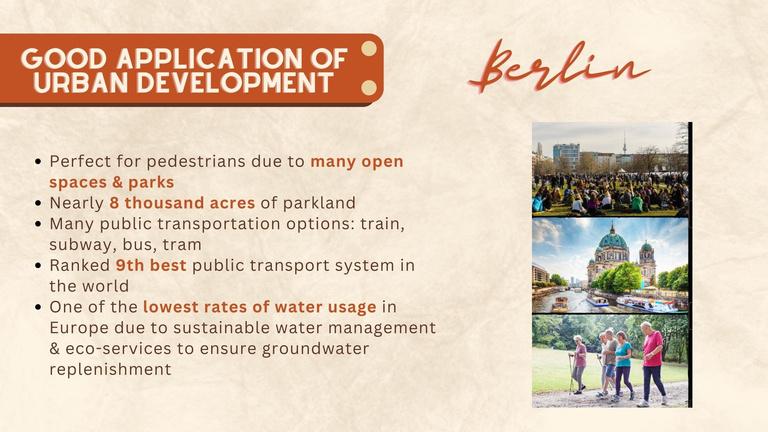



48 Global GLEC Conference Final Report 2023 June



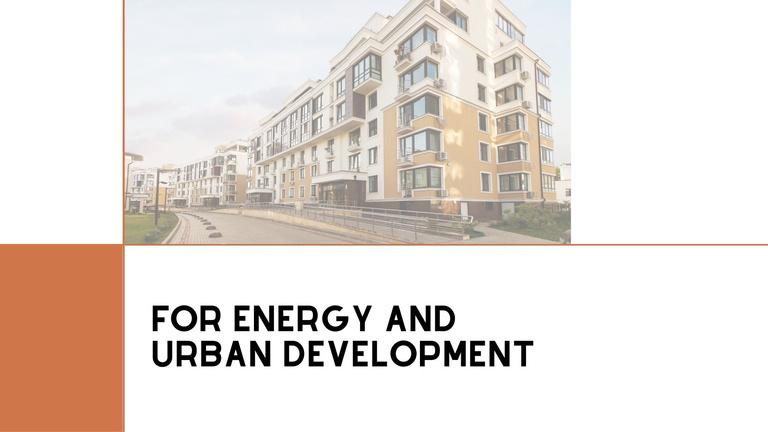



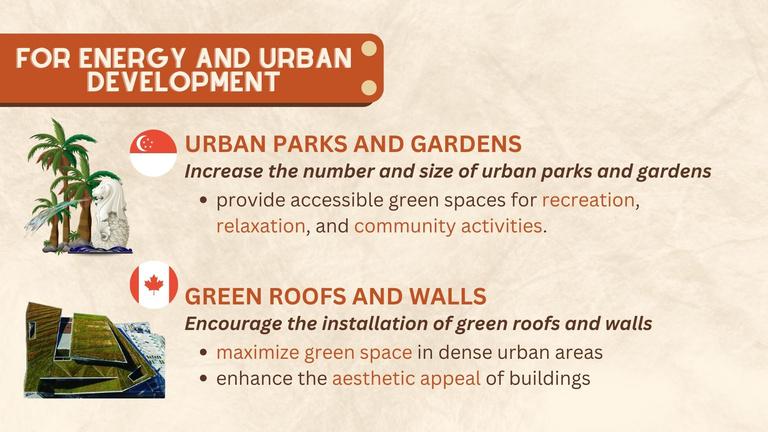
49 Global GLEC Conference Final Report 2023 June

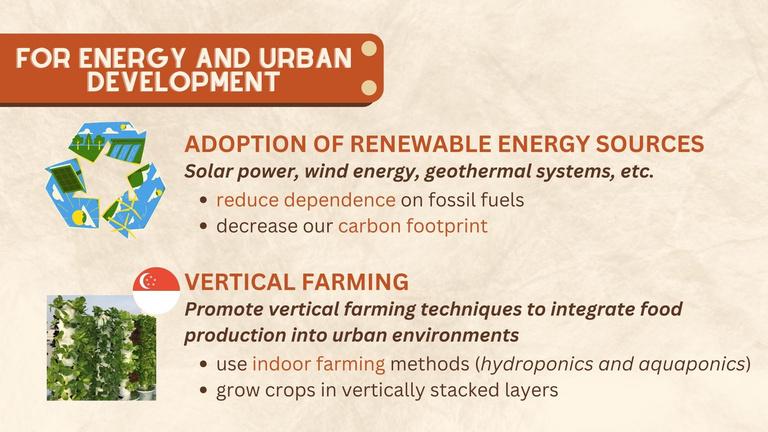



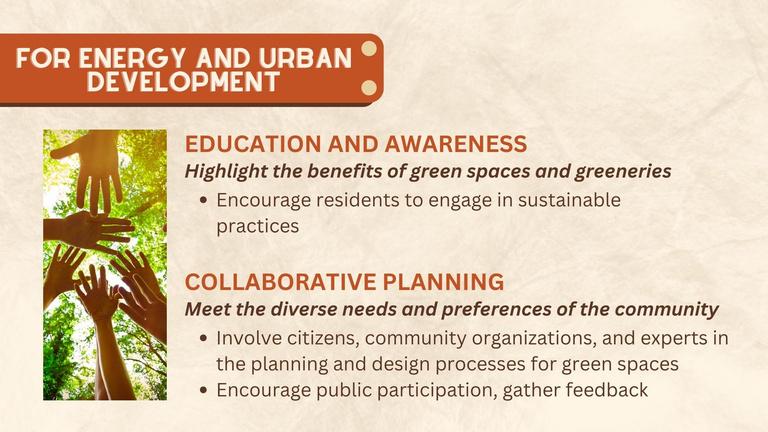


50 Global GLEC Conference Final Report 2023 June



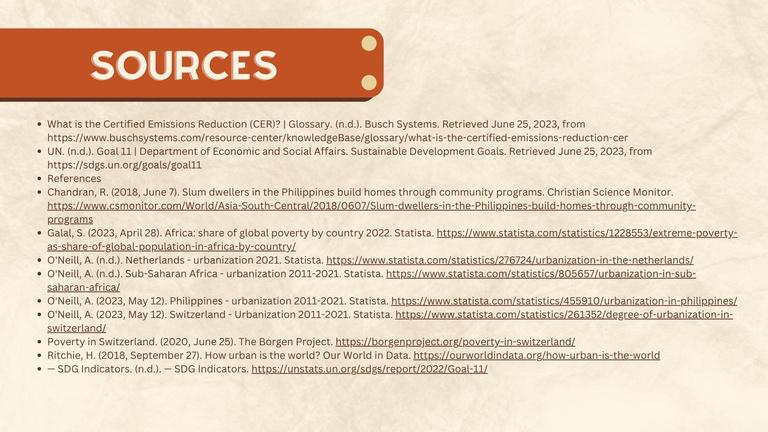
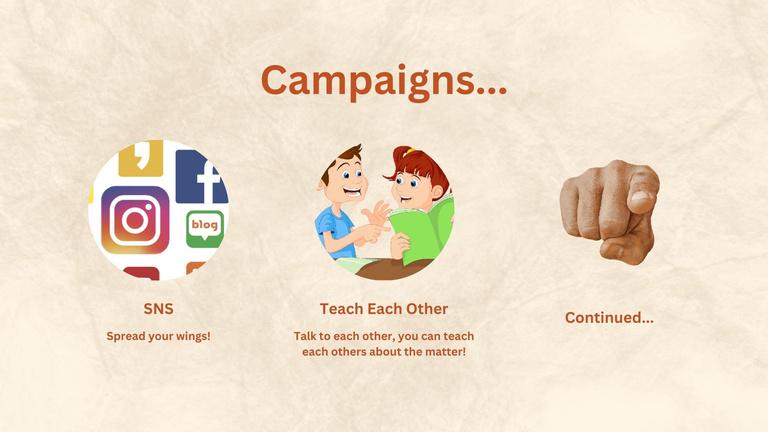

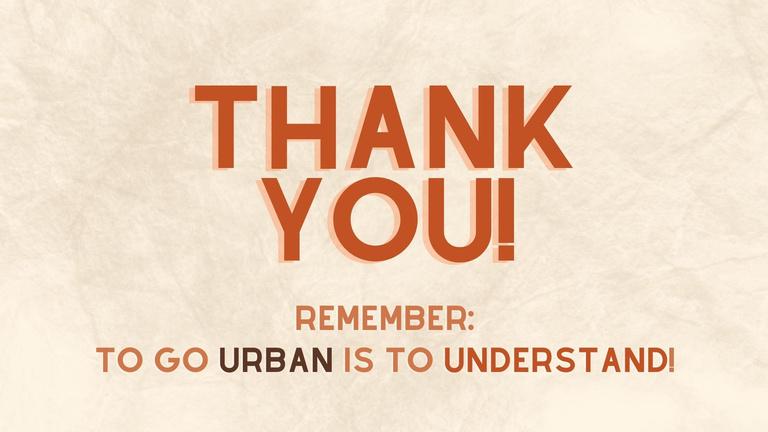
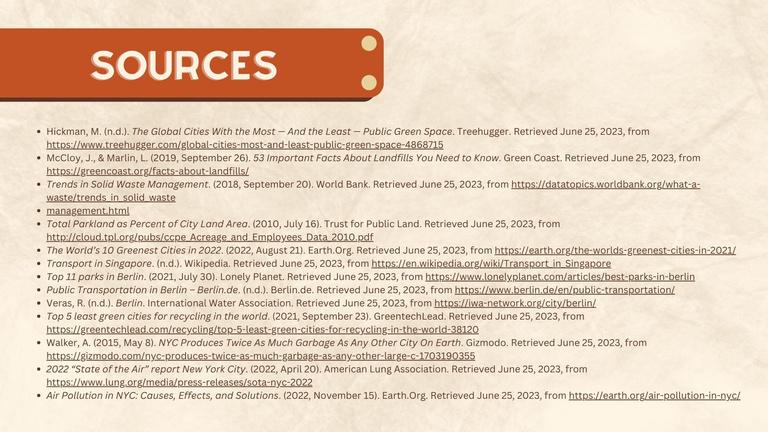
51 Global GLEC Conference Final Report 2023 June

52 Global GLEC Conference Final Report 2023 June
Team3.
SDG12&FastFashion





Participants
James Benedict Tan

Henry (Yuyeop Jung)
Gianna Erin Camaya
KWON, SEOYUN
Thao Phan
Hyeseong Ju
53 Global GLEC Conference Final Report 2023 June


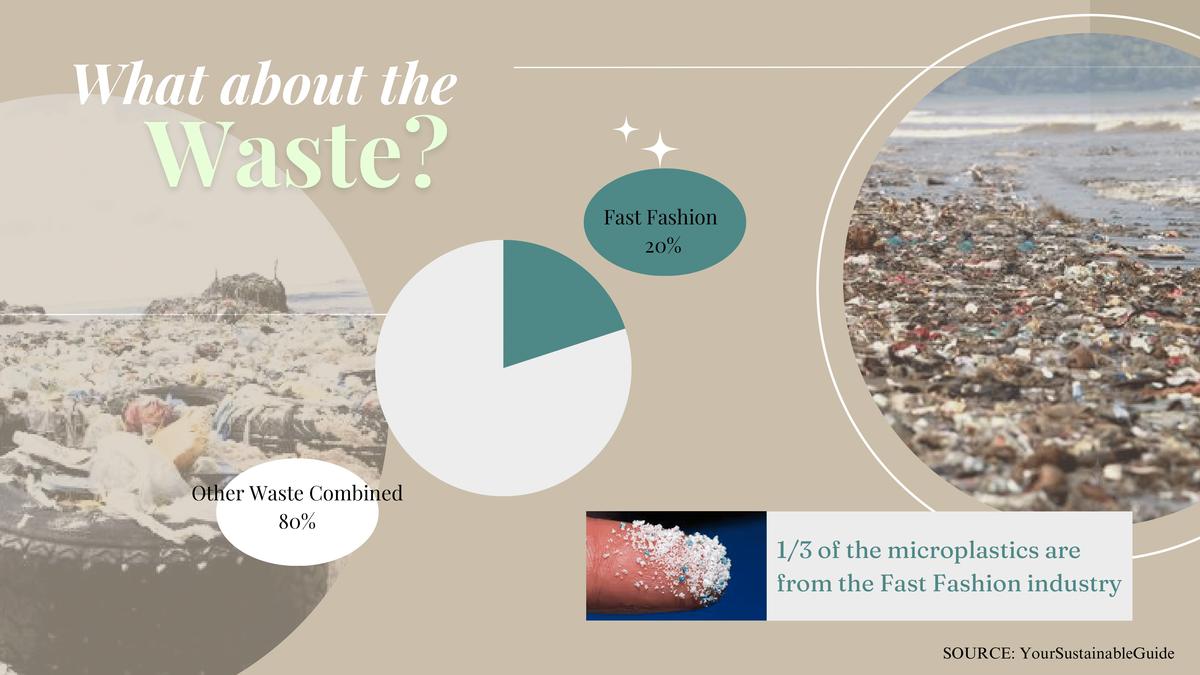

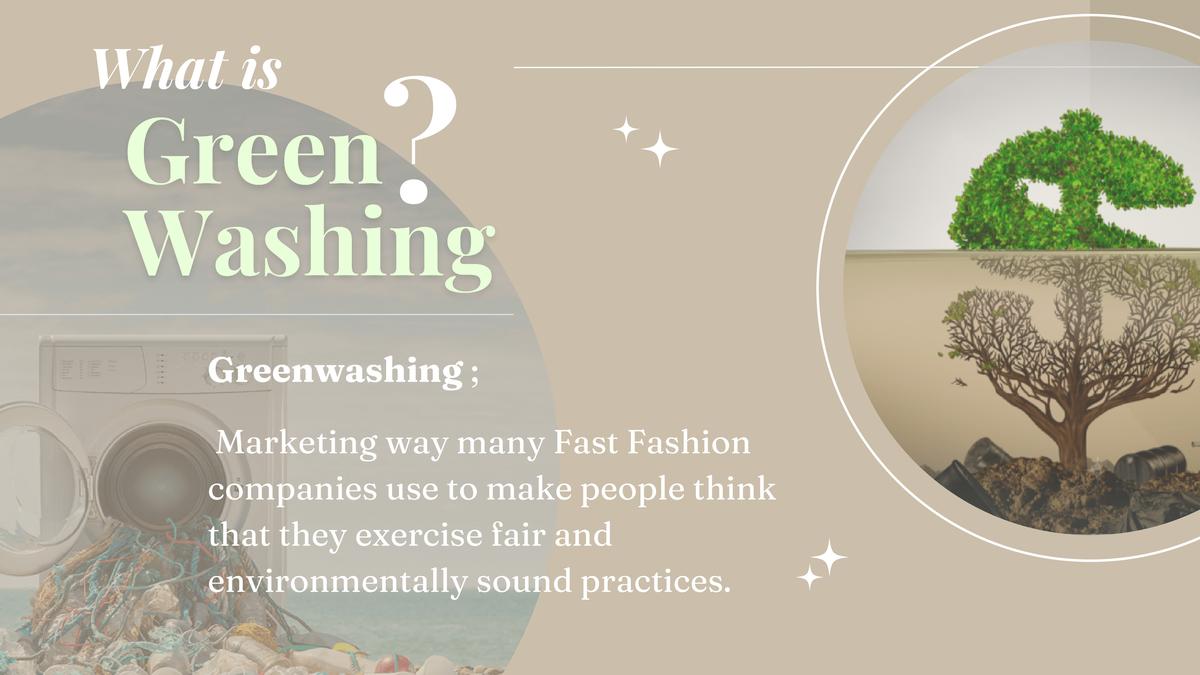
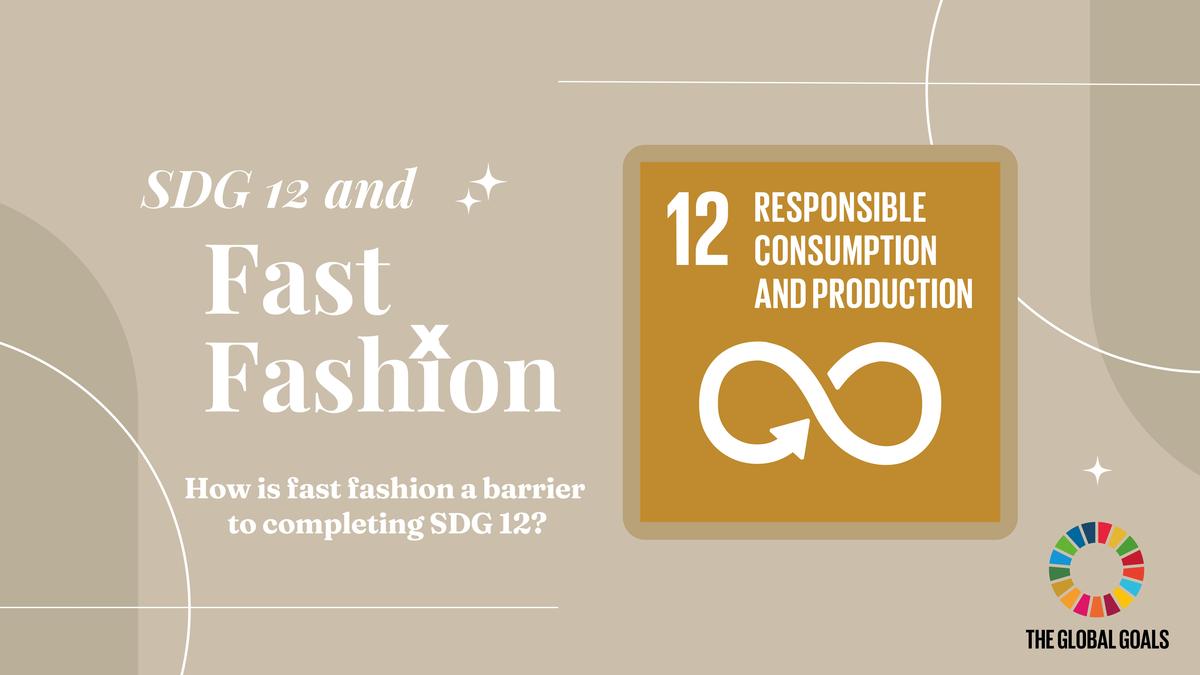


54 Global GLEC Conference Final Report 2023 June

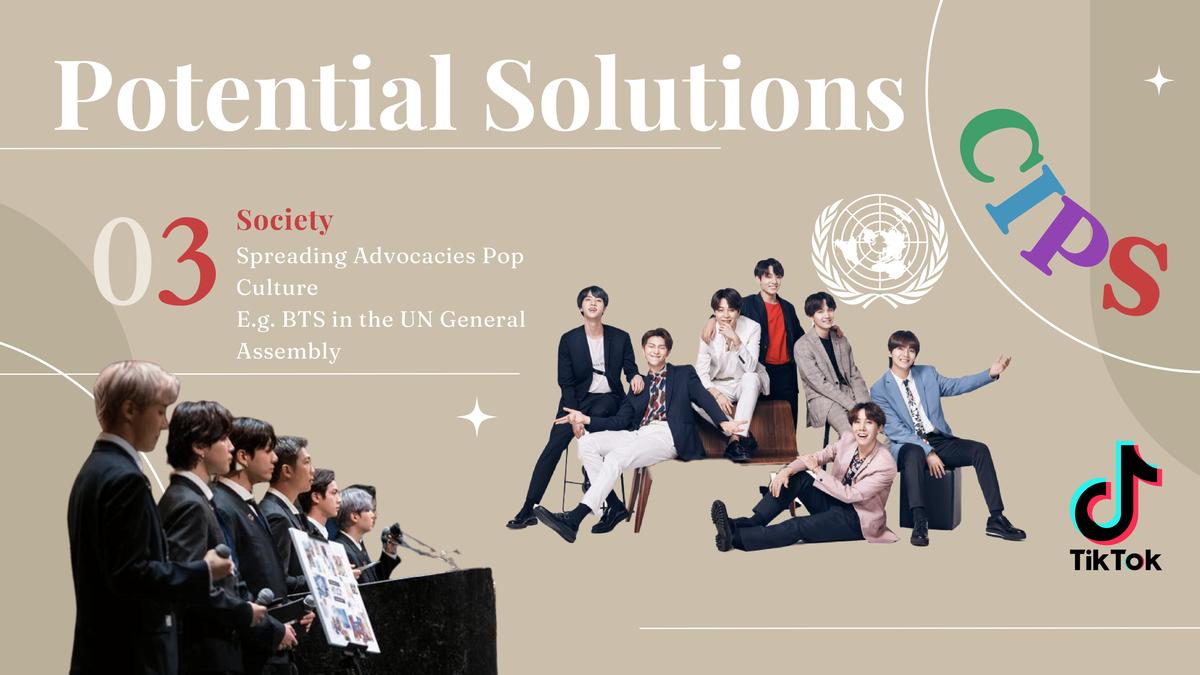
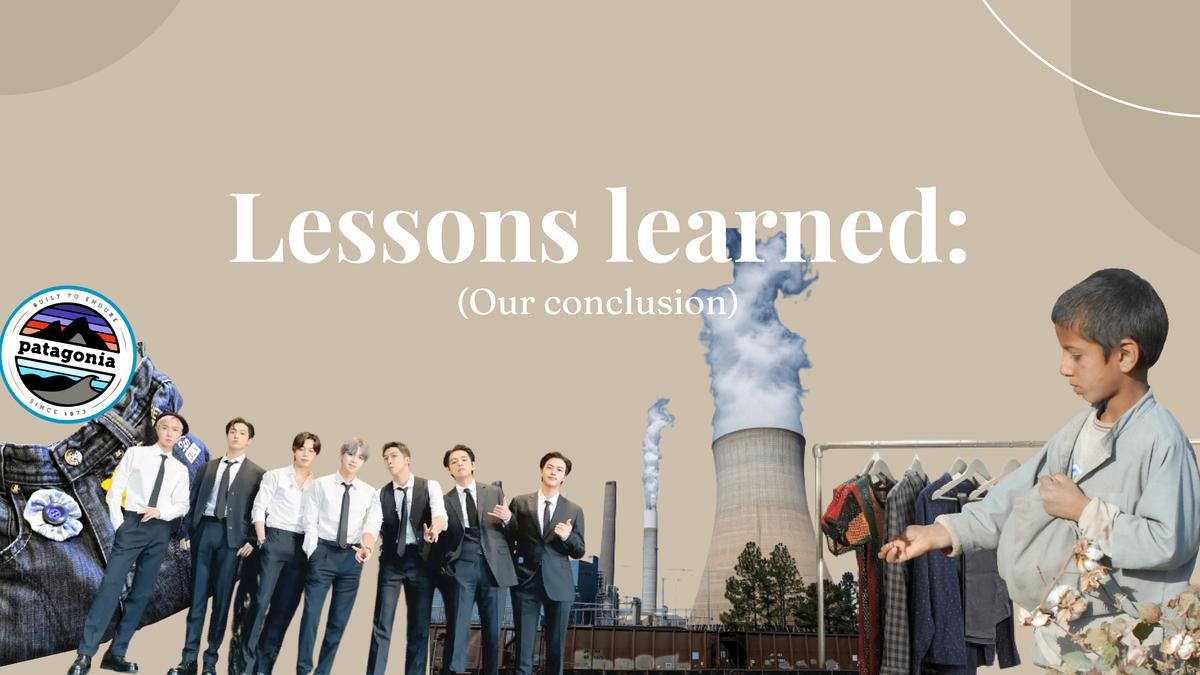
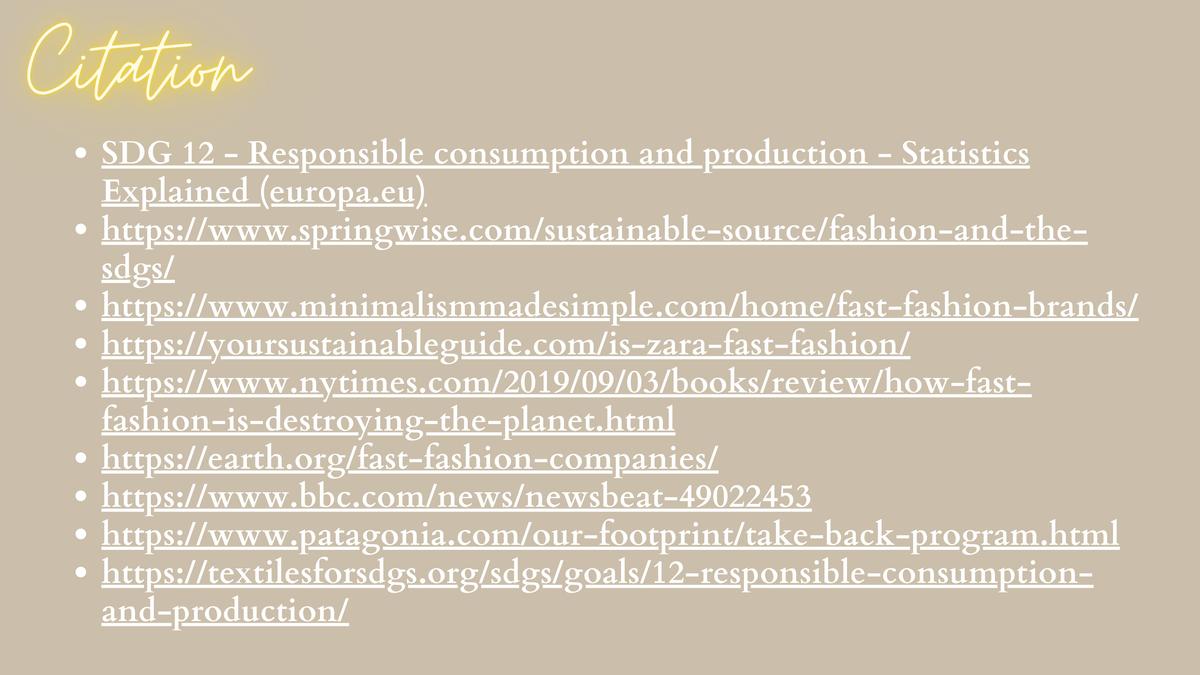


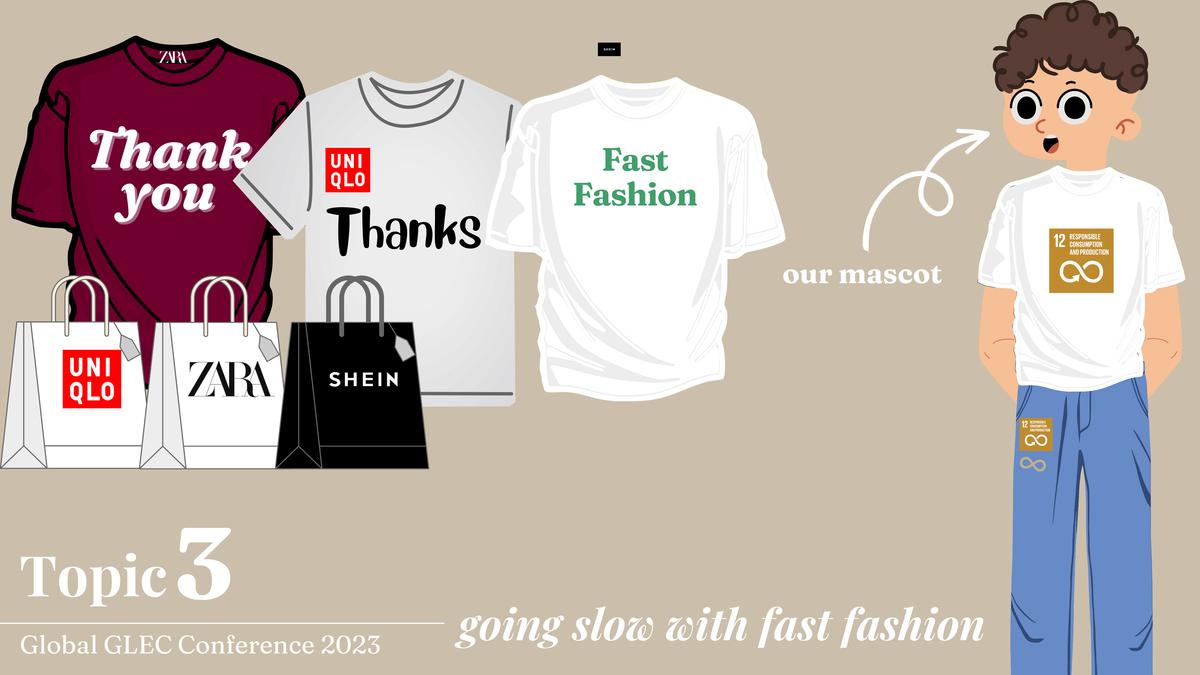
55 Global GLEC Conference Final Report 2023 June

56 Global GLEC Conference Final Report 2023 June
Team4.
SDG16&Refugees
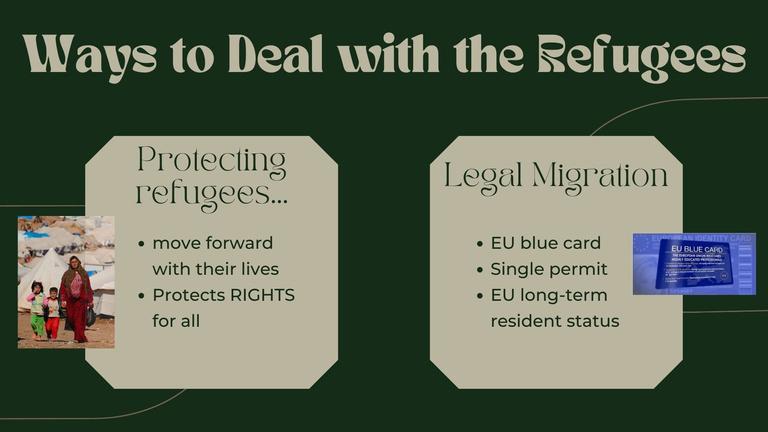




Participants
Sungyoon Moon

Dayoon Kang
Chi-Han Lin
Yeeun Kim
Marie Isabelle Ferrer
Khanh Doan
57 Global GLEC Conference Final Report 2023 June

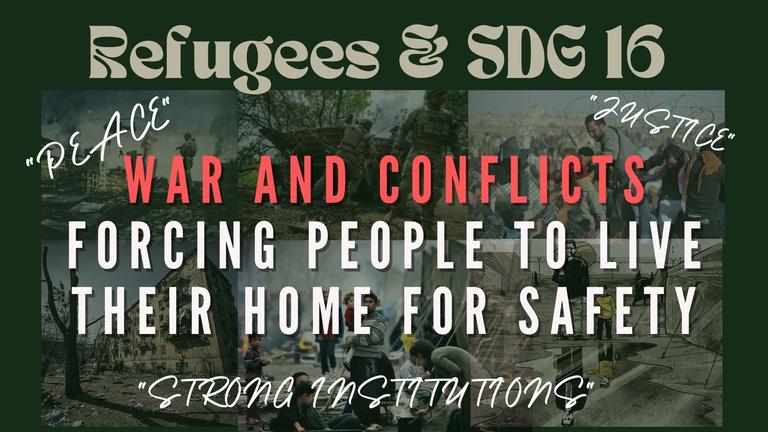
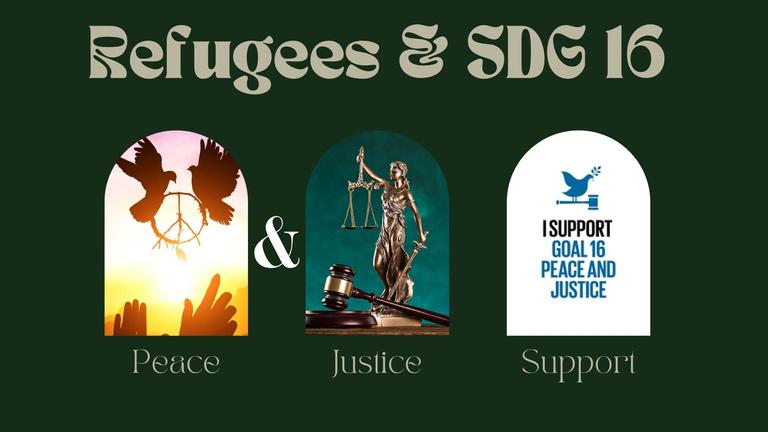

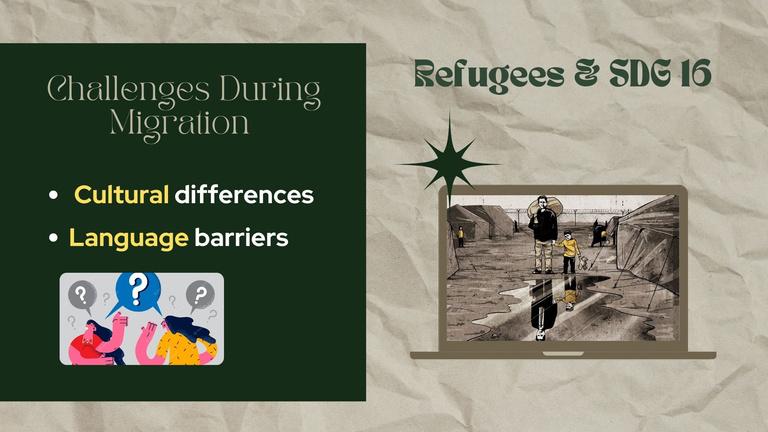
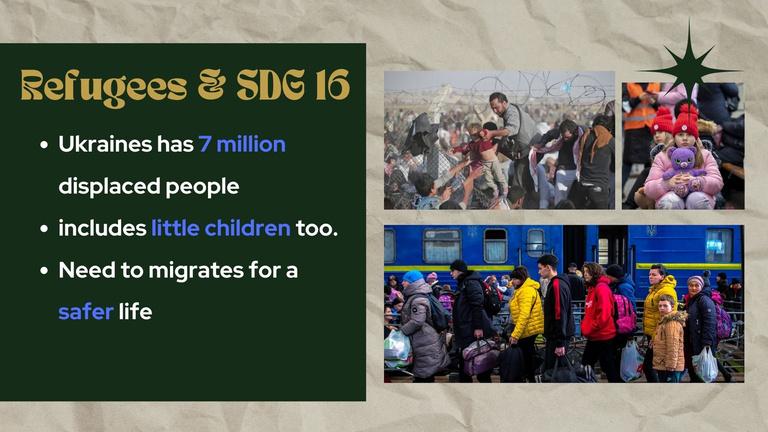


58 Global GLEC Conference Final Report 2023 June





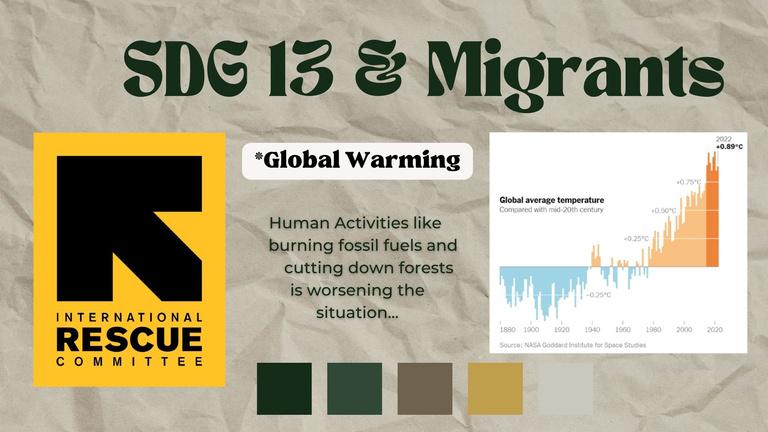
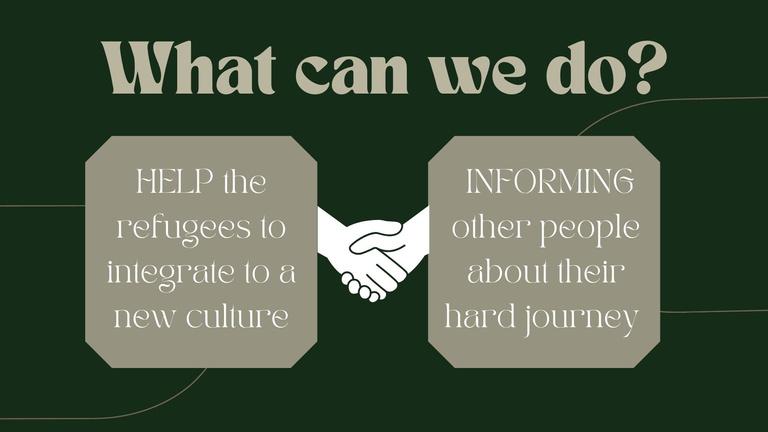

59 Global GLEC Conference Final Report 2023 June

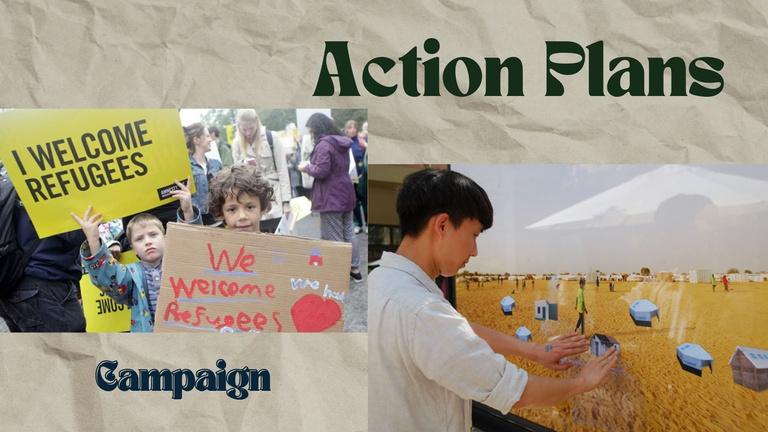
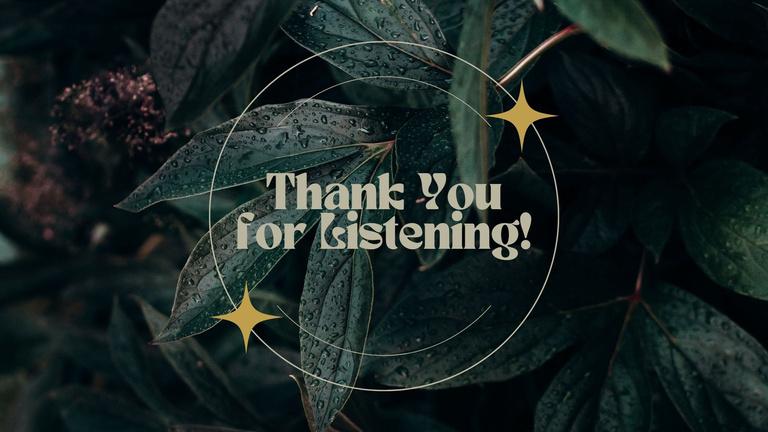


60 Global GLEC Conference Final Report 2023 June
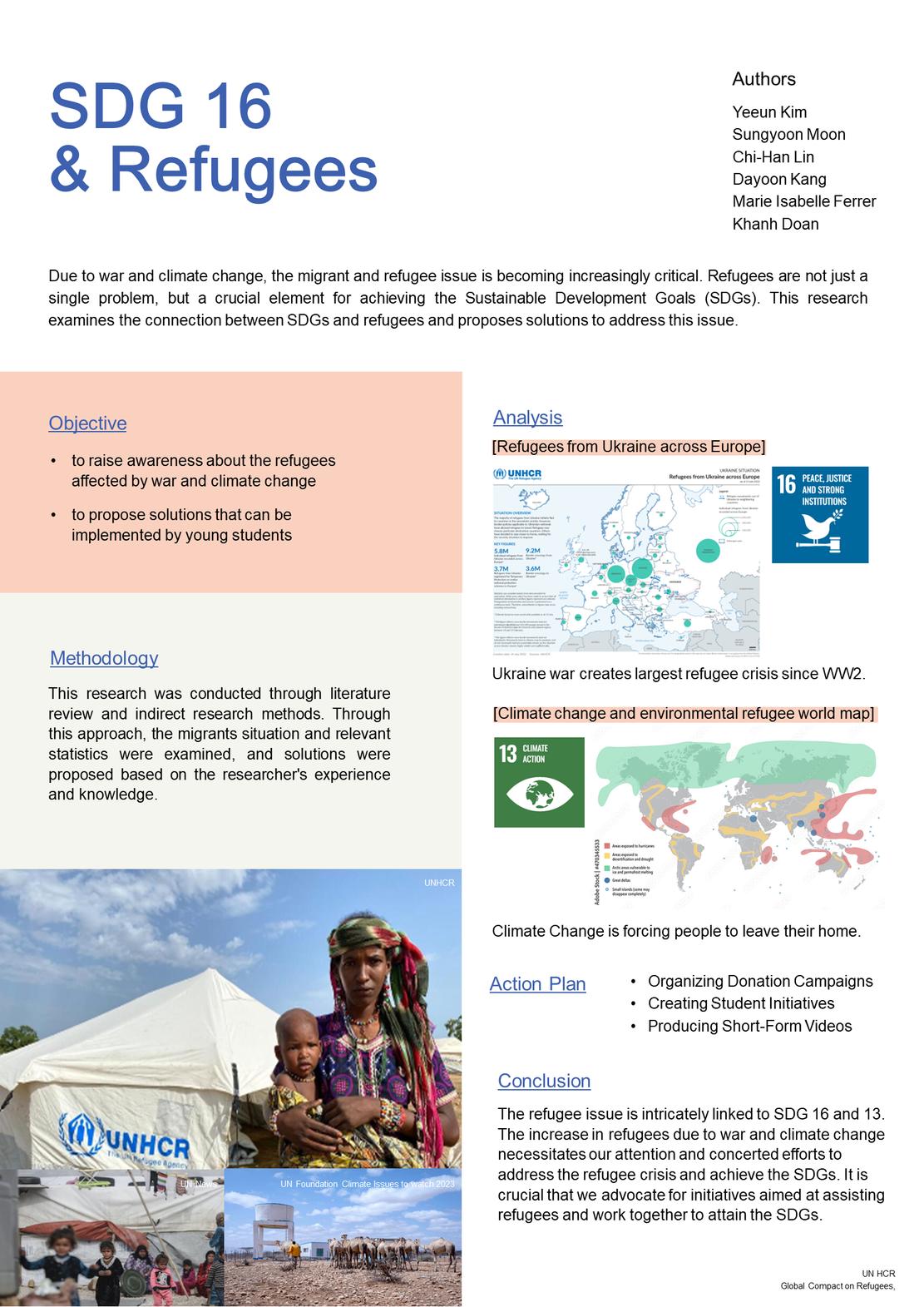
61 Global GLEC Conference Final Report 2023 June

Global GLEC Conference
Individual Essay
Toanalyzethestrengthandlimitation oftheSustainableDevelopmentGoals frameworkcomparedtothe MillenniumDevelopmentGoals frameworkinsolvingglobalcrises.

The Millennium Development Goals (MDGs) was officially shifted to the Sustainable Development Goals (SDGs) by 193 countries in the United Nations as a result of achieving a framework that gives higher global impactsinbattlinghumanity'sbiggestchallenges.TheSDGstargetseverycountryincludingdevelopingones instead of focusing on developed ones, the framework also focuses on the quality of the solutions such as in education rather than focusing on the quantity of population that receive those changes. The framework wanted to ensure the quality of changes on the regions that needed impacts as well as focusing on the crucial pillars for sustainability which are stronger gender roles, people’s participation and government participation Theolderframework'scentralpointwasspreadingreductionsinmainandgenericcrisessuch ashungerandpoverty,whereastheSDGsdividedthegoalsinamuchmorespecificmanner.TheMDGsonly have 8 generic goals compared to the 17 goals of the SDGs and only consist of small communities groups compared to the network held by the United Nations that has 30 members representing 70 countries alongside with 193 United Nations member states, civil society organizations, academicians, scientist and other stakeholders around the world that participate in achieving those goals for their regions before globalizing the development. Due to the increasing standards of achieving quality goals, the new framework required more work and participation from countries individually and from the United Nations. Which increases the difficulty of operation and globalization in achieving those goals according to the new frameworkstandards.
The Sustainable Development Goals proposed collaborations with countries around the world to achieve the goals for their regions, when many countries in the world applied the goals it would begin to be spread out and become the normalized conditions for many intuition With the goals being set and agreed, the institutions that apply and reach for the SDGs will earn the standards of achieving the United Nations goals. When the number of these institutions increase the world and the people will take the enforcement of the SDGs as something obvious, for starters more and more institutions will work their way to follow the SDGs to earn the standard but when the number of places following the framework increase the SDGs will be widely applied and operate all over the world. Therefore the practicability of taking actions towards solving crisesrelatedtoenvironmental,poverty,educationandinequalitywillbebetternormalizedandthesinsthat backlashesthosegoalswillsoonbecriminalizedamongtheworld.TheSDGsstrengthistheabilitytomake
63 Global GLEC Conference Final Report 2023 June
AnhThuPhuong Vietnam Finland International school
life changing goals spread out and cooperate with multiple countries, this ability gives the goals the chances tobeaccomplishedonaglobalscaleinsteadofstickingtosomeregionsoneatatime
But at the same time, the new framework ability carries many flaws. The SDGs criteria for achieving goals are more complex and demanding, in order to ensure quality on solving the issues. But that traits it’s weaknesses of the framework when operating in terms of financial and time. To achieve the standards, the amount of effort and money spent must be significantly increased compared to the old framework. It is true that ensuring quality will have more advantages and benefits for the people compared to basic providing, but the time needed to collect enough financial and building things will slow the process, making it more difficult to reach the deadline and having to extend the time waiting. Whereas issues like climate change and diseases are growing rapidly with the unsure predictions from scientists, making the wait risky and unsureworthit.
The new framework provided a larger range of goals and specific goals for humanities to achieve and spread It is significantly more global compared to the old framework and promises to bring out better quality solutions for humanities. However it is risky and unsure worth it due to the incredible standards of theframeworkinsolvingproblemsthataredevelopingdangerouslyinashorttimeperiod
Maternal health and well-being should be one of the world’s top priorities in protecting Every country should be prepared with standardized medical and public systems that can provide mothers the best and qualifiedtreatmentduringandaftertheirtrimesters Havingtocumulateembryosformonthsandgivebirth canbeachallenginganddangerousprocessthatcangivematernalharmintermsofphysicalandmental.In addition to the fact that women ' s bodies can be extremely fragile during trimesters and easily catch diseases for them and for the embryos, that’s why the mothers should be property treated with special care in nutrients, public places and mental care from their families and societies Pregnant women should not do heavy labor and have rights to be medically supported during their trimesters by qualified doctors and by the governments. Children are important factors in the journey of gaining a sustainable future, as generationspassonnewideasandinnovationstocureissuesanddeveloptheworldinabetterdirection.
64 Global GLEC Conference Final Report 2023 June
Toanalyzetheimportanceofquality educationfordoctorsofallracesand genderinprovidingpropermedical careformaternalhealthwithintheir countries.
Children are the hope to the future, people of future generations earn the developed knowledge compared to the older ones and have capacities to widen solutions in solving problems that current generations cannot Their presence are the future faces of a nation and they will decide the next chapter for a country in particular and for the world in general. This makes maternal supremacy and gives them rights to be earning thepropermedicalcaretoensuretheirownhealthandtheirchild'shealth.
However in many countries, the rate of miscarriage and maternal death before and after giving birth is still horrendously high in developing countries, with one of the causes being poor medical treatment and lack of training from medical staff One of the reasons for this was due to the limitation in medical education provided by the regions, leading to lack of improvement in the delivery process. Due to various factors like climate change and new diseases, maternal risk and danger are developing everyday at an unknown rate making old treatment styles and knowledge outdated and no longer useful to protect them. Which makes the acceleration of medical education improvement complementary and needed for every country This must come along with the opportunities for capable academicians from all races and gender to receive and to be fully prepared before stepping in their missions of helping mothers With developing countries, the international educational opportunities should be supported with scholarships from institutions with developed medical knowledge from developed countries to help doctors from poor having the right knowledge that can help their countries. Aside from scholarships for excellence academicians, the knowledge dissemination for both medical and basic obstetrics should be supported by developed countries to developing countries through learning materials or lessons for residents to help spread the knowledge in order to provide maternal the proper health care and safety. Aside from countries individually, the learning of basic obstetrics knowledge should be standardized as primary knowledge in classrooms and institutions regardless of study field or major to help the people acknowledged the importance of maternal and have the basic skills to handle emergency situations in families or public places before handling the mothers to the handsofspecialistmedicalcare.
With that being said, the importance of maternal health protection through education opportunities should be widely considered by developed countries to help protecting mothers from countries that don’t have enough financial access for updated medical knowledge, aside from specialized medical knowledge the normalized of basic obstetrics knowledge should be prepared for residents of all working field to ensure the support that can come from society to maternals outside hospitals. Maternals should be earning proper care and protections during every situation to ensure their own safety and their children's safety as they are the keytothefutureforeverynationandfortheworld.
65 Global GLEC Conference Final Report 2023 June
ToexaminethedifficultiesinBalancing BiodiversityandInternationalTrade withtheCITIESframework.
The journey of protecting endangered species and the environment to hold and keep the diversity of biological organisms alongside humanity's needs of developing international trade has always been a great challenge. Nature is fundamental for life to continue living and for society to operate, but the needs of humanity do not stop at fundamentals but rather development to benefit the desire that comes from complex needs. The development of urban and technology is one of the needs that humans try to fulfill and to develop everyday. But those desirability came along with the destruction of nature and living organisms in order to collect the material for cities development. Doing this contributes to the disappearance of biodiversity and raises the effort of protecting nature whereas without development humanity would face difficultyinadaptingtothechangingenvironmentandcatchingupwithdevelopednations.
One of the greatest challenges in the balancing of biodiversity and international trade is the invasion of nature in collecting materials and land as well as releasing waste to nature The operations of Trade invade animals' habitat and land, destroying microorganisms in processes like building or mining and kill many animals through the release of pollution (Trade and Biodiversity Policy Department for External Relations Requested by the INTA Committee). This brings significant impacts to the environment, killing species and broadening the list of endangered species Not only animals but plants and other types of organisms also suffer from the trade impact and decrease its diversity in species and populations. This triggers issues like hungerandclimatechange,environmentaldamagewhichwilllateronaffecthumansondirectlevels
But the development of urban areas cannot stop for just environmental reasons due to our needs of surviving and developing. With the increasing rate of climate change and appearances of new diseases, the development of facilities are compulsory in protecting us and other organisms from the issues that we bring outduetoourpastandcurrentimpactontheenvironment.That’swhytheconstantdevelopmentofcitiesis understandableregardlessofthefactthatit’skillinganimals.
However, the disappearing species and habitat are impossible to restore whereas development can be postponed to save other animals before us Therefore humanities should focus and prioritize on finding solutions and decrease our impact on the environment to maintain biodiversity to a more stable state before starting to develop cities It is more crucial to protect nature and endangered animals before development, the development of urban areas is very compulsory but can postpone or slow the process at least with developed countries to focus our labor on sustainable operations that can decrease or save the environment fromourpastconsequencesandpreventfutureissues.
66 Global GLEC Conference Final Report 2023 June
The balancing between biodiversity and international trade is compulsory but faces many challenges, each one has its own reasons to be developed and protected But the ones that should be prioritize are the ones that are fundamentals and can be impossible to cure if the actions taken are not strong enough compared to the ones that can wait and develop at any time due to the improvement of humanities knowledge everyday. The development of cities is compulsory but it needs to come along with the balancing of environmental protection. The development must ensure no harm to the environment or be postponed and denied if it doesn’thelpwithcuringenvironmentalissuesorcontributetomore.
67 Global GLEC Conference Final Report 2023 June
FromMDGstoSDGs
In 2016, the UNDP-World Bank Report pulled together the main lessons learned from the MDG Reviews for the UN system and for its engagement at the country level, which took place at the UN System Chief Executives Board for Coordination (CEB). The Reviews, which brought together UN and World Bank Group staff, systematically identified the country situation, the bottlenecks to MDG attainment, and potential solutionstobeimplemented.SincemanyMDGshavebeenabsorbedintotheSustainableDevelopmentGoals (SDGs), many of the observations and solutions provided could prove useful to the implementation of the SDGs. And the legacy of SDGs really comes after the SDGs are proposed and used in many countries, there was even a song for the changing, we love SDGs Apart from the Millennium Development Goals, SDGs had fifteen years to change the world, cause impact and development, and try to achieve as many goals and efforts as possible Global development planning and initiatives have changed immensely in recent decades There’s been a move from a fragmented approach to a more integrated and aligned strategy thanks to the advent of the Millennium Development Goals (2000-2015) and the Sustainable Development Goals (20152030). In this essay, I will mention both development goals and look for the reasons to compare the benefit ofMDGstoSDGs?Andtalkaboutwhythereisachange?LetusenjoyavirtualtourofMDGsandSDGs.
MDGs: The Millennium Development Goals (MDGs) were eight international development goals for the year 2015 that had been established following the Millennium Summit of the United Nations in 2000, following the adoption of the United Nations Millennium Declaration. These were based on the OECD DAC International Development Goals agreed by Development Ministers in the "Shaping the 21st Century Strategy". The Sustainable Development Goals (SDGs) succeeded the MDGs in 2016. And the eight goals are of thefollowing:
Toeradicateextremepovertyandhunger
Toachieveuniversalprimaryeducation

Topromotegenderequalityandempowerwomen
Toreducechildmortality
Toimprovematernalhealth
TocombatHIV/AIDS,malaria,andotherdiseases
Toensureenvironmentalsustainability
Todevelopaglobalpartnershipfordevelopment
68 Global GLEC Conference Final Report 2023 June
Chi-HanLin Wufu Junior High School
1. 2 3. 4 5. 6 7. 8
But there must be some reasons for MDGs to not work as fluently as hoped, and these are the true reasons why MDGs fail One of the major MDG failures is the fact that the success of the goals was not experienced equally across the globe; this in itself is a major defeat. Consider a few of these statistics from different countriesconcerningthesameMDGs.Forexample,SoutheasternAsiaexceededthegoalforextremepoverty reduction by 16 percent, also Sub-Saharan Africa was by far the most behind. It did not even meet the goal forextremepovertyreductionandwas12.5percentawayfromdoingso.
SDGs as we all know, began in 2015 after the MDGs. It has seventeen goals to achieve and also needs the whole world to support change the current status quo Three main conclusions clearly apply to the transition from the MDGs to the 2030 Agenda: Support cross-institutional collaboration between the UN system and the World Bank; Advance better understanding of cross-sectoral work, and the interrelatedness of goals and targets; and Promote global and high-level advocacy are the exact benefit coming from the SDGs
The UN has always been working hard for a better and sustainable world as the goals said, but with massive production, the Earth is also harmed. I believe every policy has their pros and cons, what we can do is to use theirprostothemaximum Ontheotherside,lookattheconstofindabetterwaytosolvethecurrentissues or think of solutions that can save or slow down the cons. But the point is we are still talking about the comparison of MDGs or SDGs MDGs achieved several measurable goals, even if they didn’t exactly hit the mark on each target. They achieve almost every goal, but the amount of development is not so high. For example,Liftingmorethan1billionpeopleoutofextremepoverty.
Dropping the child mortality rate by more than half but not quite the 66% the goal was going for. The number of new HIV and AIDS infections dropped 40%. More than half of the children previously out of school were enrolled. And SDGs from the 2015 also face a lot of global problems, from climate change to the COVID-19 pandemic, the SDGs have done a lot Unfortunately, the following statistics are likely to occur within the next few years due to the pandemic: The number of people expected to re-enter extreme poverty status is upwards of 70 million The employment of about half of the global workforce is uncertain 157 billion children have missed some school over the course of the pandemic so far. This also affects food security for children as some have missed out on necessary school meals In the end, I like to say SDGs do have a lot more than the old MDGs, but without everyone working together, collaborate for the same goal, SDGs are just still a policy Please, with efforts from you or me, we can still make little changes Even that isn’tenough,wearestillthefighterstoprotectourhomeland.
69 Global GLEC Conference Final Report 2023 June
MaternalhealthandtheSDGs
We may all know about well-being, but a lot of people do not realize that maternal health is also related to some SDGs Many people will ask, what is maternal health and why is it important? Maternal health is a term used to refer to the health of a woman during pregnancy, childbirth, and the postpartum period –which can last up to 6 months after the birth of the baby This is not to be confused with the perinatal period, which lasts from 22 weeks gestation until 7 days after childbirth. The overall health of the mother leading up to and during pregnancy can have a profound effect on the pregnancy itself, but also on the newborn infant’s health and development into childhood, adolescence and adulthood. Lifestyle factors including a healthy diet, physical activity levels, whether the mother is a smoker, using illicit drugs, and levels of alcohol consumption can all play a pivotal role in determining the likelihood of the newborn developing chronic conditions later in life. It is known that there are certain factors that correlate with lower maternal health, such as socioeconomic status (poverty has been repeatedly linked with lower reproductive health), adequate access and uptake of maternal health facilities, and particularly, antenatal care (ANC) In 2016, the WHO developed guidelines for ANC – which serves as a platform to facilitate more positive pregnancy experiences, providing early management and intervention when things go wrong, and eventuallysavinglives
After knowing what it is, the importance is also a point to discuss Maternal health is a vital indicator of global health and development, making it a core public health issue affecting countries around the world. There are still too many mothers and newborns dying from entirely preventable causes – about 800 mothers per day, according to the CDC. In 2012, 6.6 million children died before the age of 5 – 76% of them dying in the first year of life Pneumonia and diarrhea are the prime culprits of neonatal death – diseases that are perfectly treatable in better-resourced countries. Given this, it is perhaps unsurprising that 99% of these maternal and neonatal deaths occur in developing countries, indicating that lack of adequate access to the necessary facilities are leading to this crisis of maternal and neonatal health. Of course, like any public healthissue,thingsarenotassimpleasthat.
There are many other factors at play, including socioeconomic status, education level, past experiences with the local healthcare system, lifestyle factors, and other social determinants of health. For example, Black womenarefourtimesmorelikelytodieinchildbirththanwhitewomen.Thisisnotnews.Racialandethnic disparities in pregnancy-related deaths have persisted over time American Indian (AI) and Alaska Native (AN) women over 30 years of age experience four to five times the level of death per 100,000 live births as white women of the same age Despite inequities that initially seem comparable, it is important to not brush all minorities with the same brush. Indeed, according to a recent CDC study, different minorities contend with different kinds of complications, indicating that the way out of this disparate maternal survival rate is not with a one-size-fits-all solution. The study found that Black women deal with cardiomyopathy, thromboticpulmonaryembolism,andhypertensivedisordersofpregnancy,whileAIandANpopulations
70 Global GLEC Conference Final Report 2023 June
experienced higher rates of hemorrhages and hypertensive disorders of pregnancy. Maternal health also provides information, support and advice on a variety of topics, including parenting, development and learning, child health, family health and wellbeing, safety, immunization, breastfeeding, nutrition and familyplanning.
Maternal health on SDG 3: I believe the closest SDG towards this topic is absolutely SDG 3, good health and well-being. Women and men have different health-care needs, but an equal right to live healthily. For many women and girls, however, gender discrimination systematically undermines their access to health care, for reasons that include fewer financial resources and constraints on mobility According to the UN report, everyday830womendiefrompreventablecausesrelatedtopregnancyandchildbirtharoundtheworld.So, by fulfilling SDG 3, it may be a benefit and a hope to change, working with governments to improve health services for women and girls, including survivors of violence, and backing non-governmental partners in filling gaps We strive to end practices that put women and girls in danger, such as child marriage, and support efforts to end discriminatory laws and practices impeding women ’ s access to sexual and reproductive health-care services An example can help us see these benefits, Chum Sopha was 27 when she tested HIV positive, following a major HIV outbreak in her village in Cambodia. With UN Women’s support, Sopha, along with other HIV positive women established a support group, which helped her fight discrimination.Today,sheishopefulandconfidentoflivingafullyfunctioninglife.
Conclusion: From maternal health to SDG 3, we can see that an issue is somehow related to a SDG. I believe people should care more about global issues happening around our world, and adapt to a world with global news, papers, and documents around you. If you have more understanding on the SDGs or many world topics, you can be involved. More information and understanding means more power to change the world, I alwaystellmyselfthat.Letusriseandbeatinylittleparticlesinthewholesociety!
Whichdoyouchoose,makelotsof moneybyinternationaltradeorcare moreaboutbiodiversity?
The balance between international trade and biodiversity has always been a topic to debate, the ideas are very different from both sides. The side of international trade of endangered species often characterizes that International trade is the exchange of capital, goods, and services across international borders or territories because there is a need or want of goods or services. In most countries, such trade represents a significant share of gross domestic product (GDP). While international trade has existed throughout history (for example Uttarapatha, Silk Road, Amber Road, scramble for Africa, Atlantic slave trade, salt roads), its economic,social,andpoliticalimportancehasbeenontheriseinrecentcenturies.Butontheotherside,
71 Global GLEC Conference Final Report 2023 June
biodiversity represents a wealth of systematic ecological data that help us to understand the natural world and its origins Benefits to societies from biodiversity include material welfare, security of communities, resilience of local economies and human health. It is hard to make sure which side is the one who promotes justice, or which side provides more benefit. In this essay, I want to show both sides’ arguments and the balancebetweenthem.
International trade: As the world economy grows, world trade or international trade also become various reasons for developing or developing. As for Taiwan, from the 1970s, when the oil crisis started to spread, all around the world was influenced, including Taiwan which had a huge need for oil So then the government proposed a policy of ten important developments, such as highways, harbors, and also factories along the South side of Taiwan As we can see, five out of ten developments are about trading, which shows that Taiwan also relies on international trade very much. Nowadays, we also see a problem as more and more animals are killed and extinct We may see a lot of markets selling shark fins, rhino horns Of course not all the trade is about these illegal animal trade, but the problem must be solved and we also can’t abandon internationaltrade
Protect biodiversity: People trade wildlife for cash or exchange it for other useful objects - for example, utensils in exchange for wild animal skins. Driving the trade is the end-consumer who has a need or desire for wildlife products, whether for food, construction or clothing But when these trading events happen, the biodiversity also becomes lesser and lesser as more and more animals are being hunted down and going extinct. But is it worth it? This is a difficult estimate to make. As a guideline, TRAFFIC has calculated that wildlife products worth about 160 US billion dollars were imported around the globe each year in the early 1990s. In addition to this, there is a large and profitable illegal wildlife trade, but because it is conducted covertly no-one can judge with any accuracy what this may be worth. But it also causes problems, for example, over-hunting. Also, it can cause overexploitation to the point where the survival of a species hangs in the balance Historically, such overexploitation has caused extinctions or severely threatened species and, ashumanpopulationshaveexpanded,demandforwildlifehasonlyincreased.
Conclusion: I believe both international trading and also protecting biodiversity are all important, we absolutely need a policy to balance both sides I believe both economic development and natural protection all need to be fulfilled. We can’t just say no to all the infrastructure which causes the biology to disappear or be harmed But we also don’t want to use all the resources on Earth and decay for the next few centuries What we are doing is a collaboration of biodiversity and trading. I think we should hunt a fair amount of prey, and the endangered must be protected It is very hard to change the current situation, but if one more person obeys the rules, then one more shark or rhino or elephant may live a better life. Let us work together, useallourownpowertomakechanges!
72 Global GLEC Conference Final Report 2023 June
DevelopingCou andDeveloped DayoonKang
Cheong-ju Daesung Elementary School
Do you know about the differences between developing country and developed country? Developing country is the country which is developing, and developed country is the country already developed These days, gap between those two countries are getting bigger, because of many different difficulties, and the amount of money earned So for equality, we must make a solution for making the gap smaller, so that our worldcandeveloptoo.
First, richer country should donate some money to the developing country if it is possible. If we do, money will be divided equally, and can be used for the country’s development So let’s donate some money once a month if it is possible. That will help the developing country to be a developed country. Then, our society willbemoreequal Thatwilllowerthegapbetweentotypesofcountries
Second, the whole world should be responsible for the developing countries’ education If the children in the developing country are educated very well, they might be able to support and develop their countries in many ways! For example, they can make new useful items and sell them. For example, children can grow up to be scientists, and introduce a new discovery. Also, they can become inventors, and make new inventions, andsellthemtoanothercountry.
Third,developedcountriescangivethedevelopingcountriesadvicesabouttechnologiesandbusinesses,and support them to choose or invent useful jobs Technologies and businesses are main ways to make a lot of money, and is also the way to develop countries. That will be the key to support developing countries to developandtobecomeawell-developedcountryinthefuture
Forth, we should let the children from different countries to communicate and ice-break from each other Then, they can support and help each other when their friends are in trouble and is struggling with their countries developing That will help our world to be a more global and equal society, and all the countries canbeawelldevelopedcountriesoneday!
Lastly,wecangotothedevelopingcountryweretherearemanynaturaldisastersoccurring.Natural

73 Global GLEC Conference Final Report 2023 June
disasters can prevent the country from developing. For example, if flood or Earthquake occurs, many buildingswillbedamaged,andalotofpeoplewillgethurtordie Then,developingwillbedifficult Sowhen we arrive, we can volunteer environmentally friendly projects, such as planting trees or picking garbages. This can make the possibilities of the natural disaster occurring to decrease. Then, developing countries will beabletodevelopmoreeasilywithlessstruggles.
If we try our best and follow at least one of these suggestions, developing countries will have many benefits and less problems. For example, developing countries will be able to develop with extra help, such as the donation ,or advices which the developed countries gave Also, they can develop with less problems For example, there will be less natural disasters, which can be one of the major struggles too. Then, developing countrieswillbeabletodevelopanddecreasethegapbetweendevelopingcountryanddevelopedcountryin theverynearfuture!
BrightFutureonOurPlanet
Have you ever heard about climate action? Unfortunately, many countries are suffering from serious naturaldisasterssuchasfloods,droughts,andtyphoons Thecausecanonlybeonething,climatechange That’s why the word ‘climate action’ appeared. It means to make a solution to climate change by global cooperation Forthat,weneedalotofefforttocombatclimatechange
Firstly,intheirfreetime,IhopethattheyouthoftodaywillplanttreesundertheUN'scontrolasvolunteers It will sound like a chore, and may feel like you are wasting your time. But please consider the consequences of climate change The carbon dioxide which is being emitted from factories and other sources of pollution isresponsibleforcausingagreenhouseeffect.Thisgreenhouseeffectisthecauseofrisingtemperatures. Trees, forests, and plants absorb carbon dioxide and other harmful gases Then, they convert harmful gases into oxygen. This process is called Photosynthesis helps circumvent the greenhouse effect. This will aid climatechange!
Secondly, we can globally make a recycling event, which will be held on a special day, such as Earth Day. Many plastics and papers are wasted and are barely getting recycled. This contributes to climate change. But Ihopethiseventcanchangepeople’sbehavior.Theycancreatesomegameswhicharerelatedtopickingthe trash up and recycling them It is very important for our society to inform people all over the world I hope thatwillreducetheamountofwaste.
Next, we can have an energy conservation day supported by the UN. I know that we already have a day to turnoffthelightforseveralminutes Butthisenergyconservationdaywillbesupportedbythegovernment
74 Global GLEC Conference Final Report 2023 June
to turn the lights off. Electricity is mostly made by burning fossil fuels, and that makes chemicals and gas which is very harmful for our Planet So for this day, people will use only solar energy during the day and non-electricdevicesduringthenight.Itmaysoundpeculiarandinconvenient,butIthinkitisworthtrying.
Also, advertise personal equipment campaigns. It sounds very weird, but all of the nations should support handkerchiefs, portable water bottles, and environmentally friendly shopping bags for free. Providing these will reduce the amount of disposable napkins, tissues, cups and bags being wasted. This is the same as reducingwaste,anditmeanstheamountofharmfulgasisnotemittedaswell.
Finally, we can make a “ Vegetarian day”. On this day, if somebody eats meat, that person should eat vegetables the following day Eating meat makes more carbon dioxide and that also has a negative effect on our environment. But if you eat vegetables, it is better for our environment and health. It is a much better waytoreducecarbondioxide
These are all my ideas about how to cooperate globally with you and I, and we can save our environment It seems simple and easy, but it isn’t easy to do it. It is inconvenient, and you need to make an effort and be patient However, if we try to change our behavior, get used to it, and have a more environmentally consciousmind,wewillmakeabrightfutureonourplanet.
75 Global GLEC Conference Final Report 2023 June
OntheRoadtoContinuousWorld ChangeandProgression:TheShift fromtheMillennium
DevelopmentGoals(MDGs)tothe SustainableDevelopmentGoals(SDGs)
ElynaMehrielCamus University of the Philippines Rural High School

For many years, from the past up to the present, and until the future comes, the world is a place and will always be a place filled with never-ending issues, problems, and struggles in different sectors of society From social discussions to economic matters, the world isn’t always the most perfect place to live in. However,thisdoesn’tmeanthatpeopleshouldgiveupontheworld’simperfections Countriesandpeopleof many nationalities from all corners and parts of the world are constantly gathering and collaborating to create meaningful discussions and probable solutions to work around different societal matters At present, organizations, associations, and leaders all over the world are aligning their action plans and mindsets with the known United Nations-formed 17 global objectives collectively known as the Sustainable Development Goals. But, the SDGs weren’t always there in the first place. Before the SDGs was a different collection of goalsknownastheMillenniumDevelopmentGoalsortheMDGs IftheUNalreadyhadtheMDGsinthefirst place as their basis for world plans and actions, why was there a need for a newer set of goals, namely the SDGs? What is the significance of this particular shift from the MDGs to the SDGs in creating decisions for betterregulationofworldaffairs?
The Millennium Development Goals (MDGs) were created and agreed upon by 189 countries in the United Nations headquarters on September 2000. This collection of world-oriented goals was mainly composed of 8 objectives surrounding issues of equality, poverty, and child mortality and hoped to be achieved by the year 2015. The Sustainable Development Goals (SDGs), on the other hand, were proposed by the UN General Assembly Open Working Group (OWG) in July 2014 and was approved in September 2015 This new set of goals focused on 17 global goals that not only tackled equality, poverty, and child mortality but also other additional social topics such as education, natural resources, environmental matters, infrastructure, economic development, consumption and production matters, and peace and inclusivity. From a surfacelevel perspective, the MDGs and SDGs aren’t exactly too different from each other Both sets of goals were under the formulation of the United Nations and had clear and realistic expectations for a better future. Even that may be so, doing a more in-depth analysis of the two collections of goals can lead to a particular concern with regard to the premise of the MDGs: What goals are there for other social issues, and what happensthenbeyond2015?
76 Global GLEC Conference Final Report 2023 June
Forone,the8goalsweresetto“expire”in2015,sodiscussionshaveemergedtoexplorefurtheractionforthe years after 2015 Additionally, from a personal standpoint in the least, the MDGs’ goals were somewhat lacking in being able to envision a more holistic and wide-reaching approach to achieving goals for world advancement and improvement. To be more specific, for instance, (in relation to the SDGs) there weren’t specific goals that were mainly inclined to other unaddressed matters such as economic growth and development, accessible infrastructures and cities, and several others. The emergence of the MDGs was undeniably an excellent start toward a global consensus, but looking further into the future, there is more thatneedstobedonethattheMDGshavenotyetpursued.Withthisinmind,theSDGsenterthepicture.The 17 goals have created an opportunity for a more multidimensional approach to better comprehend and envision the interconnectedness of various societal matters in order to better understand how the world worksinitsentirety
From the MDGs to the SDGs, the transition between these two sets of global goals is a manifestation of the collective initiative and willingness of world leaders and people from different countries to consistently step up and provide efforts and effective solutions to obtaining world prosperity. The formulation of the new comprehensive, integrated, and highly inclusive framework of the SDGs serves as a bridge to continue what the MDGs started, adapting constantly to the changes of the world toward a better and brighter future for everyone
Reference
“From MDGs to SDGs.” Sustainable Development Goals Fund, https://www.sdgfund.org/mdgs-sdgs.
Women’sMaternityHealth
From carrying an unborn baby and experiencing endless waves of pain to giving birth to a new member of thefamilyandraisinghim/herfortheentiretyofhis/herlife,enteringmotherhoodisenteringastagethatis filled with happiness, frustrations, and challenges for women who choose to transition into the family life
Above everything that entails motherhood, one of its significant aspects is maternity health. Highlighting the importance of maternity health not only helps women but also provides an avenue for society to integrate various Sustainable Development Goals (SDGs) in promoting maternal health, which gives value to the empowerment of women, adequate maternity services, societal environments that prioritize maternal well-being,andoverallproperawarenessofhowpeoplemayrespondtomaternityhealth-relatedissues.
77 Global GLEC Conference Final Report 2023 June
TheMatterofBeingaMother:The IntegrationoftheSustainable DevelopmentGoals(SDGs)inValuing
Discussions on maternity health mainly involve ensuring the wellness of all aspects of women ’ s maternal health WithrelevancetoSDG3(GoodHealthandWell-being),itisimportanttobecomeawareofhowissues and complications of maternity health must be handled to maintain a good family life for mothers and healthy growth for newborns. This may involve the implementation of accessible maternity services in hospitals, organizations that are dedicated to providing maternal care, and other voluntary and/or government-regulatedinstitutionsthatfocusonmakingsurethatthematernityhealthofaffectedwomenis well taken care of. For instance, there is the world’s leading non-profit organization called Postpartum Support International that majorly aims to help mothers who experience perinatal and postnatal mood disorders Connecting SDG 3 to maternity health also sheds light on reducing the mortality rate of not only newborns and children but also women who may negatively be affected by maternal causes and factors. As an example, there is the non-profit organization of the March of Dimes, which advocates for babies’ health by focusing on various birth-related and infant-related issues. Diving deeper into the SDGs can one also find the interconnectedness of SDG 3 with SDG 4 (Quality Education) in promoting maternity health As such, SDG 4 can point out the importance of promoting sex education as well to minimize and avoid problems for women ’ s maternal health and people’s family life in general With organizations in the world such as Planned Parenthood, EyesOpenIowa (EOI), and Rise: Healthy for Life, maternity health of women can be better regulated when there is the initiative to encourage people to make educated reproductive and sexual decisions.
From another perspective, promoting women ’ s maternity health does not only entail physical aspects of women ’ s health but also its underlying social implications. This idea can be backed up by an interrelation of the premises of SDG 5 (Gender Equality) and SDG 8 (Decent Work and Economic Growth). In a world where patriarchy isn’t always easy to suppress, the need to empower women never ceases to end day by day. And with the topic of maternity health at hand, there is more reason for women to be uplifted in society. People withpatriarchalmindsetsstillseewomenasinferior, weak, andunabletobeassuccessfulasmen. However, now more than ever, people should also be aware that carrying a new life in one ’ s stomach is undoubtedly one of the strongest and most beautiful acts that a woman can do and should be given utmost recognition. A woman ’sfrustrationsonhermaternalhealthshouldnotbeseennegatively(eg,beingirritable)butratheras evidence of her trying to endure the experiences of pregnancy until a baby is born for her to call her own. In environments like different kinds of workspaces, officials should be able to acknowledge the struggles that women with maternity health-related issues have to go through. Such as the organization of The National Partnership for Women & Families that advocates for maternity and parental leaves, various societal environments should be inclusive and welcoming to promote maternity health for women of all races, ethnicities,andothersocialbackgrounds
The topic, experiences, issues, struggles, and aspects of maternity health are unique to all women coming from differing backgrounds Nevertheless, all women fall under the same vision of being seen, heard, and recognized as strong and commendable to have the ability to carry and bring a new human being to the world, and the active promotion of this idea can further give significance to women ’ s maternity health and tothebeautyofbecomingamother.
78 Global GLEC Conference Final Report 2023 June
References
Brusie, Chaunie “Leading Maternal & Infant Health Organizations ” Verywell Family, 19 June 2022, https://www verywellfamily com/leading-infant-and-maternal-health-charities-and-organizations4146549
“Member Organizations ” Sex Education Collaborative, https://sexeducationcollaborative org/organizations
ToTradeisToAid:ExploringtheCITES InvolvementinProtectingBiodiversity andRegulatingInternationalTrade
Biodiversity and International Trade – two completely different matters of discussion in society (environment-related and economic-related respectively) yet are able to have an interconnection for a good cause. This is what the Convention on International Trade in Endangered Species of Wild Fauna and Flora (CITES) is constantly trying to integrate into many parts of the world. The CITES is referred to as the worldwide agreement that carries the responsibility of ensuring the protection and regulation of international trade of endangered species and forms of wildlife. Formulated and implemented in 1975, it aims to monitor the trading of about 5,800 species of animals and 30,000 species of plants among countries while making sure that the well-being of such living things is well taken care of without risking their survival as well The CITES has consistently done its part to become an impact in sustaining the biodiversity of many areas, but there are still instances wherein the agreement’s processes come clashing with certain circumstancesinthecomplexworldofinternationaltrade
Within the CITES agreement are three appendices that signify the three different states of wildlife trading First, in Appendix I, species within this level are considered endangered due to the act of international trade. To push for import and export, permits are necessary Commercial trading is not allowed, except for research and law enforcement purposes and other similar restricted justifications for trade. Moreover, the source countries involved must first be assured that the species being taken from them won’t be harmed in anyway.NextisAppendixII,whichinvolvesspeciesthatarenotendangeredbutwillrequirebesafeguarded to avoid them being negatively affected by acts of trading As long as collecting a particular species is done by legal means and won’t harm it as well, then export of said species will be granted. Finally, Appendix III includes species that are at least under one country’s protection. There is a variation of regulation processes, but for the most part, acts of export may just need permits or certificates of origin. The presence of these three appendices is essential in determining which species will be more and less prioritized for a more efficientadministrationofinternationaltrade.
Despiteeffortstoensurethesafetradingofwildlife,CITESstillhasitsflawsasaworkingagreementto
79 Global GLEC Conference Final Report 2023 June
protect biodiversity and regulate international trade. For instance, a journal entitled Science, according to a 2019 article by National Geographic, presented an analysis in 2019 that about two-thirds of cases involve protection lags from CITES. An example of this was when pangolins were considered a species of Appendix I in 2017. However, while pangolins weren’t part of Appendix I yet, a trafficking incident of the species happened between 2000 and 2013, affecting a certain million of those creatures. This leads to another issue that CITES faces frequently: wildlife trafficking. Such a crime is prominent in many areas of the world and can bring inevitable harm to many plant and animal species if not reprimanded immediately. With issues such as an 85% increase in African rhinos being illegally caught in 2009 and the African elephant population decreasing by 8%, illegal acts of trafficking and hunting for wildlife have become a constant difficulty for CITES to tackle, yet in retrospect, the agreement was purposely formulated to only manage wildlife trading, especially since the agreement can only cover so much and not every dimension of such an environmental issue. And finally, habitat contraction and fragmentation also have parts in the further degradation of biodiversity Due to various human activities such as agriculture and infrastructure, species lose their homes and resources for thriving. Thus, populations may decrease which would lead to the slowingdownofwildlifeinternationaltrading
Since CITES regulations being implemented are left in the hands of countries, it’s uncertain if all countries may be able to regulate their species and international trading systems due to some countries lacking the adequate resources and/or political will to do so However, whether it be the youth spreading awareness on preserving biodiversity or CITES collaborating with other organizations and conventions that have similar visionsofregulatingwildlifeinternationaltrading,thereisstillhopefortheworldtobeabletorecognizethe significanceofbiodiversitynotjustforthespeciesbuteveninthelivesofhumans.
References
Fobar, Rachel “What is the Convention on International Trade in Endangered Species?” National Geographic, 3 July 2019, https://www nationalgeographic com/animals/article/convention-on-international-trade-inendangered-species
Harvey, Ross “Explainer: what is CITES and why should we care?” The Conversation, 18 September 2016, https://theconversation com/explainer-what-is-cites-and-why-should-we-care-65510
80 Global GLEC Conference Final Report 2023 June
HealthofW andOverallProgressofSocieties
Maternal well-being lies at the heart of sustainable development and the attainment of the Sustainable Development Goals (SDGs) It is a pivotal factor that impacts not only the health of women but also the overallprogressofsocieties.
Inthisessay,Idelveintothefollowingaspects:
1
ThevitalroleofmaternityhealthinadvancingtheSDGsanditsimpactonsustainabledevelopment
2. 3

Thechallengesandcomplexitiesinvolvedinprioritizingmaternityhealth
Actionablestrategiestotransformmaternalhealthoutcomesandcontributetoabrighterfuture
First of all, maternal health plays a vital role in advancing SDG 3 (Good Health and Well-being) According to the World Health Organization (2023), every day, approximately 830 women die from preventable causes related to pregnancy and childbirth Moreover, for every woman who dies, approximately 20 more experience severe complications (Maternal Mortality, 2020). These alarming statistics underscore the urgent needtoimprovematernalhealthoutcomesworldwide.Accesstoqualityantenatal,emergencyobstetric,and postnatalcarearecriticalcomponents.Byprioritizingmaternalhealth,societiescontributetoachievingSDG 3targets,ensuringhealthierlivesformothers.
Furthermore, maternal health is closely interconnected with SDG 4 (Quality Education). When women have access to adequate healthcare, they are more likely to survive and recover, allowing them to continue their education. According to an online article by the World Bank (2022), complications related to pregnancy and childbirth are the second leading cause of death for girls aged 15-19 globally (The Social and Educational Consequences of Adolescent Childbearing, 2022). By ensuring comprehensive maternity healthcare services, societies enable women to complete their education, contributing to their personal growth and the overall progressofsociety.
Maternal health is also intricately linked to SDG 5 (Gender Equality). Access to reproductive healthcare services is essential for women to make informed decisions about their reproductive health According to theGuttmacherInstitute(2017),globally,214millionwomenwhowanttoavoidpregnancyarenotusing
81 Global GLEC Conference Final Report 2023 June
GiaNinhDam Lawrence S Ting School
modern contraception. Prioritizing maternal health empowers women and creates conditions for women ' s fullandequalparticipationinsocial,economic,andpoliticalspheres
Moreover, SDG 8 (Decent Work and Economic Growth) emphasizes the need to create an enabling environmentfordecentworkandeconomicopportunities.Maternalhealthisinstrumentalinachievingthis goal by ensuring that women can maintain good health during pregnancy and return to work safely after childbirth.
Despite the significant opportunities that prioritizing maternity health within the SDG framework presents, severalchallengespersist.Inadequatehealthcareinfrastructure,particularlyindevelopingcountries,posesa barriertoaccessingqualitymaternalhealthcareservices Culturalandsocialnorms,genderinequalities,and discriminatory practices can further hinder women ' s access to healthcare and decision-making power regarding their reproductive health Poverty and lack of education exacerbate these challenges, creating disparitiesinmaternalhealthoutcomes.
Topromotematernalhealthasacatalystforsustainabledevelopment,thefollowingstrategiesareproposed:
Strengthen Healthcare Systems: Investing in healthcare infrastructure and essential medical supplies is crucial for improving maternal health outcomes This includes establishing well-equipped health facilities, training skilled healthcare providers, and ensuring the availability of necessary medications andequipment.
Enhance Education and Awareness: Promoting comprehensive education and raising awareness about reproductive health, family planning, and the significance of antenatal and postnatal care are essential. This can be achieved through targeted campaigns, community outreach programs, and school-based initiativesthatprovideaccurateinformationandempowerwomentomakeinformeddecisions.
Address Social Determinants: It is important to address underlying social determinants such as poverty, education, and gender inequalities. This involves implementing poverty reduction strategies, promoting universal access to quality education, and challenging societal norms and practices that limit women ' s accesstohealthcareanddecision-makingpower.
Foster Collaboration and Partnerships: Collaboration among governments, healthcare providers, civil society organizations, and international partners is essential. Partnerships can leverage expertise, resources, and knowledge sharing to support maternal health programs, strengthen healthcare systems, anddrivesustainabledevelopment.
Byimplementingthesestrategies,societiescanprioritizematernalwell-beingandleverageitasacatalystfor sustainable development These efforts have the potential to improve the health and well-being of women, whilealsocontributingtotheoverallprogressofsocieties.
Together, let us seize the opportunity to champion maternal health as a cornerstone of sustainable development,ensuringahealthier,moreprosperous,andsustainableworldforall.
3 4
1. 2.
82 Global GLEC Conference Final Report 2023 June
References
Adding It Up: Investing in Contraception and Maternal and Newborn Health, 2017 (2017, June 23) Adding It up: Investing in Contraception and Maternal and Newborn Health, 2017 | Guttmacher Institute https://www guttmacher org/factsheet/adding-it-up-contraception-mnh-2017
Maternal mortality (2020, May 5) UNICEF Global Development Commons https://gdc unicef org/resource/maternal-mortality
The Social and Educational Consequences of Adolescent Childbearing - World Bank Gender Data Portal (2022, February 24) World Bank Gender Data Portal https://genderdata worldbank org/data-stories/adolescent-fertility/
TheshiftfromtheMillennium DevelopmentGoals(MDGs)tothe SustainableDevelopmentGoals(SDGs)
The shift from the Millennium Development Goals (MDGs) to the Sustainable Development Goals (SDGs) represents a significant evolution in the global development agenda. The MDGs, established in 2000, provided a set of eight goals focusing primarily on poverty reduction, education, health, and other key development areas (WHO, 2018). While the MDGs made significant progress in many areas, they were criticized for their limited scope and narrow focus on social development, often neglecting environmental sustainabilityandeconomicdimensions.
In contrast, the SDGs, adopted in 2015, consist of 17 interconnected goals that aim to address the social, economic, and environmental dimensions of sustainable development in a comprehensive and integrated manner. The SDGs recognize that achieving sustainable development requires considering the interlinkages between poverty eradication, health, education, gender equality, economic growth, climate action, and other criticalaspectsofdevelopment.
One of the key implications of the shift from MDGs to SDGs is the recognition that sustainable development is a collective responsibility The SDGs emphasize the need for collaboration and partnerships between developed and developing countries, as well as involving a wide range of stakeholders including governments, civil society organizations, the private sector, and academia (Martin, 2023) This collective approach acknowledges that no single actor or country can achieve the SDGs alone and that collaboration is essentialforaddressingthecomplexchallengesofsustainabledevelopment.
Multi-stakeholder engagement is crucial for the effective implementation of the SDGs. Governments play a centralroleinsettingpoliciesandcreatinganenablingenvironment,buttheyneedtoinvolveandcooperate with civil society organizations and the private sector to leverage their expertise, resources, and innovation. This approach recognizes that different actors bring unique perspectives and capabilities to the table, enablingmorecomprehensiveandeffectivesolutionstosustainabledevelopmentchallenges.
83 Global GLEC Conference Final Report 2023 June
Furthermore, inclusive partnerships are vital to ensuring that the benefits of sustainable development reach all segments of society, especially marginalized and vulnerable groups The SDGs emphasize the importance of leaving no one behind and promoting social equity (Mensah et al., 2022). Inclusive partnerships can help address systemic inequalities, empower marginalized communities, and ensure their active participation in decision-makingprocesses.
The effectiveness of the SDGs in fostering global cooperation and achieving a more comprehensive and integrated approach to sustainable development compared to the MDGs is a subject of debate. On one hand, the SDGs have gained broader acceptance and recognition due to their inclusive and holistic nature They have mobilized global attention and resources towards sustainable development, encouraging governments, organizations,andindividualstoaligntheiractionswiththeSDGframework
TheSDGshavealsofacilitatedgreaterintegrationofenvironmentalandsocialdimensionsintodevelopment agendas. By acknowledging the interlinkages between different goals, the SDGs encourage a more systemsoriented approach to development, recognizing that progress in one area can be undermined by challenges in others. This integrated approach is essential for addressing complex issues like climate change, poverty, andinequality,whichrequirecoordinatedeffortsacrossvarioussectors
However, challenges remain in fully implementing the SDGs The sheer number and complexity of the goals make monitoring and measuring progress more difficult compared to the simpler and more focused MDGs. Financing the implementation of the SDGs is also a significant challenge, as the goals require substantial resources and investments. Additionally, some critics argue that the SDGs lack clear mechanisms for accountabilityandenforcement,whichcanhindertheireffectiveness.
Overall, while the SDGs represent a more comprehensive and integrated approach to sustainable development compared to the MDGs, their effectiveness depends on the commitment and actions of governments, stakeholders, and the international community. Continued collaboration, partnerships, and a strong focus on implementation are essential for translating the aspirations of the SDGs into tangible results andachievingsustainabledevelopmentforall.
Reference
Martin (2023, January 6) Global Partnerships - United Nations Sustainable Development United Nations Sustainable Development https://www un org/sustainabledevelopment/globalpartnerships/ Mensah, J T , Mensah, A , & Mensah, A (2022) Understanding and Promoting the ‘Leaving No One Behind’ Ambition Regarding the Sustainable Development Agenda: A Review Visegrad Journal on Bioeconomy and Sustainable Development, 11(1), 6–15 https://doi org/10 2478/vjbsd-2022-0002
World Health Organization: WHO (2018) Millennium Development Goals (MDGs) www who int https://www who int/newsroom/fact-sheets/detail/millennium-development-goals-(mdgs)
84 Global GLEC Conference Final Report 2023 June
BiodiversityConservationand InternationalTradewithintheCITES Framework
The primary objectives of the Convention on International Trade in Endangered Species of Wild Fauna and Flora (CITES) are to regulate and monitor international trade to ensure the conservation of endangered species and the sustainable use of their components (Convention on International Trade in Endangered Species of Wild Fauna and Flora, 2023) CITES seeks to strike a balance between biodiversity conservation and international trade by implementing a permit system that controls the import, export, and re-export of specieslistedunderitsthreeappendices
However, achieving a harmonious balance between biodiversity conservation and international trade withintheCITESframeworkfacesseveralchallenges.
Conflicting Interests: Conflicts often arise between the conservation goals of CITES and the economic interests associated with international trade. Some countries may prioritize economic development and the profitability of wildlife trade over conservation efforts. Balancing these conflicting interests requires strong politicalwillandeffectivenegotiationamongCITESmemberstates.
Inadequate Enforcement Mechanisms: While CITES provides a framework for regulating trade, enforcement can be challenging Insufficient resources, capacity, and coordination among member states can lead to weak implementation and monitoring. This can result in illegal wildlife trade, especially in regions with weak governance or corruption Strengthening enforcement mechanisms and enhancing international cooperationarecrucialforaddressingthischallenge.
Gaps in Understanding and Compliance: CITES relies on accurate scientific knowledge to determine trade regulations for different species However, there can be gaps in understanding the population dynamics, ecological roles, and impacts of trade on certain species. Limited data and scientific uncertainties can hamper effective decision-making Additionally, compliance with CITES regulations may vary across countries due to differences in capacity and understanding. Bridging these knowledge and compliance gaps isessentialforensuringeffectiveconservationmeasures.
Equitable Access and Socioeconomic Impacts: The implementation of CITES regulations can have socioeconomic implications, particularly for local communities dependent on the sustainable use of biological resources. Restrictions on trade can affect livelihoods, traditional practices, and cultural values. Ensuring equitable access to biological resources and addressing the socioeconomic impacts of conservation measuresrequiretheinvolvementandempowermentoflocalcommunities.Integratingtheirperspectives
85 Global GLEC Conference Final Report 2023 June
and traditional knowledge into decision-making processes is crucial for balancing conservation and socioeconomicneeds
International Cooperation and Collaboration: Wildlife trade is a global issue that requires international cooperation and collaboration. Illegal trade networks often span across borders, making it essential for countries to work together to combat wildlife trafficking. Strengthening information sharing, capacitybuilding, and collaboration among CITES member states, as well as engaging with non-member states, is vitalforaddressingthetransnationalnatureofthetradeandachievingeffectiveconservationoutcomes.
In summary, achieving a harmonious balance between biodiversity conservation and international trade within the CITES framework faces challenges related to conflicting interests, inadequate enforcement mechanisms, gaps in understanding and compliance, and the socioeconomic impacts on local communities. Overcomingthesechallengesrequiresstrengtheningenforcement,improvingscientificknowledgeanddata, promoting equitable access and community involvement, and fostering international cooperation and collaboration By addressing these challenges, CITES can better fulfill its objectives of protecting endangered speciesandensuringthesustainableuseoftheircomponents.
References
Convention on International Trade in Endangered Species of Wild Fauna and Flora (2023, February 28) NOAA
https://www fisheries noaa gov/national/international-affairs/convention-international-trade-endangered-species-wild-faunaand
86 Global GLEC Conference Final Report 2023 June
AStepUpinSustainability

The UN originally had the Millennium Development Goals and decided to take a step up and create the Sustainable Development Goals - a new set of goals designed to solve the world’s problems and ensure its sustainablefuture.Youmightbethinking,howaretheSDGsanybetterthantheMDGs?
There are many reasons why the Sustainable Development Goals are better than Millennium Development Goals for the sustainability of our world One is that there are more SDGs than MDGs There are 17 Sustainable Development Goals, while there were only 8 Millennium Development Goals. Aside from that, SDGs are more specific If the goals you set are more specific, then it will be easier to measure in terms of accomplishment. On the other hand, like the MDGs, if you only have a few broad goals, it will somehow be harder to accomplish, since more must be done just to achieve one goal It will also be more efficient if you breakdownsomeofyourgoalsintoseveralpartssoitwillbeeasiertokeeptrackofyourprogress.
The MDGs only have 21 targets compared to the SDGs, which have 169. Targets are very important in measuring progress. Another difference is that the MDGs are only focused on social development. The SDGs, on the other hand, focus on Economic Growth, Social Inclusion, and Environmental Protection. With these 3 mainfocusareas,goalsandprioritytaskscanbecompletedatafasterpace.
The MDGs were put together in 2000, while the SGDs were adopted by United Nations member countries in 2015 The Sustainable Development Goals are goals for the year 2030 Since they were created years apart, they consider different things. The problems that the world experienced in the past might be different from whatitcurrentlyexperiences Ifthemainreasonwhythesegoalsweremadeistosolvetheworld’sproblems andensureitssustainablefuture,thenthecurrentandpossiblefutureproblemsshouldalsobekeptinmind.
TheMDGsarealsotargetedtowardspoorercountries.TheSDGsaremadefortheentireworld;poorandrich countries included Developing countries should be the priority of the goals, but that does not mean that the goals are not also for developed countries. What’s most important is that the rich countries help the poor onesbyprovidingthemwiththetechnologyandresourcesneeded–cooperationandcollaborationisvitalto achievethegoals.
87 Global GLEC Conference Final Report 2023 June
GiannaErinCamaya St Scholastica’s Academy of Marikina
WhydidtheUNshiftfromMDGstoSDGs?
The MDGs had a shortfall in monitoring and evaluation. In terms of progress tracking, the SDGs have a better approach than the MDGs since there are more goals and targets to help measure progress. If you have specific and focused goals, it will be much easier to monitor where you ’ re at in terms of accomplishments andhelpyoudecidethebestcourseofactiontoprogressormoveforward.
The MDGs left room for improvement as it lacked focus on other important economic issues like job loss or unemployment Personally, I do think that the Sustainable Development Goals are better than the Millennium Development Goals in building global cooperation. The SDGs communicate a broad list of issues affecting all countries Being able to relate with one another can help foster a more unified approach in dealing with the world’s problems. All the SDGs are connected and related to one another, and even though thereare17goals,alltheSDGsareonecollectivegoalforthewholeworld
References
(How are the Sustainable Development Goals different from MDGs?, n.d.)
(Transitioning from the MDGs to the SDGs, 2016)
(Why shift from MDG to SDG?, 2019)
(Transitioning from the MDGs to the SDGs, 2015)
FocusingonMaternalHealthfor GrowthandEmpowerment
All mothers are just like mother Earth. We need to preserve her health. We need to make sure her trees bear fruit and survive. We need to care of her so she can thrive and care for her family. We need to provide her with proper healthcare so she can care for her children, who are the future leaders and advocates of sustainabledevelopment
What mothers need is quality healthcare They need to be comfortable and healthy during pregnancy, and also need to be given pre-natal and post-natal care. SDG 3 plays a very important role in a mother’s life, especiallyduringchildbirth
However, not all mothers are being provided with the proper healthcare, especially during pregnancy Pregnancy poses risks to both mothers and babies, but these risks can be prevented or properly managed. Sometimes, if the risks are not addressed, it can lead to serious complications or death These are serious problems even in developed countries, like the USA. What more for the developing or poorer countries, wherehealthcareisnotproperlyfunded?
88 Global GLEC Conference Final Report 2023 June
It is tragic to hear of deaths occurring during or after birth when things like that could have been prevented with proper health education among mothers and healthcare workers This is why SDG 4 is a crucial part of maternalhealthcare.Ifdoctorsareproperlyeducatedonhowtocareformothersinriskysituations,therisk can be lowered and the woman will have a safer chance of surviving and delivering a healthy baby. Mothers shouldalsohaveaccesstoproperpost-natalcarelikevaccinationsandcheck-upsfortheirbabies.
All governments should prioritize proper healthcare for all their citizens, especially mothers and their babies. They should provide free check-ups, vaccines, proper education, and healthcare services. In healthcare, women should also be prioritized because they are the ones who are in need of overall care for pregnancy. Women should not be discriminated. In fact, more care should be provided for them. This is where SDG 5 and 8 come into action Women should also have rights to adequate job benefits Companies should provide sufficient pre-natal and post-natal care packages for expectant mothers. Daycare support should also be provided to help the mothers care for their babies while still performing their work responsibilities.
If women are healthy, they are happy, productive, and can care for their families. If women are educated, they can work, they know how to stay healthy, and they can teach their children If women are empowered, theycanstandupforthemselvesandbecatalystsofsustainability.
References
https://bmcpediatr biomedcentral com/articles/10 1186/1471-2431-10-19
https://www unwomen org/en/news/in-focus/women-and-the-sdgs/sdg-3-good-health-well-being
https://www ted com/talks/elizabeth howell how we can improve maternal healthcare before during and after pregnan cy?language=en
StrivingforaHarmoniousWorld: BiodiversityandInternationalTrade
Mostofthechallengeswefaceinmaintainingbiodiversitystemfromthedestructionofnaturalhabitatsand international trade of endangered species. In order to get past these challenges, action is needed. CITES (The Convention on International Trade in Endangered Species of Wild Fauna and Flora) is an agreement between governments to ensure that all trade done worldwide is monitored and does not contribute to the endangerment of a species The objective of the CITES agreement is to regulate the trade of wild fauna and flora to make sure their survival is not threatened. CITES tries to create harmony between international trade and endangered species so that we can protect biodiversity and prevent other animals and plants from becomingendangeredduetotrade.
89 Global GLEC Conference Final Report 2023 June
One problem is that when some people buy products, they are not even aware that it was made from an endangered species This is why sometimes people contribute to illegal trading without knowing People shouldbuyproductsfromplacesthattheyknowlegallyexportsproductsfromaverifiedsource.
Some other problems are the gaps in the enforcement of rules and regulations. CITES can track the quantity or population of a certain species so they can prevent its illegal trade when it can possibly become endangered. The problem is that some CITES member nations lack sufficient domestic laws, appropriate number of government employees, pay and training for the employees, scientific experts, support from the policeandcourts,andapubliceducation
Not everyone agrees with each other on their perspectives regarding international trade of wild species Some people may say that the trading of any species, endangered or not, should not be allowed. They have raisedveryvalidpointsandIdonotdisagreewiththem
Others agree with CITES, which allow for trading of wild animals and plants, depending on the protection classificationandunderstrictregulation.Istronglyagreewiththembecausenotallwildlifetradecontribute totheextinctionofaspecies,andthatinternationaltradingoffloraandfaunashouldbeallowed,butalways monitored.
Therearealsootherswhosaythatthetradeofallspecies,endangeredornot,shouldbeallowed.Personally,I strongly disagree with this thinking because trading endangered animals will threaten their survival. When thisisallowedandcontinuedforalongperiodoftime,certainspeciescouldmostpossiblybecomeextinct.
In my opinion, it should not be legal to trade wild animals, animal products, and plants because doing so could endanger them. However, with CITES, some local community businesses would need to shut down. Take this example, a small business that makes necklaces made of ivory If ivory trade is prohibited because African elephants are endangered, they will not be able to produce and sell their products. Although, there is a solution For example, instead of ivory, they can use glass or ceramic to make their necklaces Definitely, their products’ value would drop, but they can at least make a living. They can just increase the amount produced to maintain sales profits Again, following the CITES agreement, all trades can be monitored and trackedtoensurethatnooneisillegallytradingexoticfloraandfauna.
References
https://www animallaw info/article/overview-cites
https://www youtube com/watch?v=Jk2nccG701s
https://sustainabledevelopment un org/index php?page=view&type=30022&nr=650&menu=3170
90 Global GLEC Conference Final Report 2023 June
AchievingSustainableGrowth:A GlobalPerspective
Henry(YuyeopJung) Songok Middle School

Every country on Earth possesses unique natural and cultural environments, leading to differences in various areas such as society, economy, and culture These diverse environments have influenced the production factors of resources, labor, and capital, as well as industries. However, the current international division of labor between developed and developing countries has resulted in spatial inequality, creating economicdisparities.
In order to address the climate crisis, advanced countries emphasize degrowth, while developing nations aim to reduce economic disparities through growth While developed countries, responsible for long-term greenhousegasemissions,canstrivetowardssustainabledevelopment,countriesthathavebeendeprivedof developmental opportunities not only face increasing poverty but also endure criticism for ecosystem destruction.
So,howcanweachievesustainablegrowththatcanbeembracedbyallnations?
First, solution is reducing inequality through distribution policies. To effectively reduce inequality, we must prioritize the implementation of distribution policies over focusing solely on economic growth. Blaming the distribution issue on either the wealthiest or developing countries should be avoided. Advanced countries should demonstrate the qualities of leading nations and actively practice more equitable distribution. Additionally,theyshouldtakeproactivemeasurestopreventandadapttoclimatechange
Second is embracing value-centered consumption Rather than prioritizing solely efficient and economic consumption patterns, we should adopt value-centered consumption. Engaging in socially and ethically responsible consumption, especially through fair trade, is crucial This approach enables us to address the inequality experienced by smaller countries in economic exchanges between nations. By contemplating trade practices that can have a positive impact on unequal spaces within our global community and the peopleresidinginthem,wecanworktowardsamoreequitablefuture.
Inconclusion,theachievementofsustainablegrowthrequirescollaborativeeffortsfromallnations.By
91 Global GLEC Conference Final Report 2023 June
prioritizing distribution policies and value-centered consumption, we can address spatial inequality and economic disparities Advanced countries must take the lead in demonstrating proactive measures, embracing their responsibility to reduce inequality, and actively mitigating the effects of climate change. Throughcollectiveactions,wecanpavethewayforamoresustainableandequitablefutureforallnations.
AddressingLowBirthRatesand PopulationImbalance:AGlobal Challenge
In today's world, many developed countries are facing a big problem: not enough babies are being born. This is bad because it can cause a shortage of workers and slow down the economy It can also lead to conflicts between different age groups because there will be more older people and fewer young people. But in poor countries, the opposite is happening Their population is growing really fast, and this is causing a problem forthewholeworld.
Since COVID-19 started, experts think that about 110 million girls will be forced to get married at a young age Because of the virus, schools have closed, and things have gotten worse for poor countries This has made more families poor, and they are making their kids work and get married when they're still children. It'sreallysadbecausethesegirlsmissoutongoingtoschoolandtheyareoftenhurtbytheirfamilies Forced marriages are connected to problems with children's health, human rights, and women ' s rights. Also, when young girls have babies, they are more likely to have problems and even die This is not good for the baby's health either. Unfortunately, many hospitals in these countries don't have enough doctors and services to helpwithchildbirth.
Education is the best way to protect kids from getting married too young or working when they should be in school. But many girls don't have a chance to go to school, and this makes it hard for them to do well in life and for their country's economy to grow. If we give girls the same opportunities for education as boys, it will make them stronger and help the economy too. When women do well, it makes a big difference in how the economy grows. It's important to make sure that women are treated fairly and have the same chances as men This is not just a problem for one country it affects the whole world When poor countries have a lot of babies, it can cause problems with food and jobs everywhere. It's important to change the way people think about women and make sure everyone is treated the same If we do this, we can fix the population problem,endhunger,andmakethingsfairforeveryone.
Inconclusion,weneedtoworktogethertosolvetheproblemoflowbirthratesandpopulationimbalance.
92 Global GLEC Conference Final Report 2023 June
We can do this by making education a priority, stopping forced marriages, and treating women and men equally When we do these things, we can make the world a better place for everyone It's up to all of us to create a future where every person, no matter where they come from or if they are a boy or a girl, can succeedandmaketheworldabetterplace.
CoexistingwithNature:ACallfor ConservationandResponsibility
Every year, our planet loses between 25,000 and 50,000 species of plants and animals. This alarming decline can be attributed to various factors such as poaching, illegal trade, habitat loss, destruction, and climate change. The root cause of these environmental challenges lies in the changes humans have made for their convenience and greed Our relentless pursuit of technology and development, centered around human happiness, has resulted in ecological issues and the fastest rate of plant and animal extinction in history. However, it is crucial to recognize that humans are an inseparable part of nature and must find a way to coexistharmoniouslywithalllivingbeings.
The first problem is the emerging trend to coexsist with animals in recent times, the ownership of exotic pets, which is exemplified by the appearance of kangaroos in unexpected places. The Convention on International Trade in Endangered Species of Wild Fauna and Flora (CITES), ratified by 183 countries, aims to protect endangered plants and animals and regulate related trade. Unfortunately, some nations lack adequate provisions in their laws or face challenges in effectively managing and supervising smugglers and traders. Consequently, the absence of protection for exotic species can lead to significant disruptions in ecosystems,resultingindisastrousconsequencesfortheglobalenvironment
Additionally, the relentless pursuit of technological advancements and development to enhance human happiness has inadvertently contributed to environmental and ecological problems. For instance, in West Africa, the hippopotamus population is rapidly declining due to escalating conflicts between humans and these majestic creatures. Local communities require development for agricultural, energy, fishing, and residential purposes, often at the expense of the freshwater habitats essential for the survival of hippos As a consequence, the hippopotamus, an iconic African animal, is now classified as an endangered species. The pursuit of human happiness and convenience has unknowingly brought misery to non-human life, underscoringtheneedforresponsibleandsustainabledevelopmentpractices.
Lastly, the Global trade contributed to environmental problems as well. Global trade serves as a platform for nationstoexchangegoods,labor,andcapital,facilitatinganinternationaldivisionoflabor.However,
93 Global GLEC Conference Final Report 2023 June
unregulated competition among countries striving to produce affordable goods and services has led to economic inequality and significant environmental repercussions A recent exposé revealed the largest illegal removal of timber from the Amazon rainforest, with several countries knowingly importing and processing this illicit wood to boost their exports. The uncontrolled competition among developing nations hasresultedinthedestructionoftheAmazonrainforest,commonlyreferredtoasthe"lungsoftheearth."
To address these pressing environmental concerns, a comprehensive approach is necessary. Firstly, we must acknowledge and respect plants and animals as our companions on this planet. Recognizing their inherent righttolife,weshouldrefrainfromdestroyingthemforpersonalpleasureandgreed
Secondly, our perception of nature must shift from an unlimited resource for human happiness and development to a cooperative relationship that acknowledges its needs. Science and technology should prioritize benefiting nature rather than solely serving human convenience By making slight adjustments to ourlifestylesinfavoroftheecosystem,wecanenhanceourownlivesinreturn.
Lastly, it is imperative to establish a sustainable and equitable economy and trade system that safeguards against global economic inequality Promoting fair trade, reducing overconsumption, and bridging the wealth gap between the rich and poor will not only protect the global environment but also ensure a more justandbalancedworld
In conclusion, our planet is a shared space for all plants and animals, and we are intimately connected to them as a community. The future of life forms that are disappearing due to human greed may be a map to guidethefutureofhumanity.
94 Global GLEC Conference Final Report 2023 June
SDGs are well-known all around the Globe. SDGs, sustainable development goals, are a set of 17 goals adopted by the United Nations in 2015 The UN desires to ensure global peace and prosperity by 2030 by enforcing SDGs. However, SDGs were not the first set of goals that aimed to address global issues. The MDGs precededtheSDGs
MDGs, Millennium development goals, are 8 goals that UN Member States have agreed to try to achieve by theyear2015.Thesegoalswerecreatedtocombatissuessuchaspoverty,illiteracy,diseases,andhunger.The concept and intentions of SDGs and MDGs seem to be very similar, almost identical Yet, the evolution from MDGs to SDGs was necessary and beneficial. The reasons are that SDGs take more nations into consideration,havemorediversifiedgoals,andarecomposedofmultiplestakeholders
First, more countries are involved in achieving SDGs When MDGs were applied between the years 2000 to 2015, the goals mainly focused on improving the status of developing countries that were experiencing extreme poverty. Therefore, wealthy and developed countries along with international financial organizations financially supported developing countries to pay off debts that they owed. Monetary resources were also provided to impoverished countries to sustain their development. For instance, one target under the 8th Millennium Development Goal states to observe and address the needs of the least developed countries. Thus, it is clear that MDGs mainly target underdeveloped countries. Whereas SDGs apply to all nations regardless of their social or financial status In other words, all countries that came to an agreement with the 2030 Global Development Agenda are to carry on the sustainable development goals. Although SDGs still aim to aid the development of underdeveloped countries, it also serves as a system that promotes worldwide unification. SDGs allow the mutual support of all nations as it firmly holds to the principle that “ no one should be left behind” Overall, MDGs focus on underdeveloped nations while SDGs include and unite all nations to achieve the development of a more sustainable world. Thus SDGs better fosterglobalcooperationandpartnership
Second, MDGs to SDGs is an improvement because SDGs attempt to address more global issues Compared to MDGsthatfocussolelyonsocialimprovements,SDGsbroadentheirrangetowardeconomicgrowth,social

95 Global GLEC Conference Final Report 2023 June
MDGtoSDG HyeseongJu Xian International School
inclusion, and environmental protection. The fact that SDG has 17 goals and 169 targets while MDG has 8 goals and 21 targets also shows that SDG covers a wider range of worldwide problems SDGs are created on the basis of MDGs. Therefore, most goals from MDG are modified and preserved in SDGs. However, SDGs take a deeper and more detailed look at today’s concerns and better categorize them. For instance, SDG separates poverty and hunger into 2 goals while MDG included both in 1. Furthermore, in addition to addressing poverty, inequality, and health issues, SDG also focuses on problems like clean energy and responsible production through goals 7 and 12. Therefore, SDG is more effective in achieving a more comprehensiveandintegratedapproachtosustainabledevelopmentcomparedtoMDGs.
Finally, SDGs resonate more with the encouragement of multi-stakeholder engagement than MDGs. The reason for this is that MDGs were developed by a group of UN experts Whereas SDGs, according to Sanjiv Kumar of the National Library of Medicine, are the result of a consultation process among 70 open working groups, civil society organizations, thematic consultations, country consultations, and 193 UN Member States. So, SDGs correspond more to inclusive partnerships. It is also well-rounded since many stakeholders from varied compartments have contributed and participated in the establishment of SDGs Overall, SDG betterconnectsdiversestakeholdersandallowsthemtoengageactively.
In conclusion, the evolution from MDGs to SDGs is overall an improvement as SDGs better foster global cooperation, achieve a more integrated and comprehensive approach to sustainable development, and promotes muti-stakeholder engagement and inclusive partnerships. At last, SDGs play a key role in worldwidecollaborationwhichwillleadtoglobalunification.
Reference
Millennium Development Goals (MDGs) to Sustainable Development Goals (SDGs): Addressing Unfinished Agenda and Strengthening Sustainable Development and Partnership - PMC (nih.gov)
Millennium Development Goals (MDGs) (who.int)
EnsuringMaternalWell-Being
Solutions to health-related issues have been significantly prioritized over the recent decade Diseases like Covid-19, Ebola, and HIV made the world witness the seriousness of pandemics and realize the urgency of addressing health emergencies Fortunately, the UN’s sustainable development goals enable continuous social and technological improvements to global healthcare. Allowing health treatments to be more accessible, affordable, and reliable to each and every individual Nonetheless, an important yet sometimes overlookedpeoplegroupiswomen,morespecificallypregnantwomen.
96 Global GLEC Conference Final Report 2023 June
Maternal health is the backbone of countries’ development and is crucial to achieving resilient societies. Maternalhealthdirectlyimpactsfuturegenerations'physicalconditionssincegoodmaternalhealthreduces the risks of chronic diseases and disabilities in newborns. Good maternal health also contributes to decreasing the number of motherless families, preventing mental traumas among children. Overall, maternal health is associated directly with future generations’ physical and psychological health and is viewed as a public health indicator of global development. However, obstacles exist. Technological insufficienciesandequityacknowledgmentdeficienciesstillremainchallengesinensuringmaternalhealth.
World health organization estimated that 287,000 women died during pregnancy in 2020 This is an extremelyhighamountofcasualties.TheNationalLibraryofMedicinefurtherreportsthatmajorbarriersto achieving the well-being of maternal health are inadequate medical equipment, staff shortage, and limited capacitiestoprovidehealthcare.Inaddition,theWHOstatesthatmaternalmortalityratescouldbelowered with the work of health professionals in a supportive environment Therefore, it is clear that health-related infrastructuralimprovementsareurgentlyrequired.Luckily,therearepotentialsolutions.
First, medical equipment should be provided to impoverished nations. Financial support is necessary to enable rural health centers to keep up with the healthcare demands SDGs 1 and 8 will benefit the enforcement of this potential solution. Goal 1 will assist in eliminating poverty and Goal 8 will promote economicgrowthamongnations,eventuallymakingmaternalhealthcaremoreaffordableandaccessible
Second, the quality of maternal health services must be secured to ensure Gravidas’ safety. The execution of this solution will be greatly benefitted from SDG 3 as Goal 3 Target 1 attempts to significantly reduce the maternal mortality rate. Furthermore, Target 8 aims to provide access to quality healthcare services. Quality healthcareisalsoensuredthroughskilledhealthworkers.Therefore,anincreaseinthequantityandquality of staff must be achieved. This is possible through quality education which benefits from SDG 4. Overall, withtheimprovementsinhealthservices,thematernalpopulationwillreceivemorereliabletreatments
Third, maternal health is not only ensured through medical enhancements but also through support and maintenance of daily life. Thus, the living conditions and environments for pregnant women must be ameliorated This could be done so through the aid of SDG 6 as water, the key factor of life, is further available and sanitized. In addition, SDG 11 is also instrumental as target 11.7 aims to provide universal access to safe, inclusive public spaces, particularly for women, young, old, and disabled populations Overall, withhigherlivingstandards,maternalhealthwillbefurtherguaranteed.
Last but not least, inequalities is yet a significant issue that needs to be strictly addressed and concentrated on Local Government Association reports that 16 percent of the UK population went through negative experiences in healthcare due to sexual orientation. Adding on, Medical News Today states many surveyed professionals misbelieve in the fallacy that women exaggerate negative health conditions Consequently, thesebiasedopinionsandmisassumptionsleadtoanincreaseinhealthinequity,thusraisingmaternal
97 Global GLEC Conference Final Report 2023 June
morbidity and mortality ratios. To address this issue, sexual discriminatory actions must be eliminated. This could be possible with the help of SDG 5 as it targets to end all forms of discrimination against all women Furthermore, proper humanitarian education promoted by SDG 4 could also reduce gender inequalities. In summary,byeliminatingsexualbiases,maternalhealthwillbepromoted.
In conclusion, maternal healthcare could be ensured through technological, educational, environmental, and social improvements. At last, guaranteed maternal healthcare will serve as the catalyst for sustainable development as women ’ s mortality rate will reduce and future generations are provided with more care and opportunities
Reference
https://www who int/health-topics/maternal-health#tab=tab 1
https://www.ncbi.nlm.nih.gov/pmc/articles/PMC7344902/
https://www.local.gov.uk/our-support/safer-and-more-sustainable-communities/health-inequalities-hub/health-inequalities-7
https://www.medicalnewstoday.com/articles/gender-bias-in-healthcare#consequences
https://sdgs.un.org/goals
https://www.undp.org/sustainable-development-goals
TheInterrelationshipbetweenCITES andInternationalTrade
CITES is the abbreviation for the Convention on International Trade in Endangered Species of Wild Fauna and Flora. It is a global agreement among governments that regulates international trade in animals and plants so threats to specific species will be reduced and prevented Currently, there are 184 member Parties in participation with CITES and 38,000 species under CITES management in trade. The main objective of CITES is to limit the trade of specific species so biodiversity and ecosystems could be maintained and protected. CITES guides and supervises international affairs involving organisms to ensure consistent protection for endangered species Not only are trades of living organisms regulated but products and byproductsthatoriginatefromcertainorganismsarealsomonitored.CITESestablishesaglobalframeworkfor cooperation among countries, aiming to achieve biodiversity conservation while fulfilling international demands. It further guarantees the security of certain species by collaborating with law enforcement officersfromwildlifeauthorities,nationalparks,customs,andpoliceagenciestoprohibitanywildlifecrime Inaddition,toprotectdiversespeciesmoreeffectively,CITEScategorizedtargetedspeciesinto3appendixes.
The first appendix is provided with the greatest level of protection as it includes species threatened with extinction. Both the organisms themselves and any products that are derived from these organisms are strictlybannedfromtrade.
98 Global GLEC Conference Final Report 2023 June
Appendix II includes species that are not yet endangered but could be potentially threatened with extinction due to uncontrolled trade Trading of these organisms is permitted as long as it is legal and does not cause negativeeffectsonthesurvivalofthespecies.
Appendix III includes species that countries have requested other party members’ assistance in regulating international trade. Thus, the trading of these species is monitored by CITES export permits and requires a certificateoforigin.
Overall, CITES provides a clear framework on how, why, and which species should be ensured protection It gives countries a comprehensive concept for balancing biodiversity conservation and international trade. Yet,challengesstillexistinenforcingtheplansandactionsCITESproposed
The biggest enforcement issue is that countries could not be forced to adopt CITES Furthermore, international courts don’t exist to penalize any Party Members that violated the requirements of CITES. This indicates that illegal trading and over-depletion that results in detrimental effects on the ecosystem could not be fully reduced and eliminated. However, the Animal Legal and Historical Center of Michigan State University states that peer pressure from neighboring countries and public pressure could be effective in limiting harmful trades and promoting the enforcement of CITES among nations. Thus, cooperation and supervisionamongcountriesareimportantandrequired
Another problem in CITES enforcement is the lack of both adequate domestic laws and support from courts within individual Party member states. This leaves room for wildlife crimes to be committed more frequentlyandeasily.Forinstance,ElephantProtectiveInitiativereportsasaleof32juvenileelephantsfrom Zimbabwe to China in 2019. Trafficking actions have been so significant that even Zimbabwe’s high courts calledforandrequestedaninjunction.
Insufficient public education is also a barrier to enforcing CITES. Having strict laws on trade is indeed crucial, but the number of wildlife criminals is not significantly reduced as law enforcers could only cover and prohibit spotted or captured criminals. Whereas, foundational education could effectively and efficiently limit illegal trading as it eliminates wildlife crimes from the root Therefore, accessible public educationontheimportanceofbiodiversityconservationiscrucialandnecessary.
Inconclusion,CITESactivelymonitorsandregulatestradeonendangeredspecies.Itadvocatesinternational policies and provides guidance to countries on the international trading of both organisms and organic products. Although an explicit global framework is offered to countries, difficulties still remain in the enforcement of CITES These obstacles include deficiency in public laws, education, and supervisors However, with comprehensive cooperation among nations and further collaboration between varied components within countries, CITES will be better enforced As a result, the balance between biodiversity conservationandinternationaltradewillalsobeachieved.
99 Global GLEC Conference Final Report 2023 June
Reference
https://www worldwildlife org/pages/cites
https://www fws gov/cites#: :text=The%20Convention%20on%20International%20Trade%20in%20Endangered%20Species,th
e%20Convention%20is%20called%20a%20Party%20to%20CITES
https://cites org/eng/disc/what php
https://us eia org/cites/
https://www fisheries noaa gov/national/international-affairs/convention-international-trade-endangered-species-wild-faunaand
https://www elephantprotectioninitiative org/post/challenges-to-cites
https://www animallaw info/article/overview-cites
100 Global GLEC Conference Final Report 2023 June
TheEvolutionofSustainableGoals: theTransitionfromMDGstoSDGs

Gender equality. Quality education. Zero hunger. No poverty. What do these have in common? Sure, these are universal goals that we all aim for, both young and old However, did you know that they share yet anotherintriguingsimilarity?TheyareallfromasinglesetofgoalsmadeundertheleadershipoftheUnited Nationscalled“SustainableDevelopmentGoals”(SDGs)
SDGs are “ a universal call to action to end poverty, protect the planet, and ensure that by 2030 all people enjoy peace and prosperity.” These are just a set of goals that came after Millennium Development Goals, which were also another set of goals that worked towards sustainable development The shift from MDGs to the SDGs represented a significant evolution in the global approach to achieving sustainable development. While the MDGs focused primarily on social development and poverty reduction, the SDGs focused on a broader and more integrated agenda that includes economic development, environmental sustainability, and social inclusion This shift recognizes how interconnected we are as a society around the globe especiallywhenachievingsustainabledevelopment.
One of the most primary changes from MDGs to SDGs was the increased emphasis on collaboration and partnerships between developed and developing countries. While MDGs were more focused on roles of the governments, the SDGs acknowledged that achieving the goals required global cooperation and collective action on a larger scale. For example, while MDG generally only had a focus on social aspects of life, SDG also provided a basic guide on economic growth, social inclusion, and environmental protection SDGs also fostered partnerships based on mutual respect, shared responsibility, and a recognition of the diverse needs andprioritiesofdifferentcountries TheseshowhowSDGsalsobegantoemphasizetheimportanceofmultistakeholderengagement.
More specifically, unlike MDGs, SDGs began to promote inclusive partnerships to address the complex challenges of sustainable development because it was realized that the governments alone could not address the challenges without the involvement of NGOs, private businesses, academics, and even proper education foryoungchildren Therefore,SDGsbegantoimplementmoreresourcesandexpertisefromvarioussources
Global GLEC Conference Final Report 2023 June
IrenePae
Fayston Preparatory of Suji
101
For instance, compared to originally 60 indicators in the MDGs, SDGs had over 230 indicators. In addition, while MDGs were only produced from “ a group of experts”, SDGs were created as a result of countless discussions of 193 UN member states, civil society, and other stakeholders. This sheds light to how much SDGscametoencouragecollaborationacrosssectorstopromoteaccountability.
Furthermore, SDGs take a comparably more integrated approach to sustainable development compared to the previous MDGs. This is mainly because by addressing a single area in the SDG, it is also addressing the other areas as well. In other words, SDGs have more targets and aims compared to MDGs and these numerous targets are actually more connected to each other For example, SDG 9 “promotes peaceful and inclusive societies for sustainable development, provides access to justice for all and builds effective, accountable and inclusive institutions at all levels” In other words, SDG 9 regards the subject of “ peace ” which is related to zero hunger (SDG 1), clean environment for all (SDG 13), gender equality (SDG 5), and etc. Similarly, many aspects of SDGs are interconnected with each other, whereas MDGs had more limited, focusedgoalsthatwerecomparablylessconnectedtogether.
SDGs are generally perceived to be more effective as they provide a more comprehensive framework that acknowledges how the world economy and social issues are universally connected and should therefore be addressed together. Because international collaboration and partnerships are more highlighted, SDGs are generally more effective in actually being implemented in the real world by fostering integrated, more balanced solutions. Moreover, SDGs provide multi-dimensional aspects of sustainable development includingeconomic,social,andenvironmentaldimensions.
In all, the shift from MDGs to SDGs have developed sustainable goals to become more collaborative, multidimensional, and effective. While there is still work to be done, if we gather our minds together and collaborate, we can certainly achieve a more sustainably developed world. Thus, let us all appreciate the developmentofSDGsfromMDGsandspreadawarenessofthesesustainablegoals
Reference
https://www sdgfund org/mdgs-sdgs
https://www imf org/en/About/Factsheets/Sheets/2023/IMF-Sustainable-development-goals-SDGs
https://www globalgoals org/goals/17-partnerships-for-the-goals/
https://psa gov ph/content/how-are-sustainable-development-goals-different-mdgs
https://sdgs.un.org/goals/goal16
https://sdgs.un.org/goals/goal1
https://sdgs.un.org/goals/goal13
https://sdgs.un.org/goals/goal5
Global GLEC Conference Final Report 2023 June 102
BreakingtheCycle:FindingWomen’s PlaceinContemporarySociety
BRRRING. At the break of dawn, you jolt out of your bed, heart racing. Unable to shake off the feelings of unease, you sigh, exhausted. No, it is neither the cry of a crow nor the blinding sun that wakes you up. Instead, it is the fear of losing your unborn child that keeps you awake. Due to the inaccessibility of nearby clinics, you are dreading the day you should have been celebrating, fearing how lack of hygiene would ultimatelyresultinnotonlyyourdeath,butalsoyourchild’s.
Despite recent technological breakthroughs, millions of women worldwide are suffering. In countries where it is already extremely difficult to receive proper medical care, women and maternal figures are the ones who are the most vulnerable. For example, take maternal mortality ratio. While SDG 3 aims to “ ensure healthy lives and promote well-being for all at all ages ” and aims to make “global maternal mortality ratio less than 70 per 100,000 live births” as one of their more specific aims, data on the right proves that countless countries are well overdue from the ideal maternal mortality ratio More specifically, in African countries, the maternal mortality ratio is extremely high due to more than half of the citizens not having accesstopropermedicalcare MaternalhealthiscrucialforachievingSDG3,yetitiswidelyhinderedbythe tragedy that the accessibility to these healthcares in LDCs are just simply too low. As a result, while there is a potential for SDG 3 to be achieved ideally, the world is faced with the blockade that there are not enough hospitals,resources,andskilledworkerstoprovidepropercare.Butwhy?
The matter is highly associated with SDG 4, quality education. More specifically, SDG 4 “ ensures inclusive and equitable quality education and promotes lifelong learning opportunities for all.” This means that whether you are old, young, male, or female, you are qualified for a decent education. However, LDCs and developing countries often lack resources to meet this goal. In fact, due to these lack of resources, only 66% of people aged 15 or above were literate in LDCs This means that almost 44 out of 100 people cannot read in LDCs.ThisshowshowLDCsdon’thaveaccesstoqualityeducationandarethereforenotachievingSDG4.
Whatisquiteinterestingisthatthisinaccessibilitytoqualityeducationisdirectlyassociatedwiththelackof skilled workers in the countries Because the majority had never been educated and were therefore illiterate, they didn’t have the skills to teach the younger generation. The younger generation, therefore, didn’t have any choice but to become uneducated yet again despite their intellectual abilities This vicious cycle can eventually continue non-stop, leaving more and more people unemployed, with no progression in technology or healthcare whatsoever This takes away job opportunities from innocent, promising children even before they can learn, and this directly contradicts SDG 8 that highlights the right to have decent work andeconomicgrowth
Furthermore,eveninthemidstofunemploymentandlackofjobopportunities,thereexistsgender
Global GLEC Conference Final Report 2023 June
103
inequality that furthers the gap between people of different gender – women are especially vulnerable to lack of education and hence jobs For example, according to the World Bank, compared to 72% of men who were literate, only about 59% of women were literate. That being said, even under the same circumstances with a low accessibility to education, women had significantly lower education levels just because of their gender, becauseofwhotheywere. Becausetheyaresignificantlylesseducated, thereareevenlesswomenin the actual work field, “qualified” enough to become competent workers compared to men. This directly contrasts SDG 5, which highlights the importance of gender equality. All the evidence points to a single fact thatmanySDGsarehinderedwhenitcomestowomen.
Therefore, financial and resource support are especially crucial in these areas of need. Perhaps by campaigning and spreading the matter through social media and encouraging NGOs and companies to donate money for children’s education, we can strive towards a better world, where maternal rights are moreemphasizedandrightlytreated
Reference
https://data.worldbank.org/indicator/SE.ADT.LITR.ZS?locations=XL
https://data.worldbank.org/indicator/SE.ADT.LITR.FE.ZS?locations=XL
https://data.worldbank.org/indicator/SE.ADT.LITR.MA.ZS?locations=XL
https://commission.europa.eu/strategy-and-policy/policies/justice-and-fundamental-rights/gender-equality/women-labourmarket-work-life-balance/womens-situation-labour-market en
https://www.globalgoals.org/goals/4-quality-education/?gclid=CjwKCAjwkeqkBhAnEiwA5U-uM-LBAW3xMhJh0yTv3ZFWvmWMEafBMOY-Cam2G-LeVM9FLJ JjNGzxoCJS4QAvD BwE
https://sdgs.un.org/goals/goal5
https://sdgs.un.org/goals/goal8
https://sdgs.un.org/goals/goal3
https://ourworldindata.org/maternal-mortality
CITES:BalancingBiodiversityand InternationalTradeDespiteChallenges
Imagine getting a red tarantula for your birthday. Exciting, isn’t it? Soon, you realize that the tarantula you got is Mexican red knee tarantula, a very rare species only found in the areas of some parts of Mexico, the United States, and Canada. Unfortunately, the majority of these tarantulas are sold illegally, with yours being no exception. While you have indeed rightly bought the tarantula from the local pet store, if you trace back the origins of where the hairy spider came from, you would eventually find that it came from illegal exporters As a result of these illegal trade, the tarantula population is currently experiencing a severe decline. In order to prevent these from happening and to protect biodiversity around the world, “CITES” has beendesigned
Global GLEC Conference Final Report 2023 June
104
CITES, or the Convention on International Trade in Endangered Species of Wild Fauna and Flora, is an internationalagreementthataimstoensurethe“specimensofwildanimalsandplantsdoesnotthreatenthe survival of the species”. More specifically, established in 1975, CITES aims to achieve the three following objectives: to regulate international trade in endangered species; to ensure that this trade does not threaten their survival; to promote sustainable use of these species for the benefit of both conservation and local communities.
The objectives show how CITES’s utmost challenge at hand is preserving biodiversity while recognizing the economic value of wildlife trade As CITES works with international trades that are closely-linked, needing to supply each of the countries’ different needs, it is sometimes nearly impossible to achieve the ideal balance This is mainly due to each country's differing interests, inadequate enforcement mechanisms, and gapsinunderstandingandcompliance.
First of all, balancing biodiversity conservation and international trade is one of the overriding concerns in maintainingCITES Forexample,whilesomecountriesprioritizetheprofitfromwildlifetrade,othersregard the lives of wild animals more highly. Thus, it is needless to say that it is close to impossible to satisfy the whims of both countries without experiencing a strong tension between economic development and environmentalconservation.Unfortunately,despitetherestrictions,illegaltrades,asillustratedabove,occur due to many countries being unsatisfied with the restrictions This difference in priorities can cause some countries to refuse to obey, forcing CITIES to ultimately adopt a stricter trade control, which can leave even morecountriesunsatisfiedanduncomfortable.
One of the other major challenges faced by CITES is the inadequate enforcement of its regulations. While illegal trade earns billions of dollars annually, it is ultimately breaking CITES’ objectives. Moreover, insufficient resources, limited expertise, and corruption in some regions can further restrict effective monitoring and enforcement of CITES regulations For example, local communities in Mexico can depend on the economic benefits derived from selling biological resources such as tarantulas even though it is illegal Due to inadequate screening and regulations, thousands of tarantulas are being exported out of Mexico to various other areas of land, leaving Mexico’s illegal traders with thousands of dollars in their pockets Moreover, limited scientific knowledge about certain species can hinder accurate assessments of their conservation status and appropriate trade restrictions. In addition to this, inadequate cooperation and information sharing among different countries can further complicate enforcement efforts, requiring internationalcooperationandcoordinationtocombatandcarryoutactivitieseffectively.
The primary reason why CITES regulations are so important is that it can leave unintended socioeconomic impacts on local communities For example, careless trade restrictions can hinder the economies of local communities that depend on wildlife trade for their livelihoods. On the other hand, letting the communities keep trading can ultimately result in an unbalanced and hence damaged environment which can ultimately haveanegativeconsequenceonhumans.
Global GLEC Conference Final Report 2023 June 105
ItisthusessentialtoaddressandresolvetheconflictslistedwithinCITES.Despitethefactthatbalancingthe immediate needs of local communities with long-term conservation objectives is complicated and requires targeted support and collaboration, we will certainly be able to achieve a more harmonized agreement with less conflicts. By understanding each of the countries’ needs, we can certainly strive towards a society where there is a sustainable economy but with high biodiversity even in this midst of urbanization and globalization.
Reference
https://www youtube com/watch?v=OmEUOj675Rk
https://cites org/eng/disc/what php
https://www youtube com/watch?v=hLhMLAPL6-o
https://sustainabledevelopment un org/index php?page=view&type=30022&nr=650&menu=3170
Global GLEC Conference Final Report 2023 June 106
ExploringtheEvolutionfromMDGs toSDGsinAchievingSustainable Development
JahanaraMariyaTigley St Scholastica’s Academy of Marikina

In September of year 2000 the United Nations signed in the Millenium Declaration which commits world leaders to combat against poverty, hunger, illiteracy, discrimination against women, diseases, and environmentaldegradation.Whichissettobeachievedbytheyear2015.
In September of year 2000 the United Nations signed in the Millenium Declaration which commits world leaders to combat against poverty, hunger, illiteracy, discrimination against women, diseases, and environmental degradation. Which is set to be achieved by the year 2015. The MDGs or Millenium Development Goals consists of eight (8) goals, twenty-one (21) targets, and sixty (60) indicators The MDGs were formulated by a group of experts which focuses on targeting developing countries to see how the 8 goals can help alleviate their situation SDGs on the other hand or the Sustainable Development Goals replaced MDGs in 2015 following its expiration, has seventeen (17) goals, one hundred sixty-nine (169) targets, and two hundred thirty-two (232) indicators It was built on the success of the MDGs and now has been expanded to more countries not just in developing ones, but to all the countries around the world, whetherrich,middle,orpoor.
The Millenium Development Goals have met its targeted results before reaching the end of 2015. However, there are still a few margins in society that have not been reached by these efforts. Which is why the Sustainable Development Goals were made, so that the efforts could reach the highs and lows, in all corners of each country in the world The MDGs despite its success, fell short in some aspect for it only focused on the developing countries with little communication and partnerships from other countries. Which is different from how the SDGs are now being encouraged and advocated Today’s SDGs are specific to all needsofeachnation,beitrichorpoor.Itisnowbeingtaughtinschools,usedinacademiccompetitions,and is the basis of most advocacy Leaders of the world now are constantly communicating and are trying to build relationships in terms of partnerships in raw materials, health, education, and tourism. The reason for this is that the United Nations is aiming to have already prepared and equipped citizens for the near future Sothatsustainabilitycanbemaintained,andthathumanitycanstillthrivedespitedrasticchangesthatmay occur in the future The 17 goals of SDGs are steppingstones to be more prepared in achieving and maintainingsustainability.
Global GLEC Conference Final Report 2023 June
107
John Donne wrote the book “No man is an island” which means that no one is self-sufficient, we all rely on one another Which can be related to how we can achieve the SDGs Arm linkages between countries are essential because we may have differences, but we do face the same problems and we all live on one planet. Global alleviation starts with good communication, connection, friendship, and partnerships in terms of trade, education, health etc. Because if we put emphasis and importance on building bridges, we can be one step ahead in achieving sustainability and who knows, we can maintain it for the future generations to come. The SDGs are set to be realized by the year 2030, we are already halfway done with 2023 and we only seelittleprogress,whichiswhywemusthastentheworkinbuildingbridges,notburnthem.
Reference
https://psa gov ph/content/how-are-sustainable-development-goals-differentmdgs#: :text=Unlike%20the%20MDGs%2C%20which%20only,framework%20in%20achieving%20the%20SDGs
https://www who int/news-room/fact-sheets/detail/millennium-development-goals(mdgs)#: :text=The%20United%20Nations%20Millennium%20Declaration,are%20derived%20from%20this%20Declaration
PrioritizingMaternalWell-beingfor SustainableDevelopment
Women are being belittled and disregarded by the society for as long as history could remember. They were deprived of education, health, and employment for so many years And still facing discrimination and abuse up to this modern day. Some countries of today exercise full women rights. But for some reason, people or citizens are closed minded in opening their arms for women ’ s rights Which is why until now, there are still workplaces who does not open their doors to women and has short maternity health leaves. Countries who have limited access to healthcare do not prioritize women ’ s health, even while giving childbirth And some are still trapped in their old ways, with no education and advancements. That resulted to various women abuses such as, child marriage. According to Pathfinder International, there are at least 810 women deaths daily due to preventable complications of pregnancy and childbirth, 94% maternal deaths occur from low resource settings while 75% maternal deaths are due to severe bleeding infections, high blood pressure, pregnancy complications, and unsafe abortion. According to UN, 1 in 10 of women and girls experience sexual or physical abuse from their partners. We need to be 17 times faster in working to end child marriage by2030,fasterthanitwasoverthepastdecades
Lookingatthe17SDGs,allofthemarespecifictoeveryoneespeciallytowomen SDGnumber3GoodHealth and Well Being promotes healthy lives and well-being for everyone regardless of gender, and age. It aims to reduce global maternal mortality, ensure worldwide access to reproductive health-care services including forfamilyplanning,education,andotherreproductivehealthstrategiesandprograms.Whichiswhythe
Global GLEC Conference Final Report 2023 June
108
work on revolutionizing maternal health is rampant, so that it could help lessen the number of deaths and illnesses Women are important to society; they rear lives into this world which is why we must put emphasisontheiraccesstohealthcarebefore,during,andafterchildbirth.
SDG number 4 Quality Education makes sure all students have access to high-quality, inclusive education, and encourage possibilities for lifelong learning. It aims to have equal access to all levels of education and vocational training for the disadvantaged, including individuals with disabilities, indigenous peoples, and children in vulnerable situations, must be ensured. Gender gaps in education must also be eliminated. There are more girls attending school than ever before In addition to learning to read and write, students who continue their education past the basic level have a lower likelihood of getting married too young. Their chances of finding a job, staying well, and generally living well are improved Throughout every stage of their lives, girls and women have an equal entitlement to a high-quality education and learning opportunities Despite advancements, up to 481% of females are still not enrolled in school in some areas However, the average gender disparity in primary and secondary enrollment rates has now almost disappeared
SDG 8 is about promoting sustained, inclusive, and sustainable economic growth, full and productive employment, and decent work for everyone. It aims to attain full and productive employment, respectable employment for all women and men, including young people and those with impairments, and equitable remuneration for work of equal merit. Currently, there are still no vast improvement in bridging the gaps in terms of women labor force. Most women in the world today still works in an unhealthy, insecure, unsafe, and poorly paying jobs. It is because most workplaces still do not encourage women to be part of their workforce. Which is why by encouraging decent employment, equitable compensation for equal effort, equal access to economic resources and opportunities, and a fair division of unpaid care work, UN Women works to realize economic rights and growth for everyone. Assistance for unorganized workers enables them to assert their rights and speak out, especially through trade unions Business practices can be changed to encourage gender equality and women ' s empowerment through partnership with the private sector, especiallythroughtheWomen'sEmpowermentPrinciples
While 2030 was the date set by the Sustainable Development Agenda, which UN Member States agreed in 2015, for achieving gender equality and the empowerment of all women and girls. With less than ten years remaining to achieve it, the world is currently off course Progress on gender equality has not only stalled but is also starting to reverse amid the converging crises of COVID-19, the climate catastrophe, and mounting economic and political instability Even well-established liberties and protections are under danger due to a growing opposition against women ' s rights throughout the world. Gender equality will continue to be nothing more than an unattainable objective without increased commitment from the internationalcommunity.Themomentisnowtoactandsupportwomenandgirls.
Prioritizingmaternalwell-beingiscrucialbecausewomen,bringlifetotheworld.Andtheyhavebeen
Global GLEC Conference Final Report 2023 June 109
violated for far too long. Women are as talented and as skillful as men; they can greatly contribute to achieving sustainability Women are caring and motherly, if given a chance they can help make the world foster in greener pastures. Which is why equal access to healthcare, education, and job employments are rightful to be given to women. And on top of it all, it is right to have equality in the world regardless of genderandsituation.
Reference
https://www unwomen org/en/news/in-focus/women-and-the-sdgs/sdg-3-good-health-wellbeing#:~:text=By%202030%2C%20reduce%20the%20global,into%20national%20strategies%20and%20programmes
https://www unwomen org/en/news/in-focus/women-and-the-sdgs/sdg-4-qualityeducation#:~:text=By%202030%2C%20ensure%20equal%20access,and%20tertiary%20education%2C%20including%20univer sity
https://www unwomen org/en/news-stories/in-focus/2022/08/in-focus-sustainable-development-goal-5
https://www unwomen org/en/news/in-focus/women-and-the-sdgs/sdg-8-decent-work-economicgrowth#:~:text=By%202030%2C%20achieve%20full%20and,for%20work%20of%20equal%20value
ChallengesinBalancingBiodiversity andInternationalTrade:CITES
The Convention on International Trade in Endangered Species of Wild Fauna and Flora (CITES) is an accord between nations Its goal is to ensure that transnational trading in specimens of wild animals and plants does not jeopardize the survival of the species. The need for such a convention might seem evident given the widespread knowledge of the endangered state of several well-known species, including tigers and elephants. But in the 1960s, when the initial concepts for CITES were developed, the international debate over the regulation of wildlife commerce for conservation objectives was still in its infancy In retrospect, it is obvious why CITES is necessary. The annual value of the international wildlife trade, which involves hundreds of millions of plant and animal specimens, is believed to be in the billions of dollars. The commerceisvaried,comprisingthesaleofliveanimalsandplantsaswellasawiderangeofwildlife-derived goods, including food items, unusual leather goods, musical instruments made of wood, timber, tourist trinkets, and medications. The trade in some animal and plant species, combined with other causes like habitat degradation, can significantly reduce their populations and even put some species dangerously near to extinction Some animal and plant species are subject to high levels of exploitation The existence of a contract to guarantee the trade's sustainability is crucial to preserving these resources for the future even thoughmanyofthewildlifespeciestradedarenotendangered
Biodiversity is the interconnectedness of all life forms, giving life to earth itself Without biodiversity, we are lefthungry,thirsty,andmayleadtoextinctionofallspeciesonearth.WhichiswhytheConventionon
Global GLEC Conference Final Report 2023 June
110
International Trade in Endangered Species of Wild Flora and Fauna (CITES) was made. It is to ensure stability and maintain balance in biodiversity despite the need for international trade Countries and business owners trade their raw materials such as herbs, wood, fruits, rare plants, and animals to fuel their own economic growth, and to also get diverse raw materials that can be used in progressing their own economy. Despite the positive intentions, there are still challenges in attaining balance in biodiversity such as unsustainable use of natural resources and overexploitation. Which sadly occurs when harvesting exceeds the reproduction of wild plant and animal species. These challenges occur whenever the demand on the market is high and business owners are blinded by the opportunity to get higher sales. On this matter, the CITES are being forgotten and disregarded We also must take into consideration how climate crisis is a threat to biodiversity. Which is still due to mankind’s delinquent actions that resulted in pollution, environmentaldestructionandnowthewell-knownGlobalClimateCrisis
The world is finite, everything that is here on earth has its’ own limits Which is why excessive use, unsustainablepractices,andoverexploitationofnaturalresourcesbeingahugethreattobiodiversity.Itdoes not only affect other species but also humanity It destroys the balance of life on earth, hence putting our own lives at risk. Putting importance to the rules and regulations that has been given to us must be emphasized and taught in academic institutions so that all are informed and goals and timeframes will be met.
Reference
https://www fisheries noaa gov/national/international-affairs/convention-international-trade-endangered-species-wild-faunaand#: :text=Priority%20Areas-,Convention%20on%20International%20Trade%20in%20Endangered%20Species%20of%20Wil d%20Fauna,their%20survival%20in%20the%20wild https://cites org/eng/disc/what php#: :text=CITES%20(the%20Convention%20on%20International,the%20survival%20of%20t he%20species
https://sustainabledevelopment un org/index php?page=view&type=30022&nr=650&menu=3170
Global GLEC Conference Final Report 2023 June 111
DevelopingtheDevelopmentGoals
It was in 10th grade when I first encountered the development goals, and the memory remains vivid. Being in a school that supported UN advocacies, it was natural for them to incorporate the UN into our lessons in some way. In our Health class, our teacher introduced us to the Millennium Development Goals (MDGs), which consisted of eight goals at that time As a student, I was excited because it meant I only had to memorize a few items. However, to my surprise, our teacher turned to the next slide and revealed a newer version of the goals, doubling the number to 17 - the Sustainable Development Goals (SDGs) At that time, I didn't fully grasp their importance, so I just shrugged it off and felt relieved that none of those items appearedonourquizzes

The 17 Sustainable Development Goals came into full force on January 1, 2016 Prior to that, in September 2015, world leaders adopted the 2030 Agenda for Sustainable Development at the UN summit. Quoting from the UN website, "The new agenda is people-centered, universal, transformative, and integrated It calls for actionbyallcountriesforallpeopleoverthenext15yearsinfiveareasofcriticalimportance:people,planet, prosperity, peace, and partnership." Now that I have joined the GLEC Global Conference, I believe I have developed a better appreciation for the SDGs. Evidently, I could not help but notice major differences. Really, thechangeinthegraphicdesignoftheSDGsalonerepresentsasignificantimprovement.
The year 2015 feels like just a few days ago, and now we are only 7 years away from the culmination of the 2030 Agenda Our current challenge is to assess how the SDGs compare to their predecessor, the MDGs, and whether the transition was necessary. Considering the various factors at play, it may seem difficult to determinetheirsignificanceduringtheirrespectiveimplementations
Data provided by the Philippine Statistics Authority suggests significant differences between the MDGs and the SDGs. While the MDGs had 21 targets, the SDGs expanded to include 169 targets. The MDGs primarily focused on social aspects, while the SDGs address economic growth, social inclusion, and environmental protection. While the MDGs targeted developing countries, the SDGs adopted a more holistic approach, encompassingtheentireworldregardlessofwealth ItisalsoimportanttonotethattheMDGsweremainly formulatedbyagroupofexperts,whiletheSDGsresultedfromaconsultativeprocessinvolvingthe193UN
112 Global GLEC Conference Final Report 2023 June
JamesBenedictTan University of Saint Louis Tuguegarao
MemberStates,CivilSociety,andotherstakeholders.
I admire how the SDGs emphasize collectivity and interconnectedness, requiring countries to work together forthecommongood.InthePhilippines,wehaveatermcalled"bayanihan,"derivedfromtheword"bayani," which means "hero." It roughly translates to "working together," symbolizing teamwork and cooperation among people for the greater good. The term is often associated with the image of villagers coming together to move and carry a native nipa house. Now, we can also use it to metaphorically refer to countries supportingandcarryingeachother'sburdensinpursuitofsharedgoals.
Even without delving into detailed statistics, we can already observe the remarkable progress the UN has made with the SDGs However, there is still more work to be done in order to fully achieve the targets of the SDGs. Fortunately, advancements in technology have made related processes more efficient. For example, digitalization has greatly facilitated data collection and analysis Additionally, with the world's population continuingtogrow,thereisanopportunitytoinspiremorepeopletocontributetothecausesoftheUN.
I strongly believe that organizations should conduct programs to raise awareness about the UN's goals. Events like GLEC have expanded my understanding, and I hope similar events can do the same for others In mypredominantlyRomanCatholiccountry,myfellowmencouldsupporttheSDGsbecauseitresonateswell with the faithful, especially on the dignity of the human being While there is much more to discuss about the SDGs, we can conclude that as long as there are challenges in the world, the UN will continue to guide countriesontheirpathtowardabetterfuture.
Reference
https://www.un.org/sustainabledevelopment/development-agenda-retired/ https://www.un.org/sustainabledevelopment/blog/2015/09/summit-charts-new-era-of-sustainable-development-world-leadersto-gavel-universal-agenda-to-transform-our-world-for-people-and-planet/ https://psa.gov.ph/content/how-are-sustainable-development-goals-different-mdgs https://www.tagaloglang.com/bayanihan/
Global GLEC Conference Final Report 2023 June 113
OurMothersMatter
One of the greatest pains in the world, if not the greatest, is experienced by our dear mothers This pain is none other than the one experienced during childbirth. The female body is subjected to intense physical intensity and endurance in bringing forth new life into the world Sadly, we contribute to the already immensepainwhenweneglecttoprioritizematernalhealth.
According to the World Health Organization, approximately 800 women died every day in 2020 from preventable causes related to pregnancy and childbirth. This means that a woman dies every two minutes. It is crucial to note that these statistics are from three years ago. One can only imagine the potential atrocities that could be happening now. This is just one of the many statistical figures that emphasize the need to take careofthewell-beingofourmothers.
One of the targets of Sustainable Development Goal 31 (Good Health and Well-being) is to reduce maternal mortality to less than 70 maternal deaths per 100,000 live births by 2030. Therefore, this SDG urges us to focus on the grassroots level The family is the most basic unit of society As cliché as it may sound, we have to continuously reiterate this statement. When the foundations of a family are attacked, society itself is at risk of crumbling While the goals of SDG 3 may seem like an impossible feat, the support for women has neverbeenstronger.
Understanding the importance of this SDG's mission and its relation to other SDGs is essential. When the family, especially the mother, is well taken care of, everything else will follow In the context of SDG 4 (Quality Education), although school is a primary focus, education is not limited to the four walls of the classroom Administrators can find ways to integrate lessons about maternal health into the curriculum In SDG 5 (Gender Equality), the government, working closely with the United Nations, should ensure that everyonereceivesequaltreatmentinhealthcare,regardlessofgender Emphasizingmaternalhealthelevates the role of mothers in society and bridges the gender gap, leading to the alleviation and, hopefully, the eliminationofgenderinequality.
Lastbutnotleast,SDG8(DecentWorkandEconomicGrowth)furthersupportstheinterconnectednessofall sevenSDGs.Maternalhealthempowersnotonlywomenbutalsothosewhoworkinthehealthcareindustry. Highlighting the need for maternal health would require more healthcare professionals, creating new job opportunitiesfordoctors,nurses,midwives,andallthoseinvolvedintheircare Humanresourcesforhealth are always in high demand, and the government and other concerned organizations must ensure that these workersreceivethenecessarysupport,especiallyintermsoffinancialconditions
The need to take care of our mothers has never been more urgent than it is now Without delving into extensive details, I suggest that countries must invest in quality healthcare, both physical and psychological, toensuresuccessfuldeliveries Whenmothersreceivepropercare,wewitnesstheemergenceofloved
Global GLEC Conference Final Report 2023 June
114
children, leading to dynamic communities, wholesome societies, active countries, and ultimately, a peaceful world While it may appear overly simplistic to state in this essay, the solution to all our problems has been within our reach all along - it is the act of loving our mothers. We are all called to embrace and share this love. It might sound cheesy, but it is love that moves agencies to protect the rights of these women. We need notsearchanyfurtherforanexampleofloveformothers;simplyreadmoreaboutSDGtarget3.1!
Reference
Trends in maternal mortality 2000 to 2020: estimates by WHO, UNICEF, UNFPA, World Bank Group and UNDESA/Population Division (2023, February 23) Trends in Maternal Mortality 2000 to 2020: Estimates by WHO, UNICEF, UNFPA, World Bank Group and UNDESA/Population Division https://www who int/publications/i/item/9789240068759
SettingOurSightsonCITIES
While writing on this topic, I recalled my last visit to the zoo. I was astonished by the variety of animals out there, whether common or exotic. However, at the same time, I couldn't help but feel pity for those caged creatures. It felt more like a prison than an actual sanctuary. This highlights one of the disadvantages of animaltradeinoursociety.
Despite our power and dominion over these beings, many individuals empathize with the mistreatment of animals. We feel even greater pity when animals and plants on the verge of extinction are brought into the picture ThisiswheretheConventiononInternationalTradeinEndangeredSpeciesofWildFaunaandFlora (CITES)comesintoplay.
Some readers may be encountering the "CITES" agreement for the first time, but it is certainly not the first time they have supported the same advocacy it promotes Quoting directly from their website, "CITES is an international agreement between governments. Its aim is to ensure that international trade in specimens of wild animals and plants does not threaten the survival of the species" The roots of this agreement can be traced back to 1963 when it was drafted as a result of a resolution adopted during a meeting of the IUCN (The World Conservation Union) that same year On March 3, 1973, the text of the Convention was agreed upon by 80 representatives in Washington D.C., USA. Finally, on July 1, 1975, CITES “entered into force.” With the accessibility that technology offers, users can easily search the internet to read the full text of the agreement.
Returning to the theme of the zoo story, at some point in our lives, we may have wished that we could free the caged animals and let them roam in the wild. However, it is a common misconception that CITES prohibits any human intervention in natural ecosystems or wildlife We must reconcile with the fact that thesetradesaresometimesdeemednecessary.Instead,theagreementseekstoachieveaharmoniousbalance betweenbiodiversityconservationandinternationaltrade
Global GLEC Conference Final Report 2023 June
115
Reading the actual text of the convention is surprisingly easier to follow than expected. While scientific terms and regulations may appear, at its core, one can see the true purpose of CITES - it is driven by care for our shared Earth. Addressing the elephant in the room, we cannot deny that there are those who seek to abuse the rights granted by CITES and trade more animals than allowed. According to the UN Office on Drugs and Crime's World Wildlife Crime Report in 2020, nearly 6,000 different species of fauna and flora were seized between 1999 and 2018. Sadly, nearly every country in the world has played a role in the illicit wildlifetrade.
The challenge now lies in finding a balance between two crucial industries Honestly, it feels daunting for a 12th grader like me to offer suggestions on such complex processes. However, perhaps the answer is as simple as we think: governments must remain faithful to the agreements outlined in CITES Period! As for how our government can stay committed, within our capacities, I suggest that our culture should place a greater importance on protecting these species As of the time I am writing this, there are 184 countries who are part of the list of contracting parties. While there are limitations, I still wonder what would happen if all 193 member states of UN joined in In recent years, I have witnessed movements, even involving youths like me, fighting for animal protection. Though we may not hold administrative positions, I hope and pray that our collective voices reach the ears of government officials With our resounding voices, we can spark the urgencyforpoliticianstoactswiftly.
Reference
WhatisCITES?|CITES.(n.d.).WhatIsCITES?|CITES.https://cites.org/eng/disc/what.php
https://www.unodc.org/documents/data-and-analysis/wildlife/2020/World Wildlife Report 2020 9July.pdf
Global GLEC Conference Final Report 2023 June 116
TheEvolutionfromMDGstoSDGsin
AchievingSustainableDevelopment
KhanhDoan
The American School of Vietnam

Millennium Development Goals (MDGs) were eight international development goals that had been established following the Millennium Summit of the United Nations (UN) in 2000 And the Sustainable DevelopmentGoals(SDGs),alsoknownastheGlobalGoals,wereadoptedbytheUNin2015.Andtoday,Iwill tell you about the differences between MDGs and SDGs, when the goals were achieved and my thoughts on bothofthesegoals.
First of all, how are MDGs and SDGs different from each other? Based on the article I read of the Republic of thePhilippines,theMDGshavespecifictargetswhichareonlythedevelopingcountries UnlikeMDGs,SDGs apply to all countries whether they’re rich, middle or poor countries. The SDGs are also nationally-owned and country-led, wherein each country is given the freedom to establish a national framework in achieving theSDGs.
Furthermore, based on the MDG Monitor, the UN has agreed that the MDGs achieved by the year 2015. Specifically, it was created in 2000 and achieved in 2015. So in short, it takes them 15 years to achieve the MDGs goals. And based on the International Monetary Fund, they believe that these global development targets will guide the global development agenda through 2030. Because it was new and it’s a goal for every country, this goal hasn’t been achieved yet. But if it goes at what they were thinking, then it will also take 15 yearsliketheMDGs.
After achieving the MDGs, the UN has created another goal called SDGs which is spread globally within 191 countries In my opinion, it was a great idea to create the SDGs because it can develop countries that haven't developed. Because the MDGs are only for developed countries, other poor countries can’t get a chance to developsoSDGscouldhelpalottotheundevelopedcountries
Inconclusion,MDGsandSDGsaredifferentbecauseMDGsarefordevelopedcountries,andtheSDGsarefor rich, middle and poor countries. And it takes 15 years to complete the MDGs and predict that it would also take 15 years to achieve the SDGs which is 2030 I have shared my opinion about the MDGs and the SDGs, howaboutyou?AnddoyouthinktheSDGswillbeachievedby2030?Orearlierorlater?
Global GLEC Conference Final Report 2023 June 117
PrioritizingMaternalWell-beingfor SustainableDevelopment
The health of the pregnant mother is really important. It affects the babies a lot. When the mother doesn’t get enough nutrients, it might cause low birth weight, neurological disorders, so the mother’s health is really important to their child. So in this essay, I will tell you about how the mother’s health affects the babies, and howtosolvetheseproblems.Andalsoaboutfoodsthatyoushouldeatandshouldavoidduringpregnancy.
First of all, when the mother doesn't get enough nutrients, it can cause the babies to get low birth weight. Based on the Zaya Care (Cheryl Mearig 2023), inadequate nutrition can increase the risk of low birth weight babies, and have adverse effects on the newborns. And it also increases the risk of health problems for the babies So as you can see, it affects both the mother and the babies Also, women who do not eat enough during pregnancy may have a higher risk of preterm birth. Preterm birth means to birth the babies that occurbefore37weeks,andthismightleadtohealthproblems Sothemother'shealthwillbeveryimportant
Equally important, based on the Love to Know article, improper nutrients from maternity can result in neurological disorders. In some cases, the spine or the brain may fail to grow normally. And the child may experiencelearningchallenges Thisisanotherproblemthatisverycommon Almost20% ofthebabieswere found to have neurological problems after birth. This is also a problem because having a life with neurological disorders is really tiring and has many challenges to face, so it could be hard for the mother to takecareofherchild.
As you can see, these two examples could show how bad it would be if the pregnant mother isn’t healthy. It affects many things so this is the main reason why the mother’s health is important. Because if the mother justgetsunhealthyforalittlebit,itmightaffectthebabyalot.AndtheexamplesthatIshowyouaren’trare. Globally,it’sestimated8millionbabiesarebornwithdefectseveryyear.
To get away from this problem, maternity should take iron, vitamins, folate and choline during pregnency. The most important vitamin is vitamin B12 Vitamin B12 is a vitamin that is very important to many functions of our body. This is very good for humans, especially maternity to keep them healthy. Also what they eat is also important, so I reccomend eating bread, potatoes, breakfast cereals, rice, pasta, noodles, maize, millet, oats, yams and cornmeal. These are foods that contain an important source of energy and vitamins
Another important thing is foods to avoid while getting pregnant You should avoid seafood, raw food, undercooked, or contaminated food. You should also avoid unpasteurized food, and unwashed foods and vegetables You should avoid excess caffeine because it can affect your babies There are many more things thatyoushouldavoidbutthesearesomefoodsthatyoushouldknow.
Global GLEC Conference Final Report 2023 June
118
ChallengesinBalancingBiodiversity andInternationalTrade:CITIES
Many animals have gone extinct, and it’s mostly because of humans. Because of human’s special needs, many animals has been extinct or decrese populations. People also hunt rare animals because they think that rare animals could help them cure themself. They also use their horns or teeth to make themself a jewlery. We should go and save the animals. Many people might ask, why do we need to save animals? So today, I will tell you why we should save the animals and plants, problems that could get animals to extinction,andalittlebitabouttheConventiononInternationalTradeinEndangeredSpeciesofWildFauna (CITES)
First of all, why do we need to protect the animals? Based at the University of Minnesota,”rare species contribute to their ecosystems and support human life in a variety of unique (ways)”. Also, they believe that animals could help to balance the ecosystem, so when one of the species goes extinct, it will affect the ecosystem and also it will be unbalanced and might be unhealthy. Based on the Silva News (Toni Anderson 2015), As a society, we depend on healthy ecosystems to do many things; to purify the air so we can breathe properly, sequester carbon for climate regulation, etc,. And she also points out that Ecosystem Services help measure the true cost of industrial development Often, the impact industrial development has on the economy and job creation overshadows the cost it will have on surrounding lakes, forests, keystone species, andsoon Soyoucouldseethattheecosystemcouldhelpusalot,sothatiswhyweshouldhelptobalanceit, and we should save animals. As well as that, people should use rare animals as a medicine. Many people think that because of the rareness of the animals, it could help them to cure themself. But it’s just normal like every other animal. Or don’t use animal horns to use as your jewlories. I’m pretty sure that you have seen at least one person with elephant horn jewlories. And this isn’t good at all, because it could affect the animals,andonceagainaffecttheecosystem.
Lastly, CITES is an international agreement between governments Based on Wikipedia, CITES is a multilateral treaty to protect endangered plants and animals from the threats of international trade. And CITES had 80 countries agreed on March 3 1973 So this is why I mention CITIES in my essay And once again, the ecosystem could helps alot to the plants, animals and the humans so I want to share about the CITESsopeoplecouldknowaboutitandcouldhelpourecosystemsandespeciallytheplantsandanimals Inconclusion,manyanimalsandplantshavebeenextinctandthisaffectstheecosystem Andtheecosystem could help humans and animals a lot so that's why we should save the animals and plants to get away from the unbalanced ecosystem Also, CITES is an international agreement that could protect endangerd animals and plants. And I want to tell everyone that don’t because of your special need that could make the animals and plants extinct You might think rare animals can help you cure your sickness, but actually it’s just like otheranimalsanditcouldn’thelpyouatall.Sodon’tlackunderstandinganddestroystheecosystem.
Global GLEC Conference Final Report 2023 June
119
PrioritizingMaternalWell-beingfor SustainableDevelopment
The health of the pregnant mother is really important. It affects the babies a lot. When the mother doesn’t get enough nutrients, it might cause low birth weight, neurological disorders, so the mother’s health is really important to their child. So in this essay, I will tell you about how the mother’s health affects the babies, and howtosolvetheseproblems.Andalsoaboutfoodsthatyoushouldeatandshouldavoidduringpregnancy.
First of all, when the mother doesn't get enough nutrients, it can cause the babies to get low birth weight. Based on the Zaya Care (Cheryl Mearig 2023), inadequate nutrition can increase the risk of low birth weight babies, and have adverse effects on the newborns. And it also increases the risk of health problems for the babies So as you can see, it affects both the mother and the babies Also, women who do not eat enough during pregnancy may have a higher risk of preterm birth. Preterm birth means to birth the babies that occurbefore37weeks,andthismightleadtohealthproblems Sothemother'shealthwillbeveryimportant
Equally important, based on the Love to Know article, improper nutrients from maternity can result in neurological disorders. In some cases, the spine or the brain may fail to grow normally. And the child may experiencelearningchallenges Thisisanotherproblemthatisverycommon Almost20% ofthebabieswere found to have neurological problems after birth. This is also a problem because having a life with neurological disorders is really tiring and has many challenges to face, so it could be hard for the mother to takecareofherchild.
As you can see, these two examples could show how bad it would be if the pregnant mother isn’t healthy. It affects many things so this is the main reason why the mother’s health is important. Because if the mother justgetsunhealthyforalittlebit,itmightaffectthebabyalot.AndtheexamplesthatIshowyouaren’trare. Globally,it’sestimated8millionbabiesarebornwithdefectseveryyear.
To get away from this problem, maternity should take iron, vitamins, folate and choline during pregnency. The most important vitamin is vitamin B12 Vitamin B12 is a vitamin that is very important to many functions of our body. This is very good for humans, especially maternity to keep them healthy. Also what they eat is also important, so I reccomend eating bread, potatoes, breakfast cereals, rice, pasta, noodles, maize, millet, oats, yams and cornmeal. These are foods that contain an important source of energy and vitamins
Another important thing is foods to avoid while getting pregnant You should avoid seafood, raw food, undercooked, or contaminated food. You should also avoid unpasteurized food, and unwashed foods and vegetables You should avoid excess caffeine because it can affect your babies There are many more things thatyoushouldavoidbutthesearesomefoodsthatyoushouldknow.
Global GLEC Conference Final Report 2023 June
120
MDGstotheSDGs:TheShiftbetween theTwoGenerationsoftheGoals
CreatedbytheUN
KWON,SEOYUN CMIS Canada

Everybody, at least once in their lifetime, has heard about the SDGs the Sustainable Development Goals before The SDGs, or Sustainable Development Goals, are a set of 17 different, interconnected goals that the United Nations adopted in 2015 as a global call to action to end poverty, safeguard the environment, and guarantee that by 2030, everyone will live in peace and prosperity However, there was one similar set of goals also proposed by the United Nations before the SDGs came into being: the Millennium Development Goals (MGGs) Unlike the SDGs, which include 17 goals, the MDGs had eight main goals: Eradicate extreme poverty and hunger; Achieve universal primary education; Promote gender equality and empower women; Reduce child mortality; Improve maternal health; Combat HIV/AIDS, malaria, and other diseases; Ensure environmentalsustainability;andlastly,establishaglobalpartnershipfordevelopment.
Then why did the shift from the MDGs to the SDGs happen? Well, first of all, the MDGs did not identify who isaccountableforachievingthesegoals,andtheywerealsotoosimple Addingontothat,therewereextreme differences in the achievements of these goals from country to country or continent to continent. Southeastern Asia met the objective of reducing extreme poverty by 16 percent, Southern Asia by 12.5 percent, Northern Africa just made it at approximately 1.2 percent, and Sub-Saharan Africa was by far the region that lagged the most. It fell 12.5 percent short of achieving the target for reducing extreme poverty, according to the final report released by the United Nations in accordance with the Millennium Development Goals (MDGs). The MDGs only had one goal amongst the 8 specifically targeted and addressed towards the developed nations, or the high-income nations, which is goal number 8: Develop a global partnership for development. This goal showed an outcome that we would normally address as "disappointing" And even for such occurrences where the MDGs have been achieved, some scholars state that these successes were a ‘by-product of the rapid economic growth of China and India’ rather than achievementsofMDG-orientedactivities(Curtis&Poon,2009)
There are several changes that were created during the shift between the MDGs and the SDGs And the most evident change we could easily notice is the increased number of goals. There were multiple new goals added that addressed the importance of preserving nature, such as SDGs 14 and 15, life below water, and life onland.Thecallforclimateactionbecameitsownseparategoal,andthespotlightshiftedfromjust
Global GLEC Conference Final Report 2023 June
121
overcoming some problems to maintaining sustainability and pursuing sustainable solutions for all. It is not too much to say that the ongoing problems of climate change had a major impact when it came to developing these goals. It also addresses the fact that these goals should be achieved universally and targets all countries, including the developed, high-income countries, but not only the developing or least developed countries.
"The emerging post-2015 development agenda, including the set of Sustainable Development Goals, strives to build on our successes and put all countries, together, firmly on track towards a more prosperous, sustainable, and equitable world," said Ban Ki-moon, the former secretary general of the United Nations Althoughtherearenomajorchangesthatareyetvisibletous,theSustainableDevelopmentGoalsareslowly making progress By addressing specifically what should be achieved, who should be saved, and how it should be achieved by having multiple, specific targets per goal, the SDGs show effectiveness throughout the world Precise statistics per target are reported each year to show progress or downfalls, providing an example of how far we have achieved so far and which criteria we should, as one community, globally prioritizeovertheother
Reference
Fehling, Maya, et al. “Limitations of the Millennium Development Goals: A Literature Review.” Global Public Health, vol. 8, no. 10, Nov. 2013, pp. 1109–22, https://doi.org/10.1080/17441692.2013.845676.
Martin. “MDG Success Springboard for New Sustainable Development Agenda: UN Report.” United Nations Sustainable Development, 6 July 2015, www.un.org/sustainabledevelopment/blog/2015/07/mdg-2015-report/. Accessed 29 June 2023.
UNDP. “Sustainable Development Goals.” Sustainable Development Goals, United Nations, 2022, www.undp.org/sustainabledevelopment-goals. Accessed 29 June 2023.
United Nations. “Research Guides: UN Documentation: Development: 2000-2015, Millennium Development Goals.” Un.org, 2015, research.un.org/en/docs/dev/2000-2015. Accessed 29 June 2023.
. The Millennium Development Goals Report. United Nations, 2015, www.un.org/millenniumgoals/2015 MDG Report/pdf/MDG%202015%20rev%20(July%201).pdf. Accessed 29 June 2023.
---
Global GLEC Conference Final Report 2023 June 122
MaternalWell-BeingandtheSDGs: WaystoAchieveBothattheSameTime
All humans, including you and me, have two things in common: that we will all die at some point and that we came to life by being born. Although this might sound quite obvious to all of us, unfortunately, for some, it isn’t because of the lack of maternal well-being systems. However, at the same time, we have multiple other problems that have arisen over the past few years. Climate change, hunger, a lack of infrastructure, wealth gaps, and more We, as a global society, decided to come together and create 17 goals to tackle these kinds of problems by 2030. Then how about maternal well-being? Is it even possible to prioritize maternal well-being over the Sustainable Development Goals (SDGs)? The simple answer is Yes By incorporating the Sustainable Development Goals proposed by the United Nations (UN) and the topic of maternal well-being, we can not only achieve the primary objective of decreased maternal mortality but multiple sustainable development goals as well, including SDG 3 (good health and Well-being), SDG 4 (quality education), SDG 8 (decentworkandEconomicgrowth),andmore
Maternal well-being, as stated by the World Health Organization (WHO), "refers to the health of women during pregnancy, childbirth, and the postnatal period". In other words, the wellness of women throughout their pregnancies and post-pregnancies According to the United Nations, "almost 800 women are still dying from preventable causes related to pregnancy and childbirth every day". Which leads to the direct linkage between SDG 3 and "ensuring healthy lives and promoting well-being for all at all ages " And more specifically, Target 3.1: Reduce the global maternal mortality ratio to less than 70 per 100,000 live births. However, the global maternal mortality rate remains more than three times higher than the goal of 70 deaths per 100,000 live births, having only decreased by four deaths from the period of 2015 to 2020, accordingtotheUnitedNations.
The World Health Organization states that 95% of maternal deaths occur in low- and lower-middle-income countries,wherethecitizensarenotabletobeprovidedwithenoughandqualityhealthcareservices Which shows the importance of SDG 8: "Promote sustained, inclusive, and sustainable economic growth, full and productive employment, and decent work for all" An increased GDP rate (Growth Domestic Product) will allow the LDCs to support various maternal well-being policies that are similar to Norway’s, a country with the lowest maternal mortality rate as well as the best maternal well-being policies One of their policies is completely free post-pregnancy check-ups of a newborn baby for the course of the first year, including examinations such as checking the child’s weight and development, vaccinations, and health Which highlights the importance of government participation and attention to maternal well-being as well as the prioritizationofeconomicgrowth
In spite of that, according to the World Health Organization, "Most maternal deaths are preventable with timelymanagementbyaskilledhealthprofessionalworkinginasupportiveenvironment"meaningthatwe
Global GLEC Conference Final Report 2023 June
123
need quality education for all to produce skilled and professional doctors, which leads to SDG 4: "Ensure inclusive and equitable quality education and promote lifelong learning opportunities for all" As well as that, since we need proper infrastructure, SDG 9: "Build resilient infrastructure, promote inclusive and sustainableindustrialization,andfosterinnovation"couldbedrawnaswell.
To ensure the maternal well-being of the people, countries should focus on providing affordable healthcare services during pregnancies and post-pregnancies to both the child and the mother. The prioritization of the overall well-being of the economy, building infrastructure, and educating the people will not only help achieve the multiple Sustainable Development Goals but also result in the reduction of maternal mortality ratesandanincreasedpopulationsize.
Reference
Nordic Co-operation “Pregnancy and Childbirth in Norway ” Nordic Cooperation, 2018, www norden org/en/infonorden/pregnancy-and-childbirth-norway Accessed 27 June 2023
United Nations “The 17 Sustainable Development Goals ” United Nations, 2015, sdgs un org/goals Accessed 27 June 2023
World Health Organization “Maternal Health ” Who int, World Health Organization, 2019, www who int/healthtopics/maternal-health#tab=tab 1 Accessed 27 June 2023
--- “Maternal Mortality ” Www who int, 30 Aug 2021, www who int/europe/news-room/fact-sheets/item/maternalmortality#: :text=Key%20facts Accessed 27 June 2023
--- “SDG Target 3 1 Maternal Mortality ” Www who int, www who int/data/gho/data/themes/topics/sdg-target-3-1-maternalmortality#: :text=SDG%20Target%203 1%20Reduce%20the Accessed 27 June 2023
CouldRegulatingTradingReallyBethe SolutiontotheOngoingBiodiversity Problem?
Have you ever seen a polar bear? A lion? An elephant? If you did, where did you see them? Well, the majority of you would have answered "the zoo " Because unless you live in a specific country or an area where you could meet these animals in their natural habitat, there is no other way to meet them. These animals were traded internationally under the so-called "CITES" agreements: the Convention on International Trade in Endangered Species of Wild Fauna and Flora. CITES has three appendices: appendix 1, which protects endangered animals near extinction and covers only 3% of the total species, and appendix 2, which covers 96% of CITES-bound species. Appendix 1 prohibits legally traded species except for scientific research. Appendix 2 covers the most likely extinction-prone species and similar species Appendix 3 covers 1% of CITES-covered species, requiring cooperation from other governments to ensure their survival. Although this agreement seems to allow us to meet exotic animals within our nation, CITES allows the transfer of foreign species from one country to another. Meaning that it includes those who might possibly be invasive, destroyingthenaturalbiodiversityofacertainareaorcountry.
Global GLEC Conference Final Report 2023 June
124
As the European Parliament states, "International trade has a direct impact on EU biodiversity, with imported invasive species and pathogens being an example Trade also impacts global biodiversity, for instance through the ‘virtual’water, land, and deforestation contained in EU imports". Biodiversity is something that is so broad but yet dense. Biodiversity directly affects the whole ecosystem, and if one small part of it is destroyed or disrupted, the ecosystem will collapse. According to the WWF’s Living Planet Report 2022, wildlife populations have declined by an average of 69% in the past 50 years worldwide. Which, we can say, was not purely affected by the trade of foreign species, but it is an undeniable fact that the internationalanimaltradeshadsomewhatcontributedtothepopulationdecreaseofwildlife.
However, according to the United Nations Conference on Trade and Development (UNCTAD), international trade should not be seen as a threat to biodiversity but rather as a must-included part of the solution to tackle the biodiversity crisis. According to the statistics from UNCTAD, trade’s share of the GDP rate has steadily increased, from 39% in 1979 to 60% in 2020 meaning that promotion of no-trade will have the possibility of threatening the economic growth and stability of both least developed countries (LDCs) and developing countries, which directly affects the objectives of Sustainable Development Goal 8, Decent Work, and Economic Growth. "For trade to play a leading role in the battle against biodiversity loss, it must be sustainable throughout the value chain," said Isabelle Durant, who is an acting secretary-general from UNCTAD.
One solution for this biodiversity issue regarding international trade is the UNCTAD’s BioTrade principles and criteria (P&C). BioTrade, as the UNCTAD defines it, is "the sustainable collection, production, transformation, and commercialization of goods and services derived from biodiversity". For the past 25 years, BioTrade has created more than 5 million jobs as well as helped over 80 countries adopt biodiversityfriendly business practices, such as Namibia, for example. In Namibia, this guideline assisted the Eudafano Women’s Co-operative to produce sustainably for the cosmetics industry ingredients that are derived from marulaandkalaharimelonseeds
Lorena Jaramillo, who is the project manager of the Biotrade proposed by the UNCTAD, quoted that "Unlike many sustainability labels, BioTrade’s principles and criteria offer a set of guidelines that governments, businesses, and civil society can adapt to local realities" Adapting the BioTrade mechanisms and promoting local businesses’ sustainability will ultimately benefit all stakeholders and help the economy thrive with tradingwhileprotectingbiodiversity
Reference
BELLORA, Cecilia, et al. Trade and Biodiversity Policy Department for External Relations Requested by the INTA Committee. 29 June 2023, www.europarl.europa.eu/RegData/etudes/IDAN/2020/603494/EXPO IDA(2020)603494 EN.pdf. Carrington, Damian. “What Is Biodiversity and Why Does It Matter to Us?” The Guardian, The Guardian, 12 Mar. 2018, www.theguardian.com/news/2018/mar/12/what-is-biodiversity-and-why-does-it-matter-to-us. Accessed 29 June 2023. CITES. “What Is CITES?” CITES, 2023, cites.org/eng/disc/what.php. Accessed 29 June 2023. ifaw. “What Is CITES? How Does It Protect Wildlife?” IFAW, 18 Oct. 2022, www.ifaw.org/journal/whatcites#:~:text=CITES%20guides%20nations%20across%20the. Accessed 29 June 2023.
125
Global GLEC Conference Final Report 2023 June
TheEffectivenessofSustainable DevelopmentGoalsinguidingtowards aSustainableFuturecomparedto MillenialDevelopmentGoals
 Lawrence S Ting School
Lawrence S Ting School
The Millenials Sustainable Goals, set out by United Nations on September 2000, harvested great success, with at least 21 million lives saved The goals played a major role in lifting over 1 billion people out of poverty and educating over 111 million people past the primary education level. After a millennial, 3 and a half of the goals were completed, and the set of 8 goals was then developed into Sustainable Development Goals, which is expected to be completed by 2030. Overall, the new framework of global goals is believed to bemoreeectivethantheoriginalframework
While SDGs were developed from MDGs, they were relatively dierent in account of their main focus MDGs focusonsocialproblems, ontheotherhand, SDGsshiftthemainfocustoeconomicgrowth, socialinclusion, and environmental protection Simultaneously, MDGs mainly target developing countries, especially countries with high poverty rates, while SDGs target countries as a whole, whether they are rich or poor. For SDGs, all countries are expected to participate, collaborate, and contribute to a more sustainable future The development from MDGs to SDGs includes an increase in targets and indicators, with hundreds more. This allows for clearer perspectives of goals, helping countries to further determine necessary and more meticulous methods and actions, which could help speed up the process of determining the problem and nding solutions. The cooperation between countries is predicted to open up more connections, 12 trillion US$ market opportunities, 380 million jobs, and so much more. Countries will be able to assist others with medicines, vaccinations, food, jobs, resources, and nances, ensuring that no countries or people are left behind Compared to MDGs which mainly focus on developing countries and fairly lack cooperation betweenallnations,SDGsprovetobeadeepernetworkofnationsthatsupportseachother.Italsotakesinto account and puts greater emphasis on the environment and climate change, which are important aspects to head toward a more sustainable future, considering that currently, the battle between the Earth and global warmingisintense
While both sets of goals aim towards a better future, sustainable development goals gain the upper hand in eectiveness, for it allows deeper cooperation between countries and focuses deeper on all spectrums of the globe However, whether it is SDGs or MDGs, people should all come together and take action SDGs and MDGsaresimplyatool,targetstopaintthefuturevision,andsoevenwithouthem,peopleshouldplace
Global GLEC Conference Final Report 2023 June
NgoThanhUyen
126
great emphasis on the planet and take action. Poverty, lack of resources, unemployment, and so many other global issues deserve to have more recognition Somewhere out there, there are still people suering from poverty, somewhere out there, there are still people dying from war and hunger, and somewhere out there, there are people who pray for a better tomorrow. No human is deserving to live a life where they fear that they might not make it until tomorrow, nor live a life trapped inside the shadow of war and poverty. All humanbeingsarebornfreeandequalindignityandrights,andsotheyalldeservetohaveabrightfuture.
Reference
Comparison between SDGs and MDGs - Philippines Statistics Authority https://psa gov ph/content/how-are-sustainabledevelopment-goals-di erent-
mdgs#: :text=Unlike%20the%20MDGs%2C%20which%20only,framework%20in%20achieving%20the%20SDGs
Positives and Negatives of SDGs and MDGs - Future Learn https://www futurelearn com/info/courses/achieving-sustainabledevelopment/0/steps/35496
Sustainable Development Goals - United Nations https://www un org/sustainabledevelopment/development-agenda-retired/
Universal Goals and Targets - OECD Organization https://www oecd org/development/sustainable-development-goals htm
Are SDGs realistic and E ective? - Annalise Mathers, Raywat Deonandan
SSRN:https://papers ssrn com/sol3/papers cfm?abstract id=3200278
PDF:https://deliverypdf ssrn com/delivery php?
ID=15800612002709809306511412711710502302207300404107107507210510210111006700212007509900400910600604104300
008087071105123008075124092094104085003076022078097&EXT=pdf&INDEX=TRUE
MaternalWell-Being associatedwithSDGs
Each year, hundreds of millions of children were born, and hundreds of millions of people pass away. And within those millions of deaths, there were thousands of deaths of women who passed away due to complications during childbirth and pregnancy. In 2015 alone, an estimated 303.000 women passed away due to problems with their maternal health, and the number steadily increase through the years To compromise a sustainable future, the world heads towards a decrease in maternal health, with a goal of below70maternaldeathsper100000births
A dark reality of this matter is that while most maternal deaths can be prevented through adequate healthcare and support, not all women were provided such services. Maternal deaths can be prevented with antenatal care during pregnancy, skilled care during childbirth, and adequate care and support for weeks after childbirth. Yet, women in many rural communities were often not oered this, leading to complications inchildbirthandpregnancy,eventuallyleadingtodeaths.Ifwomencanbeprovidedwithsuchhealthcare
8021122092083007121113027034008006040080030029027003118087023004006016106093006097119082001090006
Global GLEC Conference Final Report 2023 June
127
that aids in childbirth and pregnancy, maternal deaths would drop and it would compromise a more sustainable future While healthcare plays a major role in preventing maternal deaths, household ambient air pollution should also be taken into consideration. Air pollution can cause health risks, and for pregnant women who are exceptionally vulnerable in terms of their health, it is essential to provide them with better airenvironments.
Providing adequate healthcare is indeed crucial to the maternal well-being of women, and this arouses the demand for better and more accessible care and support. Increased demands in healthcare call for a bigger health workforce that can be accessed anywhere It is estimated that the world would need an additional 18 million more health workers to ensure global healthcare services, which means more job oers will be available However, besides bigger healthcare, the world also calls for more substantial and strategic investments to provide education and sucient technology for healthcare. Increased use of healthcare serviceswillalsostimulateeconomicgrowth,helpingtheworldtoachieveSustainableDevelopmentGoal8 Younger generations were the key to the future. If we don’t compromise their well-being, as well as a healthier future with both parents, the dream of a sustainable future will be impossible to grasp Women bears great pain and responsibility to produce babies that guarantees the survival of the human race, hence, theydeservesomuchmorecareandsupport
Reference
SDG5: https://unstats.un.org/sdgs/report/2017/goal-05/
SDG3: https://unstats.un.org/sdgs/report/2017/goal-03/
SDG8: https://unstats.un.org/sdgs/report/2017/goal-08/
CITIESChallengingthe FairnessofBiologicalResources
The Convention on International Trade in Endangered Species of Wild Fauna and Flora is a global agreement among nations to control the international trade of species deemed as endangered and under threat. The agreement was signed in 1973 as a recognition and agreement between governments addressing the devastating impact trades have on endangered species. While the agreement aims toward protecting globalbiodiversityandendangeredspecies,italsochallengesthefairnessofbiologicalresources.
Endangered species, while being listed as a great value on the black market for their scarcity, were also a greateconomicbooster Becauseofthedierenceinnatureandgeographyofdierentnations,therewerealso dierences in how many endangered species each nation owned. Nations with climates and conditions suitableformanyspeciesweregrantedgreaterresponsibilityandthenumberofendangeredspecies,which
Global GLEC Conference Final Report 2023 June
128
greatly stimulates economic growth, while nations with rarer and harsher conditions were granted fewer species, creating a gap in economic growth due to the distribution of species Moreover, since species were able to develop and evolve, it is likely to shift to more suitable environments. Moving and concentrating many endangered species unfairly in dierent environments challenges the fairness of biological resources worldwide.
While CITES compromises the protection of global diversity by controlling the international trade of endangeredspeciesto ndsuitableenvironments,inevitably,itchallengesthefairnessofbiologicalresources andeconomicgrowthbetweennations Endangeredanimalshavelongcaughttheattentionoftheworlddue to their risk of extinction and scarcity, and with the arouse of curiosity, they ensure nations that are responsibleforthembigincomes
Reference
CITES:
https://sustainabledevelopment.un.org/index.php?page=view&type=30022&nr=650&menu=3170
https://www.worldwildlife.org/pages/cites
https://www.europarl.europa.eu/RegData/etudes/IDAN/2020/603494/EXPO IDA(2020)603494 EN.pdf
Global GLEC Conference Final Report 2023 June 129
ExploringtheEvolution fromMDGstoSDGsinAchieving SustainableDevelopment
NguyenDucHuy Lawrence S Ting School

The Millennium Development Goals (MDGs) consisted of eight international development goals that were “adopted” by the United Nations in 2000 The goals are meant to be achieved by 2015, they focused on reducing poverty, hunger, disease, and illiteracy. The MDGs were a major success, they had helped to improvethelivesofmillionsofpeoplearoundtheglobe
In 2015, MDGs were replaced by Sustainable Development Goals (SDGs) SDGs are a set of 17 goals that are presumed to be more ambitious compared to MDGs. SDGs covered a wider range of issues consisting of poverty, hunger, health, education, climate change, and environmental protection SDGs are more inclusive, theyinvolveallcountriesintotheworld-wideproblem.
The shift from the usage of MDGs to SDGs has had a numerous implication for collaboration and partnership between developed and developing countries First, SDGs are considered to be more integrated thanMDGs.Themeaningofthisisthattheyhaverecognisedthedifferentgoalsareinterconnected,andthat progress on one goal can either have a positive or negative impact on the progression of each goal. This makesitsothateachandeverycountryhastoworktogethertoachievethesegoals.
Secondly, the SDGs encourage multi-stake holder engagement. This means that they involved a wide range of actors, including the governments, business, civil society organization and private sector. This is considered to be important because it ensures that all voices are heard and all stakeholders are fully committedtotheSDGs.
Last but not least, SDGs prompted inclusive partnership. This also means that the SDGs are designed to benefit people regardless of their age, religion, race, gender or social status This is important to ensure that nooneisleftbehindinthepursuitofsustainabledevelopment.
In conclusion, the SDGs are a new framework for sustainable development, and they have proven potential to be more effective compared to MDGs in fostering global cooperation and achieving a more comprehensiveandintegratedapproachtosustainabledevelopment.However,Itiswaytooearlytoconfirm
Global GLEC Conference Final Report 2023 June
130
whether SDGs will be successful. It will still depend on the commitment of countries and stakeholders to the worldtogethertoachieveall17goalsofSDGs
PrioritizingMaternalWell-being forSustainableDevelopment
Maternal health is a critical component of sustainable development. When womens are healthy, they are more likely to be able to participate fully in society and the economy, which benefits their families, communities,andcountriesasawhole.
Maternal health is crucial for numerous reasons. Firstly, it is a basic human right. All women have the right to be healthy, and this includes the right to access quality maternal healthcare services Secondly, maternal health is essential for the well-being of a woman. If a mother is healthy then she is most likely to give birth to a healthy child Last but not least, maternal health is also a key factor in the development of the economy When women are healthy, we are more likely to be able to participate in the workforce which further increaseseconomicgrowth.
ThereareanumberoflinkagesbetweenmaternalhealthandtheSustainableDevelopmentGoals(SDGs).For example, SDG 3 which is about health and well-being, SDG 3 aims to improve the maternal health of women and their children. This goal includes a target to reduce maternal mortality to less than 70 per 100,000 lives by 2030 When a woman dies from pregnancy-related complications, it is a tragedy for their families and communities. It is also a major setback for sustainable development. Another goal is SDG 4 which is about the quality of education In SDG 4, this goal includes a target to ensure that all girls complete primary and secondary education by 2030. Education is considered vital for women ’ s health and well-being. When a woman or in this case a girl are educated, they are more likely to have access to quality healthcare, to make healthy choices and to protect themselves from violence and even better healthcare for their child when givenbirth
Despite the importance of maternal health, there are still significant challenges to achieving it One of such is that maternal mortality rates are still too high in most parts of the world. In 2017, an estimated 295,000 women died from pregnancy-related complications This is also the equivalent of one woman dying every 11 minutes. Another challenge is that there is and still remains a lack of access to quality maternal healthcare services in many parts of the world This is especially true in rural areas and in developing countries which havenotbeenabletoaccesshigh-endequipmentinaidofmaternalhealthcare.
Therearenumerouswaystopromotematernalhealthasacatalystforsustainabledevelopment.Oneofsuch
Global GLEC Conference Final Report 2023 June
131
is Investing in comprehensive and accessible maternity healthcare services, this include ensuring that all women have an equal access to quality antenatal, childbirth and postnatal care It also include the government providing a small financial assistance to women who need it in order to access these healthcare services. Another solution to promote maternal health is to empower women, which includes providing women with education and economic opportunities. It also includes promoting the free will choice, gender equality to all women without any restraint from society. Last but not least, is to create an enabling environment for maternal well-being, which is to certify that all women have access to safe water and sanitation, enough nutrition, and quality education. It will also mean that there will be addressing the gender-based violence and harmful traditional practices that can harm women ’ s health like that Devadasis, which forces a female artist who was dedicated to the worship and service of deity or a temple for the rest of herlife,thenherrolewillbeasadevadasi
Maternal health is a vital part in the pursuit of achieving sustainable development By prioritizing maternal health, countries can make significant progress towards achieving the SDGs and promoting more sustainabledevelopmentthroughSDGs
ChallengesinBalancing BiodiversityandInternational Trade:CITIES
The Convention on International Trade in Endangered Species of Wild Fauna and Flora or in short CITES is an agreement that was designed especially to regulate and monitor the trade of endangered species which comprise plants and animals. At the same time, the CITES agreement aims to protect biodiversity and intersectwiththecomplex“realm”ofinternationaltrade.
The primary goals of CITES consisted of multiple activities in protecting plants and animals consisting of, firstly, conserving fauna and flora by ensuring that the use of international trading does not harm or threaten their survival. Secondly, CITES aims to provide a laid-out framework for cooperation between governments in the management of the trade of endangered species And lastly is to raise awareness of the importanceofbiodiversityandtospreadtheneedtoprotectendangeredplantsandanimals.
To achieve a balanced biodiversity conservation and international trade is a complex and difficult task that takes a lot of time and effort On the way to achieving this, there are multiple factors that are making it difficult, one of them is the conflicting interests from different stakeholders. The trade of endangered species can involve a wide range of stakeholders, including the government, businesses, and local communities.Thesestakeholdersmostlyhavedifferentinterests,whichcanmakeitdifficulttoreacha
Global GLEC Conference Final Report 2023 June
132
“ common language" from all stakeholders on how to regulate trade. Another noticeable factor is that CITES depends on the help of the government to enforce its regulation onto smaller parts of the country But some governments don't have enough resources or political will to apply CITES to their citizens effectively. This commonlyleadstoillegaltradeofendangeredspecies.
As stated before, one of the most challenging aspects to achieve a balancing biodiversity conservation and international trade is arguably the conflict of interests between different stakeholders. For instances, government may be under pressure of businesses to allow trade in endangered species, even if it is not the bestinterestofbiodiversity
Different countries have different abilities to access certain tools to aid in the job of providing enough resources to have a balanced biodiversity and international trade, because of that, CITES also aims for a fair access to biological resources between each and every country But there are multiple challenges ahead to achieve this goal, for instance, some countries like Nigeria which have a rich diversity but may not have the capacity to manage these resources sustainably on their own This can lead to overexploitation of these resources,whichwillhaveanegativeeffectonbiodiversity.
The CITES agreement is an important tool for protecting biodiversity. However, there are still a number of challenges to achieving a harmonious balance between biodiversity conservation and international trade These challenges need to be addressed in order to ensure the long-term sustainability of the CITES agreement.
Global GLEC Conference Final Report 2023 June 133
PrioritizingMaternalWellbeing forSustainableDevelopment

It is a widespread belief in many cultures that motherhood is the greatest - and hardest - thing a woman will ever have to go through in her life However, despite the important role of motherhood in society, many regions across the globe lack the resources needed to maintain quality maternity healthcare, presenting several challenges in different areas, especially sustainable development This essay will discuss maternity healthcare’scurrentsituation,itsroleinsustainability,challengesinprioritizingitintheSDGs,andpotential solutionstopromoteitasacatalystforsustainabledevelopment
Firstly, let’s discuss maternity healthcare in a general context As of now, there is a big difference in maternity healthcare services between developing and developed countries. Wealthy countries like Finland and Singapore provide some of the best, most high-quality treatment for mothers, whereas poorer countries like Yemen and Somalia aren’t able to meet the most basic needs for maternity care. In some regions, expecting mothers need to travel for days just to get a maternity checkup with their gynecologist Some mothers can’t even go to the clinic because the price for a checkup is too expensive. There needs to be global collaboration between NGOs and governments, and funding for the developing nations so that they can provide better, more accessible, and more affordable healthcare for the patients in need. This gap is even more evident when we look at maternal mortality rates in each country. Developed countries like Norway have only 2-4 deaths, whereas in Afghanistan, it’s around 500 deaths per 1000 people, which is highly alarming-witheverymother’sdeath,achildhoodisdestroyed.Childrenarethefutureoftheworld.Inorder for governments to ensure their country’s wealth & success, they need to make sure the upbringing of the children is maintained to a good standard. We need to empower women - especially mothers - by giving them more opportunities to make a difference, whether it be by placing leadership quotas, increasing investment into female-led projects, or supporting campaigns about feminism, like the #MeToo movement. There needs to be forums for women to freely speak up about their experiences regarding maternal healthcare,whichshouldbeusedasfoundationsforpolicy-making.
Now that we know the current status quo of maternal health in the world, what is its role in sustainability, specifically? Maternity health plays a crucial part in many different areas - not just healthcare, but also in regardstogenderequality&economicgrowth.Nodevelopmentinmaternityhealthwouldshowthatsociety
Global GLEC Conference Final Report 2023 June
NguyenThanhMai The Dewey Schools
134
cares less about taking care of mothers than other groups, like elderly people. Mothers give birth to the future - they are the key to a prosperous world With developed maternity health, there is good health & well-being of mothers and their kids, giving them the opportunity to contribute back to their community. This shows that the link between maternal healthcare & sustainable development is very strong; it’s connectedtoprogressintheSustainableDevelopmentGoalsaswell,particularlySDGs3,5,and8.
However, despite the strong connection between maternal health and the SDGs, there are still many challenges in prioritizing this. The first obstacle is the difference in each country’s agenda - some countries may place maternal healthcare high in their list of important topics to focus on, but others may have different priorities, like promoting education or eradicating hunger. Second, as a result of the previouslymentioned issue, many developing countries do not have the resources needed to improve their maternal healthcare system, as they have already distributed a lot of governmental funding to other areas. On the bright side, some of the rising feminist campaigns & projects have opened opportunities to raise awareness about prioritizing maternal health, such as the #MeToo movement and UN Women’s HeForShe solidarity campaign-organizationswhichhavewomenatthecenteroftheirgoal Soeveniftherearealotofobstacles onthegovernmentalsideofthings,externalactioncanbetakenfromNGOsinorderforopinionstoshift.
In conclusion, the opportunities & potential solutions stated throughout the essay are proof that despite the large amount of improvement needed in maternal healthcare, there is still hope The most difficult task is raising governments’ awareness so they understand how necessary maternal health is to the smoothrunningoperationofanation-bythen,investmentisjustasimplestep.
Reference
“Shift from MDGs to SDGs MDGs SDGs some. ” SlideToDoc.com, https://slidetodoc.com/shift-from-mdgs-to-sdgs-mdgs-sdgssome/. Accessed 25 June 2023.
Pierce, Alan. “Why shift from MDG To SDG?” Sopact, 29 June 2019, https://www.sopact.com/perspectives/mdg-to-sdg. Accessed 25 June 2023.
ExploringtheEvolutionfromthe MDGstoSDGsinAchieving SustainableDevelopment
The Millennium Development Goals (MDGs) and Sustainable Development Goals (SDGs) are two frameworks establishedbytheUNtoachievesustainabledevelopmentaroundtheworld,bothhavebeenpledgedbyover 190 member countries. The MDGs were established in 2000, whereas the SDGs were formed in 2016 as a more effective, well-rounded alternative to the former This essay will analyze the shift between the frameworksandcomparetheireffectivenessinreachingtheintendedgoals.
Global GLEC Conference Final Report 2023 June
135
Derived from the UN Millenium Declaration, the MDGs were made to be a benchmark for development in countries worldwide. However, we understand that they were superseded by the later-SDGs. Why? Because upon inspection of the progress made by each country, it was realized that the MDGs were too focused on monitoringprogressindevelopingcountries-theonlygoalinwhichthedevelopednationswereinvolved was MDG 8, with their main task of financing growing countries & organizations Furthermore, the focus was unclear and failed to attack the root causes of the problems the MDGs aimed to solve, like poverty - the only thing this framework did was to heal the symptoms of the issues on the surface, not eradicating the issue itself. This led to the goals not being fully achieved, especially in Africa. That is why the SDGs were formed
Which leads us to the question, how are the SDGs better? First, they provide much more detail than the MDGs, making it easier for countries to monitor their progress through the given objectives and targets. The responsibilities of each nation is toward a common goal, yet it is differentiated and personalized depending on their own progress. This means that even if countries have varying starting points in 2016, they are still able to measure their growth accurately over time, as they take global inequalities & planetary boundaries into account This shows that the SDGs are much more inclusive than the MDGs, as indicators set are fitting for all countries, not just developing ones. Second, the 17 goals in the SDGs are all interconnected to each other in many ways Many of the targets & indicators in the goals refer to other goals - showing the UN’s belief that progress for one goal also marks progress for another goal; for example, there is no poverty reductionwithoutprotectionoftheenvironment Third,theSDGsaimforsocial&ecologicaltransformation - showing a significant change - instead of symptom healing, meaning that it is much more effective. The MDGs focused on a top-down process, only looking at the issues that were happening without giving much thought to why those problems occurred - the causes - which led to their understanding of the problems & limitations in each country being extremely limited, making the MDGs irrelevant On the other hand, the SDGs used a massively collaborative approach, with an emphasis on partnerships (as shown in SDG 17) and taking into account key stakeholders from across the world, like private sectors, scientists, politicians, and thememberstatesthemselves.ThenewGoalsdon’tsimplyrevolvearoundthegovernments,butalsoinvolve NGOs and other significant actors, showing the UN’s attempt to encourage multi-stakeholder collaboration & partnerships. Finally, we can see the difference in engagement between rich & poor countries - the MDGs focused too much on encouraging funding from developed countries towards developing ones, whereas the SDGsencouragedinternalstrategiestobegeneratedforgoalprogressandwaystocollaborateacrossborders to amplify the impact of such strategies. We can see that the four main advantages - inclusivity, interconnectivity, stakeholder involvement, and national strategic support - make the SDGs a much more realistic&holisticframeworkforhumanitytoworktowardsuntil2030.
All in all, aside from being overoptimistic about global economic growth, the SDGs’ clear effectiveness in achieving their intended purposes through a detailed framework of indicators, targets and subgoals clearly justify the UN’s decision to replace the MDGs with the SDGs, as it fosters global collaboration & provides a muchbetterapproachtosustainabledevelopment
Global GLEC Conference Final Report 2023 June 136
ChallengesinBalancingBiodiversity andInternationalTrade:CITES
Balancing biodiversity and international trade has always been a difficult problem for many countries, especially those with habitats fit for varieties of plants and animals - they have to make profit, but not harm MotherEarthatthesametime.It’slikewhatSatishKumarsays-economywithoutecologymeansmanaging the human nature relationship without knowing the delicate balance between humankind and the natural world.Keepingthatinmind,CITESwasestablished,andthisessaywillprovideinsightsintoitspurposesand challenges.
Draftedasaresultofaresolutionadoptedin1963bymembersoftheWorldConservationUnion,CITESwas agreed by 80 countries and was officialized from July 1975 The convention was formed with the acknowledgement of the need to discuss regulating wildlife trade for conservation purposes. In 2018, international wildlife trade earned over $120 billion, including thousands of plant and animal specimens From live animals to the products derived from them, levels of exploitation are high, heavily depleting the populations & bringing some species close to extinction Because the trade can cross borders, international efforts are required to protect species from overexploitation. The second aim of this convention is to raise awareness about endangered species like tigers and elephants, so that resources are well safeguarded for the future. People need to be aware of the species that are in danger of extinction so that they know the negative impactsofconsumingproductsmadebythosespecies
NowthatweunderstandthepurposesandaimsofCITES,weneedtofurtheranalyzeitbyunderstandingthe challenges in achieving the goals established by this framework. Firstly, achieving a balance between conservation and trade is one of the most difficult things that countries must maintain: they need to be able to save their natural resources, but at the same time make sure that their economy still grows. This can be done by making policies on the regulating of forests and wildlife. In most national parks, there are established natural ranger groups who are in charge of making sure plants are not destroyed and animals are not hunted. Something similar can be implemented in forests and jungles, but on a higher level - this newlyformedgroupwillbedividedintoregionalgroupswhomonitorthearea,inorderformorecoverage& protection to be achieved. Such solutions will not have any impact on the economy, and still be able to save the lives of endangered species After solving the first challenge, we need to ensure equitable access to biological resources. This means that we need to distribute natural land so that everyone is able to reach them In some countries, natural areas are so isolated from the urban areas that very few people are willing to go such a long distance there, which is something we want to prevent. We want everyone in each country to be able to access biological resources within very close proximity of their residences, which is why we need to introduce green urban development, so that it will open doors to the designing of nature-related infrastructure which is eco-friendly, leading to the citizens’ health maintained This strategy can be especiallyimpactfulincitiesthatareexperiencingpollution.
Global GLEC Conference Final Report 2023 June
137
Allinall,CITES’attempttoprovideaframeworkforhumanityisacknowledged,butasintelligentpeople,we need to be realistic and realize that there is more that needs to be done than just creating frameworks that we hope others will follow - there needs to be enforcement and more straightforward strategies implemented. Withthetwosolutionsprovidedabove, Ibelievethatafterimplementingthem, itwilljustbea simpletaskforcountriestomaintainbiodiversity.
Reference
Fergusson, Asher “172 Best (& Worst) Countries for Pregnant Mothers in 2022 ” Asher & Lyric, 29 August 2022, https://www asherfergusson com/global-maternity-index/ Accessed 25 June 2023
“What is CITES?” CITES, https://cites org/eng/disc/what php Accessed 25 June 2023
“Global wildlife tourism generates five times more revenue than illegal wildlife trade annually ” World Travel & Tourism Council (WTTC), 12 August 2019, https://wttc org/news-article/global-wildlife-tourism-generates-five-times-more-revenuethan-illegal-wildlife-trade-annually Accessed 25 June 2023
Global GLEC Conference Final Report 2023 June 138
ExploringtheEv MDGstoSDGsin SustainableDev
SungyoonMoon
St Johnsbury Academy Jeju
In September 2015, world leaders gathered at the United Nations General Assembly and adopted the Sustainable Development Goals (SDGs), a transformative agenda designed to address the most pressing global challenges. Building upon the Millennium Development Goals (MDGs), which guided international development efforts from 2000 to 2015, the SDGs represent a significant evolution in the global approach to sustainable development. This essay explores the progressive evolution from the MDGs to the SDGs, by highlightingkeydifferences,advancements,andthepotentialforpositivechange
TheMDGsestablishedintheyear2000,consistedofeightspecificgoalsaimedatcombatingpoverty,hunger, disease, and inequality. These goals set a clear and focused agenda for global development and various organizations While progress was made on several fronts during the MDGs' lifespan, it became clear that certainchallengesrequiredamorecomprehensiveandintegratedapproach.
The SDGs build upon the MDGs' achievements, incorporating new dimensions that reflect the evolving global landscape. First and foremost, the SDGs adopt a holistic approach, recognizing that economic, social, and environmental dimensions are interdependent and must be addressed together. They embrace the principle of "leaving no one behind," ensuring that progress is inclusive and equitable, with a focus on marginalizedgroupsandvulnerablepopulations.
A major advancement in the SDGs is the expansion of MDFs’ goal framework While the MDGs had eight goals, the SDGs comprised 17 goals and 169 targets. This broadened scope reflects a more detail understanding of development, encompassing issues such as climate change, sustainable cities, peace, justice, and partnerships. The SDGs also recognize the importance of governance, institutions, and peacebuilding in achieving sustainable development, acknowledging the need for stability and effective governancestructures.
Additionally, the SDGs promote a shift towards sustainable consumption and production patterns. Recognizing the limit of natural resources and the need to mitigate climate change, the SDGs emphasize sustainabledevelopmentwithinplanetaryboundaries.Theycallforresponsibleproduction,efficient
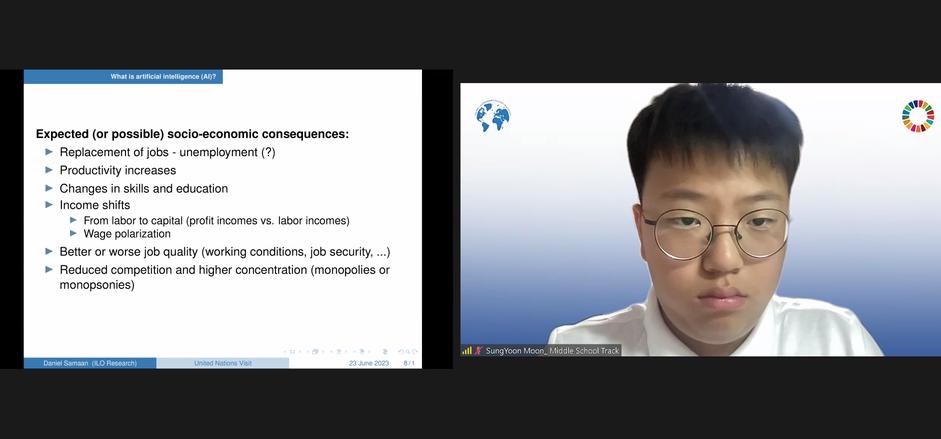
Global GLEC Conference Final Report 2023 June
139
resource use, and the adoption of clean technologies, presenting an opportunity to transform industries and promoteagreenerandmoresustainablefuture
The SDGs highlight the significance of collaborative action and global partnerships. They recognize that sustainable development requires collective efforts, involving governments, civil society, the private sector, and international organizations. The SDGs call for inclusive multi-stakeholder engagement, fostering partnerships at all levels to leverage expertise, resources, and innovation. This emphasis on partnerships acknowledges the interconnectedness of global challenges and the need for shared responsibility and collectiveaction
Despite the significant advancements introduced by the SDGs, challenges persist Adequate funding remains a critical issue, as achieving the SDGs requires substantial financial resources. Mobilizing domestic resources, attracting investments, and increasing international cooperation is essential for realizing the goals. Moreover, the complexity and interdependencies of the SDGs require integrated and cross-sectoral approaches,demandingcollaboration,coordination,andpolicycoherence
However, the SDGs also present tremendous opportunities The SDGs provide a framework for addressing systemic challenges and fostering sustainable development by integrating social, economic, and environmental dimensions They create an opportunity to harness technological advancements, innovation, and transformative practices to build resilient societies and promote social justice. Moreover, the SDGs have prompted increased data collection, monitoring, and accountability, enabling evidence-based decisionmakingandfacilitatingprogressassessment.
In conclusion, the evolution from the MDGs to the SDGs signifies a paradigm shift in the approach to global sustainable development. The SDGs embrace a more comprehensive and interconnected vision, promoting a holisticunderstanding
PrioritizingMaternalWell-being forSustainableDevelopment
Sustainable development is a multi-dimensional concept that covers economic, social, and environmental aspects of human progress. Achieving sustainable development requires an approach that addresses various interconnected challenges Among these challenges, the well-being of mothers plays a basic role in creating sustainable societies. Recognizing and prioritizing maternal well-being is essential not only for the health and right of women but also for the overall development and long-term sustainability of communities and nations. This essay explores the significance of prioritizing maternal well-being within the context of sustainabledevelopment.
140 Global GLEC Conference Final Report 2023 June
Maternal well-being is a fundamental aspect of sustainable development as it directly influences the health and welfare of individuals and communities Healthy mothers can do roles as caregivers, nurturers, and educators, thereby promoting positive child development outcomes. Maternal health interventions, such as access to quality prenatal care, skilled birth attendants, and postpartum support, contribute to reducing maternal and child mortality rates. By prioritizing maternal well-being, societies can create a solid foundationforsustainabledevelopmentbyensuringthesurvival,health,andprospectsoftheirpopulations.
Empowering women is central to achieving sustainable development goals. Maternal well-being is closely linked to women ' s empowerment, as it encompasses factors such as education, economic opportunities, and decision-making power. When women learn more and get good information about women, they can make reliable choices regarding their reproductive health and family planning By supporting women ' s economic empowerment through job opportunities and entrepreneurship, societies can alleviate poverty and foster economic growth Additionally, ensuring women ' s participation in decision-making processes enables them toadvocateforpoliciesthatprioritizematernalhealth,leadingtomoresustainableandinclusivesocieties.
Maternal well-being is a critical determinant of intergenerational poverty. Addressing maternal health benefits individual women and has long-term implications for their children and future generations When mothers receive enough nutrition, healthcare, and social support during pregnancy, childbirth, and postpartum period, they are more likely to give birth to healthier babies with improved cognitive and physical development. This, in turn, breaks the cycle of poverty by enabling children to thrive and realize their full potential, contributing to sustainable human development. Investing in maternal health is, therefore,aninvestmentinthefutureofsocieties,ensuringamoreprosperousandsustainablefutureforall.
Prioritizing maternal well-being is essential for achieving social and gender equity. Women, particularly in marginalized communities, often face barriers to accessing quality healthcare, including maternal health services By addressing these discriminations and ensuring equal access to reproductive healthcare, societies can promote social justice and gender equality. Moreover, empowering women with the knowledge, resources, and decision-making power regarding their reproductive health enables them to exercise autonomy and control over their bodies and lives. This fosters a society where women ' s rights are respected, andtheircontributionstosustainabledevelopmentarefullyrecognized
Prioritizing maternal well-being is not only a moral imperative but also a strategic investment for sustainable development. By focusing on the health, empowerment, and overall well-being of mothers, societies can lay the foundation for thriving communities and prosperous nations Improved maternal health outcomes lead to healthier children, breaking the cycle of intergenerational poverty and ensuring a more sustainable future By promoting gender equity, social justice, and women ' s empowerment, societies can unlock the full potential of half of their populations. Therefore, integrating maternal well-being into sustainable development agendas is crucial for creating a world that is equitable, inclusive, and capable of meetingtheneedsofpresentandfuturegenerations.
Global GLEC Conference Final Report 2023 June 141
ChallengesinBalancingBiodiversity andInternationalTradeinCities
Cities serve as strong economic hubs, facilitating international trade and economic growth. However, urban development often places significant pressure on biodiversity, leading to detrimental impacts on ecosystems and species. Achieving a harmonious balance between biodiversity conservation and international trade poses significant challenges for cities worldwide. This essay explores the complex relationships between biodiversity and international trade, highlighting the key challenges faced and potential strategies to overcomethem.
The rapid expansion of cities often results in the conversion of natural habitats into urban landscapes. This process, known as urbanization, leads to habitat fragmentation, disrupting ecosystems and displacing native species. The conversion of green spaces into concrete jungles reduces biodiversity and adversely affects the ecological balance Maintaining intact habitats within cities is essential to preserve biodiversity, but this is often at odds with the demands of international trade, which requires infrastructure development and urbanexpansion
International trade sometimes imported non-native species, which can become invasive and threaten local biodiversity. Global transportation networks facilitate the unintentional transportation of organisms that can outcompete and displace native species The unchecked spread of invasive species can disrupt entire ecosystems, leading to the loss of native flora and fauna. Balancing the economic benefits of international trade with the need to prevent the introduction and spread of invasive species poses a significant challenge forcities.
International trade often involves the transport of goods over long distances, resulting in increased carbon emissions and pollution. This pollution negatively impacts air and water quality, degrading ecosystems and posinghealthriskstobothhumansandwildlife Additionally,theextractionofnaturalresourcestomeetthe demands of international trade contributes to habitat destruction and biodiversity loss. Managing the environmental impacts of trade while sustaining biodiversity requires innovative approaches that promote sustainableproduction,transportation,andconsumption.
Illegal wildlife trade poses a severe threat to biodiversity, particularly in urban centers. Cities serve as hotspots for the trafficking of endangered species and their parts, fueled by demand for exotic pets, luxury goods, and traditional medicines. This illicit trade drives the decline of numerous species and undermines conservation efforts Balancing international trade while combatting wildlife trafficking necessitates robust law enforcement, increased public awareness, and international collaboration to address the demand and supplysidesofthisissue
Global GLEC Conference Final Report 2023 June
142
To successfully balance biodiversity conservation and international trade, cities need comprehensive urban planning and policies that integrate environmental considerations into trade practices This requires a multidisciplinary approach, involving collaboration among government entities, trade organizations, environmental agencies, and local communities. Creating green spaces, establishing protected areas, and implementing sustainable infrastructure development are essential steps toward maintaining biodiversity withinurbanlandscapes.
Balancing biodiversity conservation and international trade in cities is a complex task that requires a holistic approach Urbanization, invasive species, pollution, illegal wildlife trade, and sustainable planning are key challenges that must be addressed. Finding a middle ground where economic growth can coexist with biodiversity preservation necessitates proactive measures, such as sustainable production, responsible trade practices, and effective enforcement of regulations. By adopting a comprehensive approach that acknowledges the importance of biodiversity, cities can strive towards a sustainable future that supports botheconomicprosperityandenvironmentalwell-being.
Global GLEC Conference Final Report 2023 June 143
FromMDGstoSDGs:AJourney TowardsSustainableDevelopment
YeYeonLee Singapore School Clark

The Sustainable Development Goals (SDGs), were adopted by the United Nations in 2015, as a universal call toactiontoendpoverty,safeguardtheenvironment,andensurethatallpeoplehavepeaceandprosperityby 2030.TheMillenniumDevelopmentGoal(MDG)withanagendatocallforhalvingglobalpovertyfrom2000 to 2015 was first adopted by the UN before the SDG was authorized This fundamental shift marks a significant change in the global development agenda as well as the sustainable development methodology. While the MDGs focused primarily on poverty reduction, the SDGs present a more comprehensive framework which includes social, economic, and environmental components. This transition recognizes the needforaholisticapproachthatleavesnoonebehind
The shift to SDGs also opens up new opportunities for collaboration and partnerships between developed anddevelopingcountries.Inordertoachievesustainabledevelopment,theSDGsunderscorethenecessityof shared responsibility and mutual cooperation Collaboration in areas such as technology transfer, capacity building,andresourcemobilizationbecomescrucialforeffectiveimplementation.
A collective approach is vital in addressing the interconnectivity of the SDGs. This collective effort involves engaging multi-stakeholders, such as governments, organizations, private sectors, and civil society which playsacrucialroleintacklingthecomplexchallengesofsustainabledevelopment.Theirinvolvementbrings together different perspectives, expertise and resources to foster innovation, develop comprehensive and effective solutions Likewise, inclusive partnerships are also essential for addressing the varied challenges of sustainable development. By encompassing different sectors, regions, and actors, these partnerships enable collaboration and knowledge exchange Several successful examples of inclusive partnerships can be found in poverty reduction, climate action, and gender equality initiatives, where diverse stakeholders work togethertodrivepositivechange
Despite these advancements, challenges remain in the implementation of the SDGs Critics argue that the SDGsfacechallengesinachievingtheirambitiousobjectives.Onemajorconcernisthelackofenforceability and accountability mechanisms Unlike the MDGs, the SDGs are non-binding, which raises questions about thecommitmentofcountriestoimplementnecessarychanges.Additionally,thesheernumberofgoalsand
Global GLEC Conference Final Report 2023 June
144
targets within the SDGs creates complexity and can lead to a diffusion of efforts. Prioritization becomes a challenge, and resources may be spread too thin, hindering the achievement of significant progress in any particular area. However, the effectiveness of the SDGs in fostering global cooperation requires an assessment of progress toward the targets. While challenges last, the SDGs have generated significant global momentum and political will toward sustainable development. The integrated character of the SDGs allows foramorecomprehensiveandinterconnectedapproachcomparedtoMDGs,allowingforcollaborationtobe leveragedandrootcausestobeaddressed.
In light of these facts, the evolution from the MDGs to the SDGs constitutes significant progress in the effort toward sustainable development on a global basis. The SDGs address benefits with advanced, comprehensive, and integrated frameworks while tackling obstacles like prioritization, monitoring, and transformative change. In order to further learn about the vision of sustainable development and build a morejustandsustainablefutureforall,ongoingcollaborationandinnovationareessential
Reference
https://www.sdgfund.org/mdgs-sdgs
https://digitalcommons.du.edu/cgi/viewcontent.cgi?article=1043&context=djilp
https://www.sciencedirect.com/science/article/pii/S258981162030046X
https://advocacy.thp.org/2014/08/mdgs-to-sdgs/
EmpoweringMothers: TheInterconnectionbetweenSDGand PrioritizingMaternalWell-being
Maternal well-being plays a vital role in profounding our society. The health and happiness of mothers highly impact their families, community, and the overall progress of the nation. “Mother” means more than a lot to younger. They hold a multitude of roles in the lives of their children, serving as idols, support systems, superheroes, and even friends, representing their entire world and bringing everything to them. It further emphasizes the essence of maternal well-being in the context of both society and sustainable development
The significance of maternal well-being further emphasizes the interdependencies and effects on various facets of sustainable development through its connection with multiple goals encompassed within the sustainable development agenda Maternal health is directly linked to SDG 3 as it focuses on ensuring healthylivesandpromotingwell-beingforallages.Byprioritizingmaternalhealth,suchasboardaccessto
Global GLEC Conference Final Report 2023 June
145
quality prenatal and postnatal care, skilled birth attendants, and providing essential healthcare services, the maternal mortality rates would be more likely to reduce as reproductive health outcomes improve, which would enhance overall population health. Moreover, maternal well-being also contributes to creating an enabling environment for children to receive a quality education, fostering long-term educational outcomes and human development due to the fact that the healthcare of mothers during pregnancy can also determine how healthy the child will be born. This also intersects with SDG 4; quality education. SDG 5 shouldalsotakeapartinthelinkagewithmaternalwell-being.Theirprimaryaimisgenderequalityandthe empowerment of all women and girls. In light of the direct effects that women ' s access to healthcare and reproductive rights have on their entire quality of life, maternal health is a vital component of gender equality. Enhancing maternal healthcare services and addressing gender-based disparities in healthcare, education, and employment prospects can raise awareness of the problem and even support women to participateactivelyinsustainabledevelopmentprojects.
Recognising the value of various healthcare systems and practices that can improve mothers' well-being should always be of utmost importance Additionally, breaking down barriers and fostering circumstances that can support maternal health are all parts of building an enabling environment. These are associated with a number of SDGs, such as those that address gender-based discrimination, enable fair access to healthcare and employment opportunities, and provide social support services like child care and flexible work hours In order for sustainable development to be successful, the rate of maternal mortality and morbidity must also be minimized. In addition to being a sign of inadequate healthcare delivery infrastructures, high rates of maternal illness and death, particularly in developing countries like Nigeria andtheRepublicofSouthSudan,havefar-reachingsocialandeconomicramifications.
Along with the benefits of putting maternal health initially, challenges such as finding enough financing and adequate environmental resources, often seem to follow. The competing priorities within the sustainable development agenda may limit the availability of resources specifically for maternal health programs. The provision of high-quality maternity healthcare services is hindered by inadequate infrastructure in many regions, particularly in low-income nations These regions often lack sufficient facilities,qualifiedmedicalworkers,andaccessibletransportation.
Prioritizing maternal well-being is not only a moral obligation but also a critical step toward achieving sustainable development A solid foundation for society's progress would be laid through major investments in areas like healthcare, gender equality, women ’ s empowerment, and the abilities of mothers. Through collective efforts, we can take a step closer to a sustainable future where mothers are empowered, societies prosper,andsustainabledevelopmentbecomesareality.
Reference
https://sustainabledevelopment
https://makemothersmatter org/delegations/un/mothers-and-the-sustainable-developments-goals-of-th e-2030-agenda/
https://link springer com/referenceworkentry/10 1007/978-3-319-95681-7 64
%20Women%20Analysis%20on%20Women%20and%20S
un org/content/documents/2322UN
DGs pdf
Global GLEC Conference Final Report 2023 June 146
NavigatingtheTightrope:The ChallengesinBalancingtheBiodiversity
andInternationalTradeinCITES
CITES is the single most important treaty protecting species at an international level which stands for Convention on International Trade in Endangered Species Since its establishment in 1975, CITES has become an essential framework for promoting sustainable trade while ensuring the preservation of threatened wildlife and plant species Its vision is to ensure all international trade in wild fauna and flora is legal and sustainable, consistent with the long-term conservation of species, thereby contributing to halting biodiversitylossandachievingthe2030agendaofSustainableDevelopment
Since CITES prioritizes enhancing the operation of the Convention, international trade in wildlife is legally undertaken at a sustainable level and helps the preservation of listed species. They also ensure that the development of CITES policy involves and supports global environmental concerns which describe a fresh worldwideeffortthatcomplieswiththeConvention.
However, this noble mission is not without its challenges. As CITES brings together countries with different economic, social, and environmental priorities, balancing biodiversity conservation and international trade requires negotiating the interests of nations that seek to protect endangered species with those that rely on the trade of these species for the countries’ economic or cultural reasons. It can also affect the concept of sustainable use, which permits the trade of certain species in specific conditions, as the subject of contention. But still, opinions differ on what constitutes sustainable use and whether it aligns with effective biodiversity conservation. Moreover, the fact that the implementation and enforcement of the regulations may be complex, varying from country to country can undermine efforts to achieve a balance between biodiversity conservation and trade Weak enforcement can lead to corruption and the flourishing of an illegal trade network and this can even make curbing, tracking and addressing illegal wildlife trade challenging
Furthermore, the CITES agreement gives rise to various complexities in several aspects Limited knowledge and the huge gap between scientific understanding regarding existing ecology, trade pattern, insufficient data and research hinder the accurate assessment of trade impacts and analysis of effective conservation measures. Also, the efforts to raise public awareness and educate relevant stakeholders on the importance of biodiversityconservationaswellastheillegalwildlifetradeareessentialtoenhancecompliancewithCITES regulations. Although there are accurate and detailed identifications and classifications for most of the species existing, there are some uncertainties for less-known or newly discovered species, which can also complicatecomplianceefforts.
TherearefurtherdifficultiesinimplementingtheCITES’sgoalsofachievingequitableaccesstobiological
Global GLEC Conference Final Report 2023 June
147
resourcesandminimizingitssocioeconomiceffectsoncommunities.Localcommunities’capacitytoexpress their concerns and participate in public discussions that affect their lives and livelihoods may be hindered by language barriers, a lack of resources, and a lack of representation. CITES also need to ensure that the local community, especially indigenous peoples would receive fair benefits from the sustainable use of biological resources. Implementing mechanisms for benefit-sharing methods that consider the rights, knowledgeandcontributionsofthecommunitiescanbecomplexandrequirecarefulnegotiation.
CITES is a glimpse of hope and a reminder that we all have a responsibility to preserve our natural heritage as the world faces increasing threats to biodiversity CITES can continue to be a key player in protecting the unique wildlife and plants of our planet by tackling the problems head-on and adjusting to changing conservationdemands WecanonlyensureasustainablefuturewherebiodiversityflourishesandtheCITES principlesarerespectedthroughpersistentcommitment,innovation,andinternationalcooperation.
Reference
https://sustainabledevelopment un org/index
php?page=view&type=30022&nr=650&menu=3170
https://sdg iisd org/commentary/guestarticles/how-cites-is-taking-concrete-action-for-a-world-living-inharmony-with-nature-cites-contribution-to-the-un-decade-onbiodiversity/ https://www ifaw org/international/journal/what-cites
https://cites org/sites/default/files/documents/COP/19/resolution/E-Res-18-03 pdf
Global GLEC Conference Final Report 2023 June 148
FromMDGstoSDGs:AParadigm
ShifttowardsSustainableFuture
YeeunKim SALT International School

In today's world, it is not enough to simply observe passively; taking an active role is crucial in creating a sustainable future This shift is evident in the transition from the Millennium Development Goals (MDGs) to the Sustainable Development Goals (SDGs), which marks a significant milestone in global efforts for sustainability While the MDGs provided a valuable foundation, the SDGs have emerged as a more comprehensive and interconnected approach, better suited to address the diverse and complex challenges relatedtosustainabledevelopment
The MDGs, established in 2000, consisted of eight goals primarily focused on social issues such as poverty, education, and health. According to the United Nations, the MDGs helped lift over one billion people out of extreme poverty, increased access to primary education, and reduced child mortality rates by half However, they were criticized for their narrow focus and failure to address the broader dimensions of sustainable development AstheMDGsapproachedtheirtargetdatein2015, itbecameevidentthatamoreinclusiveand comprehensiveapproachwasnecessarytotacklethecomplexchallengesfacedbyhumanity.
The SDGs, launched in 2015, build upon the successes and lessons learned from the MDGs. The 17 SDGs encompass social, economic, and environmental dimensions, recognizing the interdependence of these elements in achieving sustainable development. For example, Goal 13 aims to combat climate change, while Goal7focusesonensuringaccesstoaffordableandcleanenergy.TheSDGsalsointroducenewgoalssuchas Goal14,whichfocusesonconservingandsustainablyusingtheoceans,seas,andmarineresources
The shift from MDGs to SDGs has profound implications for collaboration and partnerships between developed and developing countries. The SDGs recognize that sustainable development is a shared responsibility that requires the active participation and cooperation of all nations, irrespective of their developmentstatus.
According to the World Bank, the SDGs have fostered increased collaboration and partnerships, both within and between countries (World Bank, 2020) For instance, the World Health Organization's Partnership for Maternal,Newborn&ChildHealthhasbroughttogethergovernments,NGOs,andprivatesectorpartnersto
Global GLEC Conference Final Report 2023 June
149
improvematernalandchildhealthworldwide.
A collective approach is crucial in addressing the interconnectivity of the SDGs. The goals are intricately linked, and progress in one goal often depends on the progress made in others. For example, achieving Goal 2, which aims to end hunger and achieve food security, is closely tied to Goal 13 on climate action. Climate change can negatively impact agricultural productivity and food availability, making it harder to achieve foodsecurity.
The SDGs encourage countries to develop their national strategies and plans aligned with the global goals This approach ensures ownership, accountability, and tailored solutions that address the specific challenges and contexts of each country It also fosters mutual learning and knowledge-sharing among nations, facilitatingthereplicationofsuccessfulpracticesandinnovations.
The effectiveness of the SDG framework in fostering global cooperation and achieving a more comprehensive and integrated approach to sustainable development has been subject to debate Advocates argue that the SDGs have brought about increased collaboration and multi-stakeholder engagement. According to the United Nations, the SDGs have mobilized trillions of dollars in public and private investments. The inclusive nature of the SDG framework has encouraged governments, civil society organizations, businesses, and academia to work together, pooling resources and expertise to achieve the goals.
However, critics highlight the challenges in implementing the SDGs, including funding gaps, capacity constraints, and limited progress monitoring mechanisms. It is essential to ensure adequate financial resources and technology transfer to developing countries to support their efforts in achieving the SDGs. Additionally, measuring progress and assessing the impact of individual goals can be complex due to their interdependenciesandinterconnectednature
The transition from MDGs to SDGs represents a significant shift towards a collective approach for sustainable development. The SDGs recognize the interconnectivity of global challenges and promote multistakeholder engagement and inclusive partnerships While the SDGs have fostered greater collaboration, resource mobilization, and innovation, challenges in implementation and monitoring persist. Continued efforts are needed to address these challenges and ensure the effective realization of the sustainable development agenda. By embracing a collective approach and leveraging the strengths of different stakeholders, we can foster global cooperation and achieve a more comprehensive and integrated approach tosustainabledevelopment.Forourfuture,ourhometoday,andourrefugetomorrow.
Reference
“The 17 Goals | Sustainable Development ” United Nations, sdgs un org/goals Accessed 22 June 2023
“From Mdgs to Sustainable Development for All: United Nations Development Programme ” UNDP, www undp org/publications/mdgs-sustainable-development-all Accessed 22 June 2023
“Who Collaboration: Partnerships ” WHO, www who int/about/collaboration/partnerships Accessed 23 June 2023
Global GLEC Conference Final Report 2023 June 150
TheTransformativePowerof MaternalWell-being:PavingthePath
toaFairandSustainableWorld
In our quest for a fair and sustainable world, few things have the power to bring about transformation like the well-being of mothers It acts as a driving force, connecting different goals and pushing them towards success. Maternal health is closely linked to the achievement of certain SDGs. However, there are challenges to overcome when it comes to prioritizing the health of mothers Fortunately, there are strategies available toturnthesechallengesintoopportunitiesforsustainabledevelopment.
SDG 3 focuses on reducing global maternal mortality and ensuring good health and well-being for all. The World Health Organization (WHO) emphasizes the importance of comprehensive healthcare services, such as prenatal care and skilled birth attendance, in reducing maternal mortality rates and improving health outcomes for women The Lancet Series on Maternal Health further highlights the significance of investing in maternal health interventions, which not only reduce maternal mortality but also improve the health outcomes of women and children By prioritizing maternal well-being, countries can make significant stridestowardsachievingSDG3andcreatingahealthierfutureforgenerationstocome.
SDG 4 aims to provide quality education for all. Maternal health plays a crucial role in this goal as it directly impacts children's educational outcomes. Evidence from UNICEF and the World Bank underscores the importance of adequate prenatal care, nutrition, and support for pregnant women. When women receive comprehensive maternity healthcare services, it increases the likelihood of giving birth to healthy babies with better cognitive development. This, in turn, leads to improved educational performance and contributes to long-term sustainable development. By prioritizing maternal health, societies can create an environment that supports the educational development of children and makes progress towards achieving SDG4.
SDG5focusesonachievinggenderequalityandempoweringwomenandgirls.Maternalhealthisintricately linked to this goal, as it directly affects women ' s empowerment Accessible maternity healthcare services empowerwomentomakeinformedreproductivehealthchoices,givingthemgreatercontrolovertheirlives and contributing to their overall empowerment The United Nations Population Fund (UNFPA) emphasizes that maternal health is a fundamental right, and investing in it positively impacts women ' s well-being and empowerment Additionally, The Lancet Global Health highlights the positive effects of maternal health interventions on gender equality, including increased decision-making power for women and reduced gender disparities in health outcomes Prioritizing maternal well-being not only promotes gender equality but also fosters sustainable development by enabling women to actively participate in society, pursue education,andengageineconomicactivities.
Global GLEC Conference Final Report 2023 June
151
SDG 8 centers on promoting decent work and economic growth. Maternal health plays a crucial role in achieving this goal by ensuring the well-being of women in the workforce The International Labour Organization (ILO) emphasizes the importance of maternity protection policies, such as paid maternity leave, breastfeeding support, and workplace accommodations, in ensuring the well-being of women in the workforce. Furthermore, a study published in The Lancet Global Health demonstrates the positive outcomes of investing in maternal health, including enhanced productivity, economic growth, and poverty reduction. By prioritizing maternal well-being, countries can not only reduce maternal mortality rates but also retain skilled women in the workforce, foster economic growth through heightened productivity, and promote inclusivitythroughgender-responsivepolicies
While acknowledging the significance of maternal health, there are numerous obstacles to prioritizing it within the larger framework of the SDGs. Challenges such as limited healthcare access in remote areas, insufficient funding, cultural and social barriers, and gender disparities pose notable hindrances However, these challenges also serve as catalysts for innovative solutions. For instance, investing in maternal health infrastructure, bolstering healthcare systems, raising community awareness, advocating for genderresponsive policies, and fostering collaborations present promising avenues for overcoming these obstacles. By implementing these strategies, comprehensive and accessible maternity healthcare services can be ensured, women can be empowered, and an enabling environment for maternal well-being can be established
In conclusion, prioritizing the well-being of mothers is a key driver of transformation in our pursuit of a fair and sustainable world. Maternal health is closely intertwined with the achievement of specific SDGs, and while challenges exist, there are strategies available to transform these challenges into opportunities for sustainable development. By placing maternal well-being at the forefront, societies can make significant progress in reducing maternal mortality (SDG 3), improving educational outcomes (SDG 4), advancing gender equality (SDG 5), and promoting decent work and economic growth (SDG 8) Overcoming obstacles through innovative solutions and comprehensive healthcare services will empower women, create a healthier future, and establish an environment conducive to sustainable development for generations to come.
Reference
“Maternal Health ” World Health Organization, www who int/health-topics/maternal-health Accessed 27 June 2023
Breastfeeding 2023 - the Lancet, www thelancet com/series/Breastfeeding-2023 Accessed 27 June 2023
“Maternal and Newborn Health ” UNICEF, www unicef org/health/maternal-and-newborn-health Accessed 27 June 2023
Maternal and Child Health: The World Bank Group’s Response To , documents worldbank org/curated/en/996461511255244233/pdf/121500-WP-MaternalChildHealth-PUBLIC pdf Accessed 27 June 2023
“Maternal Health ” United Nations Population Fund, www unfpa org/maternal-health Accessed 27 June 2023
The Lancet Global Health Home Page, www thelancet com/journals/langlo/home Accessed 27 June 2023
“Maternity Protection (Equality and Discrimination) ” Maternity Protection (Equality and Discrimination), www ilo org/global/topics/equality-and-discrimination/maternity-protection/lang–en/index htm Accessed 27 June 2023
Global GLEC Conference Final Report 2023 June 152
CITES:SafeguardingBiodiversityinthe FaceofGlobalTradeChallenges
In our interconnected world, where the delicate threads of biodiversity are at risk of unraveling, the Convention on International Trade in Endangered Species of Wild Fauna and Flora (CITES) emerges as a formidable safeguard. As an international agreement, CITES plays a vital role in regulating and monitoring the trade of endangered species, aiming to protect our planet's rich tapestry of life However, achieving a harmonious balance between the imperative of conservation and the demands of international trade is no simpletask
The primary objective of CITES is to safeguard wild animals and plants from overexploitation due to international trade. The global wildlife trade is a significant threat to biodiversity, with estimates from the World Wildlife Fund (WWF) suggesting its worth between $7 billion and $23 billion annually. The InternationalUnionforConservationofNature(IUCN)reportsthatover7,000speciesofanimalsandplants are currently being traded illegally, putting immense pressure on their populations and ecosystems. However, achieving the objective of CITES is complicated by conflicting interests For example, the ivory trade debate highlights opposing viewpoints. Some argue that legalizing the trade could generate economic incentives for conservation efforts Nevertheless, opponents fear that even limited legal trade may increase demandandpoaching.BalancingtheseconflictinginterestsisachallengingtaskforCITES,requiringcareful considerationofeconomicimplicationsalongsideconservationgoals
The effectiveness of CITES heavily depends on the enforcement mechanisms employed by member countries. Unfortunately, these mechanisms vary significantly, contributing to challenges in achieving the desired outcomes The United Nations Office on Drugs and Crime (UNODC) highlights the challenges of enforcement and prosecution in the illegal wildlife trade, citing weak penalties and inadequate legislation in many countries A study published in Science Advances reveals that only 8% of wildlife trafficking cases between 2005 and 2014 resulted in convictions, indicating the need for stronger enforcement measures. Inadequate resources, corruption, and weak penalties for violations undermine the credibility of the agreement. Strengthening enforcement mechanisms, enhancing cooperation between countries, and imposing stricter penalties are crucial steps towards addressing these challenges. Additionally, a study in Conservation Letters highlights the lack of awareness and understanding about CITES regulations. Many individuals involved in the trade, including collectors, traders, and consumers, may not fully comprehend the implications of their actions on biodiversity. This lack of awareness perpetuates unsustainable trade practices. It is imperative to bridge these knowledge gaps through education and awareness campaigns, engaging stakeholders, and promoting a better understanding of the importance of biodiversity conservation.
AsignificantchallengeintheCITESframeworkisensuringequitableaccesstobiologicalresourceswhile
Global GLEC Conference Final Report 2023 June
153
addressing the socio-economic impacts on local communities, particularly when trade restrictions intersect with indigenous communities and their traditional practices The UNDP emphasizes the need for inclusive approaches that consider the rights and well-being of indigenous peoples and local communities, as disregardingtheirlivelihoodsandculturalpracticestiedtosustainableresourceusecanbedetrimental.
To address this challenge, engaging with indigenous peoples, recognizing their traditional knowledge, and involving them in decision-making processes are crucial. By incorporating their expertise and understanding of local ecosystems, we can develop sustainable management practices, as highlighted by the IIED This inclusive approach not only identifies alternative income sources but also ensures that local communities directly benefit from the sustainable utilization of biological resources. Thus, it establishes a symbioticrelationshipbetweenbiodiversitypreservationandthewell-beingoflocalcommunities
In conclusion, achieving a harmonious balance between biodiversity conservation and international trade within the CITES framework is a formidable challenge that demands immediate action. We must strengthen enforcement, close compliance gaps, and consider the socio-economic impacts on local communities By empowering stakeholders with knowledge and advocating for a global culture of reverence for nature, we can create a more inclusive and equitable path forward However, the magnitude of the challenges before us requires a unified front. Governments, conservation organizations, local communities, and the international community must join forces, transcending boundaries and political differences So, let us embark on this transformative journey together, driven by a shared commitment to safeguarding our natural heritage. The future of our planet hangs in the balance, and it is within our collective power to secure a vibrant and thrivingworldforgenerationstocome.
Reference
“The Cites Species ” CITES, cites org/eng/disc/species php Accessed 26 June 2023
“The IUCN Red List of Threatened Species ” IUCN Red List of Threatened Species, www iucnredlist org/en Accessed 26 June 2023
The Historical Development of Complex Global Trafficking - Science, www science org/doi/10 1126/sciadv aav5948 Accessed 25 June 2023
“What Does It Mean to Leave No One behind?: United Nations Development Programme ” UNDP, www undp org/publications/what-does-it-mean-leave-no-one-behind Accessed 26 June 2023
“Home ” International Institute for Environment and Development, www iied org/ Accessed 27 June 2023
“Fighting Illicit Wildlife Trafficking: A Consultation with Governments ” WWF, wwf panda org/discover/our focus/wildlife practice/problems/illegal trade/wildlife trade campaign/wildlife trafficking re port/ Accessed 30 June 2023
Global GLEC Conference Final Report 2023 June 154
ASustainableWorld
Can you imagine a world with fresh air? Blooming trees and healthy plants? A world with no pollution? A world where no one dies from starvation? Well, for future generations, that could only be a fantasy A fantasy far from reality. That is if we don't take immediate action. The future of the planet is entirely up to us the youth Many turn a blind eye to the current issues of the world we live in today This is where the UnitedNationscomestoeducatetheignorantintheLDCs,developingcountries,anddevelopedcountries.
The United Nations has set goals to be achieved to make the world a better and safer place. These goals are referred to as the Sustainable Development Goals 17 goals 17 missions that have 169 targets agreed upon by 191 UN member states to be achieved by 2030. However, it wasn't always 17 goals. Before the SDGs, there were MDGs short for Millenium Development Goals, and the SDGs were built on the success of these MDGs The Millenium Development Goals had 8 missions. The difference between SDGs and MDGs is that the MDGs' main target and general scope were the Least Developing Countries and the underdeveloped countries with the least amount of funds. The SDGs on the other hand focus on economic growth, social inclusion,andenvironmentalprotectiontargetingboththerichandthepoor.
However, because the SDGs target both rich and poor countries, most developing and underdeveloped countries still struggle to give its population a better lifestyle due to low funding. But, the SDGs could be the solution to a better world because it focuses on more goals separately rather than all at once to fulfill a mission
Weshouldrealizetheimportanceofworkingtogethertoachieveabetterandmoresustainableworld Weas humans should not remain stagnant and ignorant about the current issues of the world. We, as the youth shouldhelpinourlittlewaystomaketheworldabetterplaceforfuturegenerations
Reference
https://www.sopact.com/perspectives/mdg-to-sdg
https://reliefweb.int/report/world/transitioning-mdgs-sdgs?gclid=CjwKCAjwhdWkBhBZEiwA1ibLmBOZB66EreuNhrkLFD1IL dh-cM3i5haNF3zokGOX-IJohvobOEYxoCIdkQAvD Bw

Global GLEC Conference Final Report 2023 June
YnnaBuhisan University of San Carlos Cebu City
155
AwaytosupportMotherhood
Mothers and pregnant women are one of the most influential and important people in one ' s life Some of themspendmostoftheirlivestakingcareofusandprovidingforusbuttheymayalsoneedhelp.
Themental,emotional,andphysicalhealthofamotherorasoon-to-bemotherneedstoremainhealthytobe abletotakecareofthebaby However,somemothersexperiencewhatiscalled'postpartumdepression' This usually occurs during pregnancy up to 4 weeks after parturition. According to The Diagnostic and Statistical ManualofMentalDisorders,postpartumdepressionisatypeofdepressionwithperipartumonset.
Postpartum Depression usually follows the birth of a child. In a study, it has been found that 70-80% of new mothers experience 'baby blues' or a feeling of sadness and anxiety after the birth of a child. While baby bluesonlylastforthefirstfewdaysafterbirth,Postpartumdepressionlastsfor3-4weeksafterbirth.
Maternal care is important because it allows new lives to see the future of humanity. This is why we should propose new ways to upgrade and better the machines used in maternity hospitals to have a better and less terrifying experience for both mother and child. 62% of countries around the world are starting to implement at least 14 weeks of maternity leaves for expecting mothers Currently, the country with the best maternity services is Sweden. Sweden offers up to 480 days of maternity leaves. Another way to support mothers and expecting women is by empowering women and educating both men and women about pregnancyandmaternalsupport.
It is important to educate the youth about pregnancy, the reproductive system, and how easy it is to get pregnant because a 2019 study showed that 21 million pregnancies of ages 15-19 were recorded 50% of which were unplanned. Based on this same research, 55% of the pregnancies resulted in abortions which are proven to be harmful to a woman ' s body, especially adolescent ladies Another study in the least developed countries showed that women with less education are five times more likely to become mothers early than womenwithhighereducation.
Education is a priority to avoid teenage pregnancies that may ruin a woman ' s dream or future career. We should also spread awareness about rape and sexual abuse which are one of the causes of teenage pregnanciesinleastdevelopedandunderdevelopedcountries.Wemustprotectandempowerwomen.
Reference
https://www filipino-orphans org/why-so-many-orphans-part-2/?
gclid=Cj0KCQjw1 SkBhDwARIsANbGpFuyl5NhQyME8ZxURnZ4x8oPbXdYr a2oDE15 rncxW-sIaAKk52roQaAq-7EALw wcB
https://www who int/news-room/fact-sheets/detail/adolescent-pregnancy
Global GLEC Conference Final Report 2023 June
156
ABalancedSociety
Biodiversity speaks about all the different types of life you will find in a single ecosystem This varies from plants, fungi, viruses, animals, and all living things that make up our natural world. These species support life and it creates balance in society which is why it's important to keep them away from the threat of extinction.
One of the causes of a certain species' extinction is international trade. People tend to take so much of one thing to sell and trade until there's no more of it left. Because of this, the Convention on International Trade in Endangered Species of Wilf Fauna and Flora(CITES) was created. CITES is an international agreement signed by 184 countries in 1973 to ensure that international trade in animals and plants do not threaten extinction.
CITESalsoknownasTheWashingtonConventionwascreatedfromadraftofa1963resolutionatameeting between the members of the International Union for Conservation of Nature (IUCN). Its main goal is to ensurethesafetyofcertainspeciesintheecosystemthatwillbeorisonthebrinkofextinction
However, even with this agreement implemented, most rural areas still observe illegal tree cutting, cyanide fishing, bomb fishing, and illegal mining. These are not only dangerous to the environment around it but alsotohumanswholivenearareasclosetowheretheseillegalactivitiestakeplace
Many hurdles block the goal of CITES, one of which is the funding and the challenge to reach areas with a sinking economy and rural areas that are far from civilization. We should realize the importance of the balance between biodiversity and international trade because an imbalance can cause a threat to either biodiversityorinternationaltrade.
Reference
https://en wikipedia org/wiki/CITES
https://www google com/search?
q=biodiversity&oq=biodiversity&gs lcrp=EgZjaHJvbWUyBggAEEUYOTIHCAEQABiABDIHCAIQABiABDIHCAMQABiABDINCA QQLhivARjHARiABDIHCAUQABiABDIHCAYQABiABDIHCAcQABiABDIHCAgQABiABDIHCAkQABiABNIBCDMxNjhqMGo3qA IAsAIA&sourceid=chrome&ie=UTF-8
Global GLEC Conference Final Report 2023 June
158
Photo Gallery

Global GLEC Conference
United Nations Training
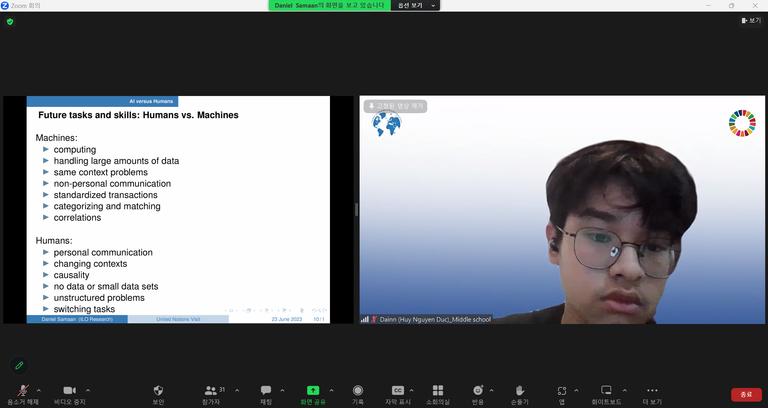




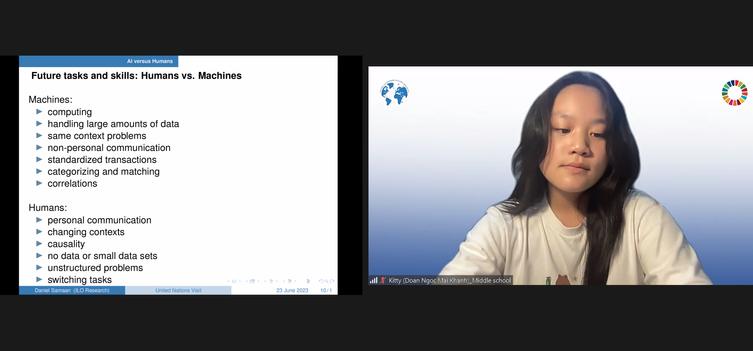


Global GLEC Conference Final Report 2023 June 160

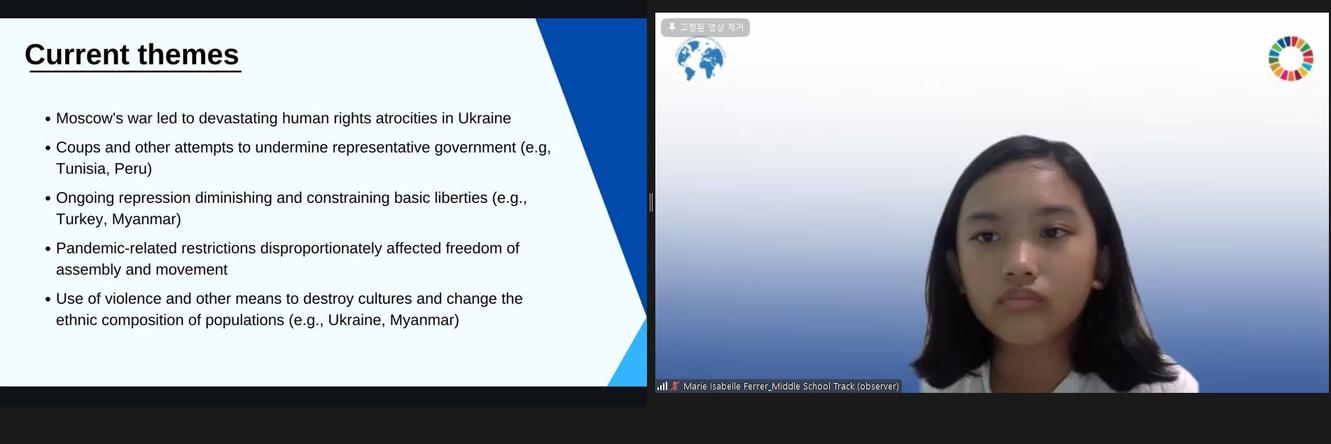



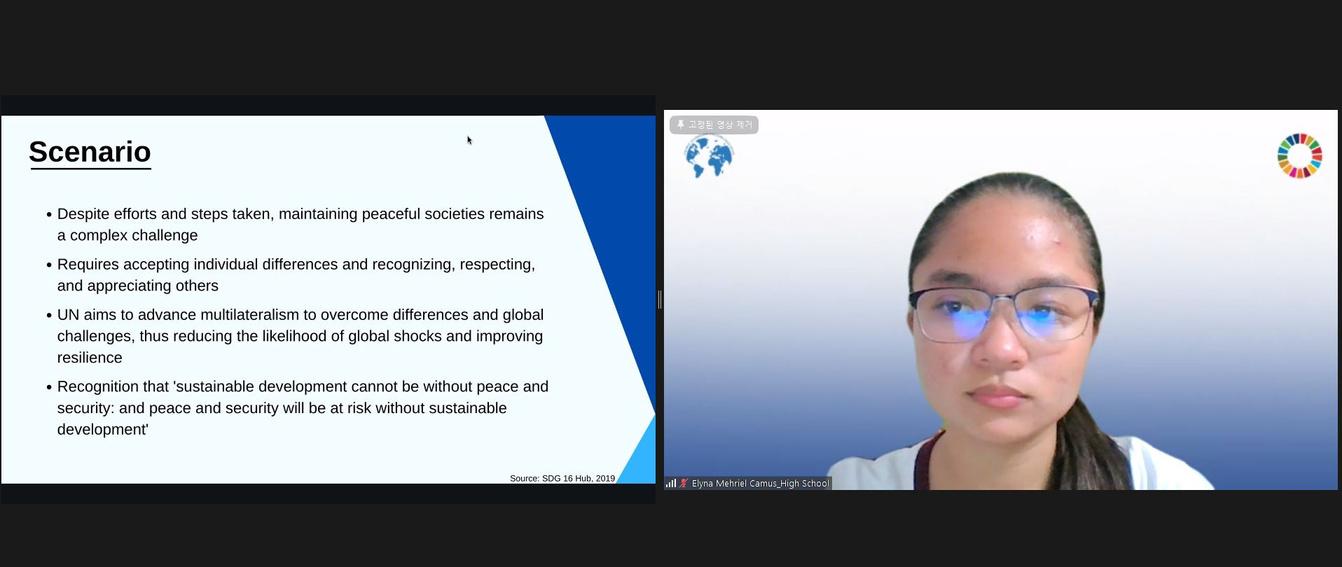


Global GLEC Conference Final Report 2023 June 161
SDGs Training
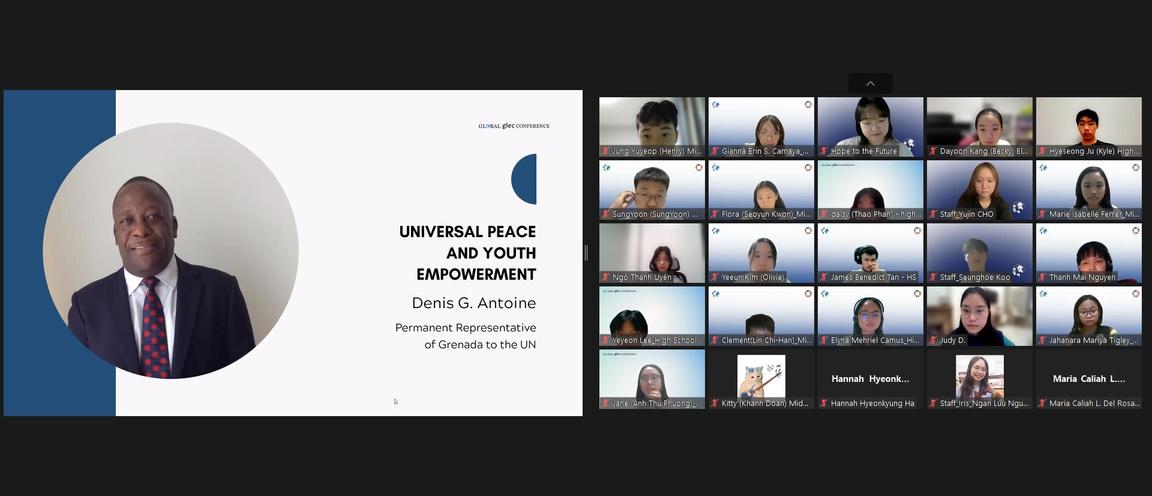


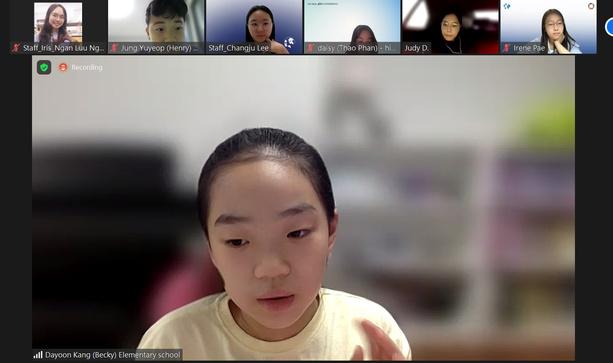

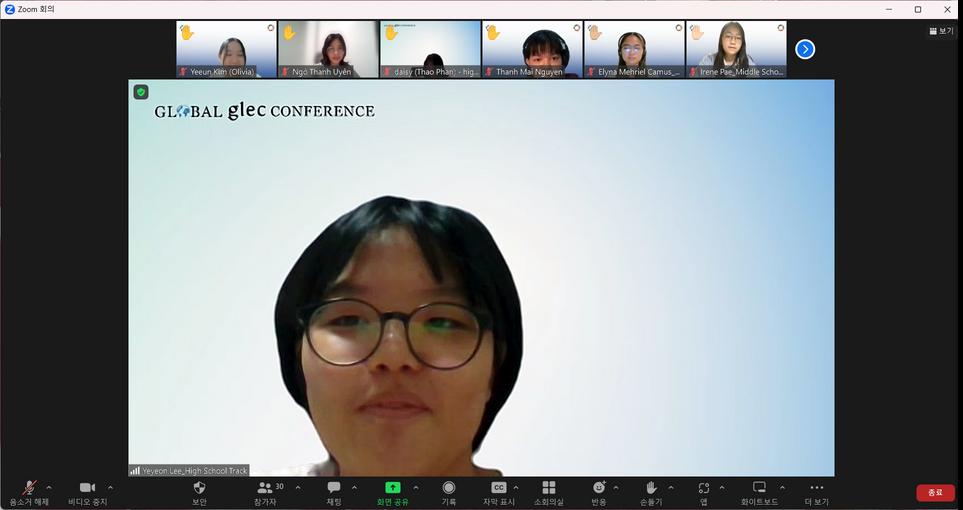


Global GLEC Conference Final Report 2023 June 162
SDGs Training
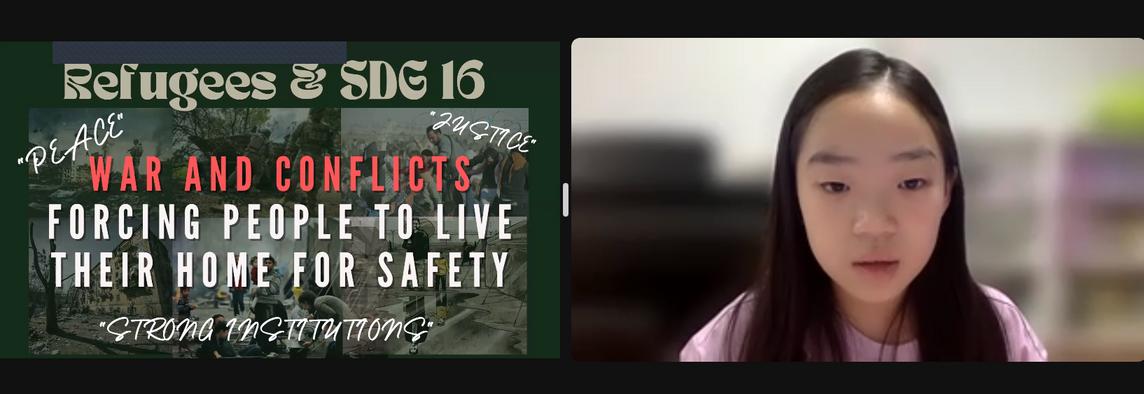



Presentation Global GLEC Conference Final Report 2023 June 163
SDGs
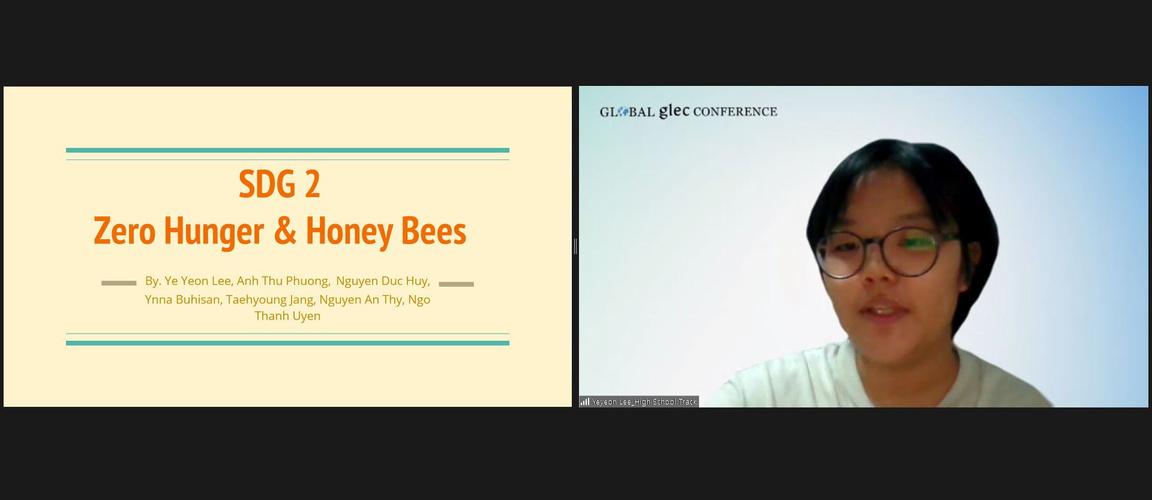
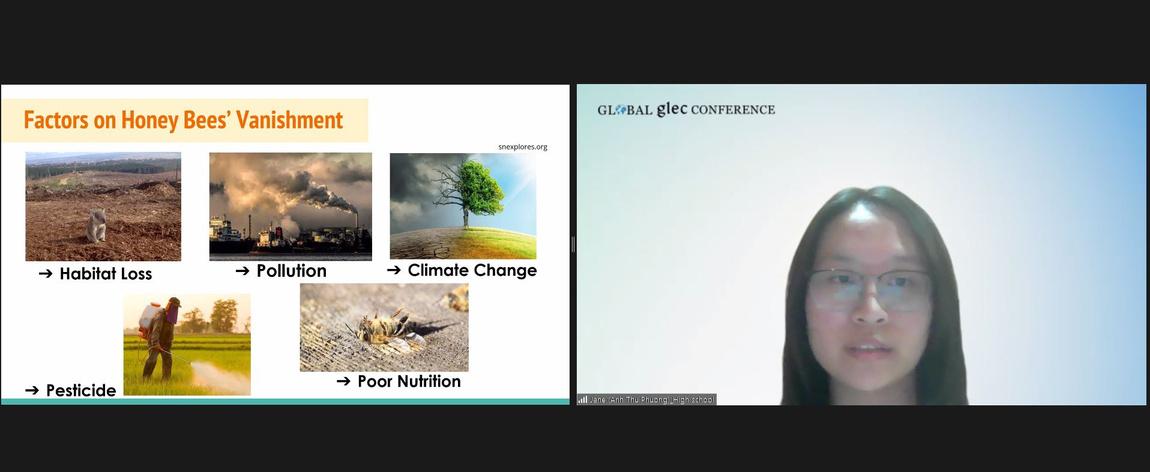
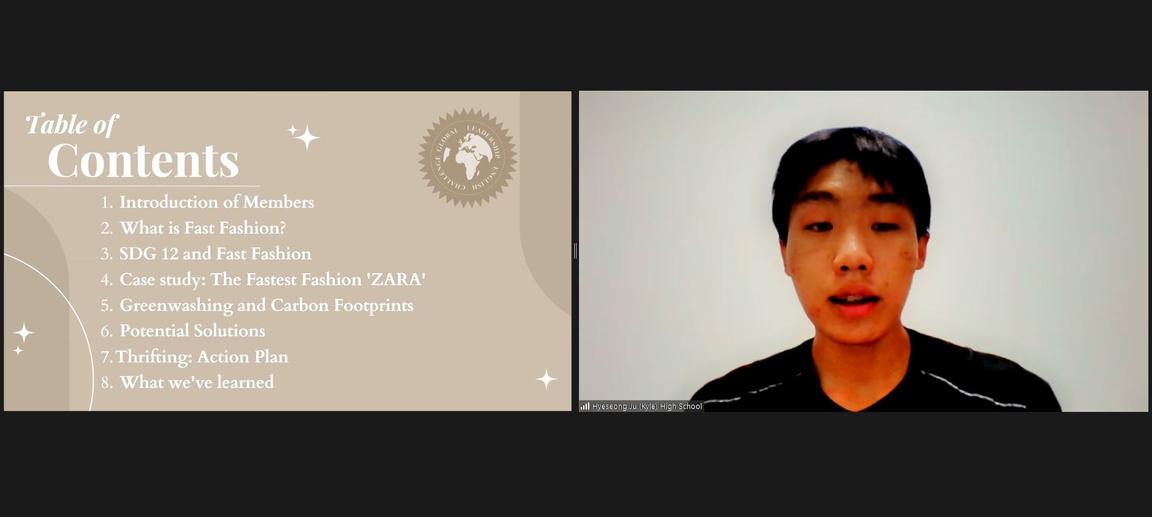

Global GLEC Conference Final Report 2023 June 164
SDGs Presentation
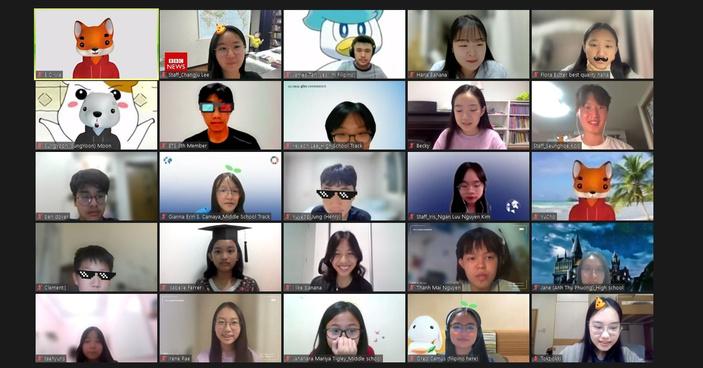

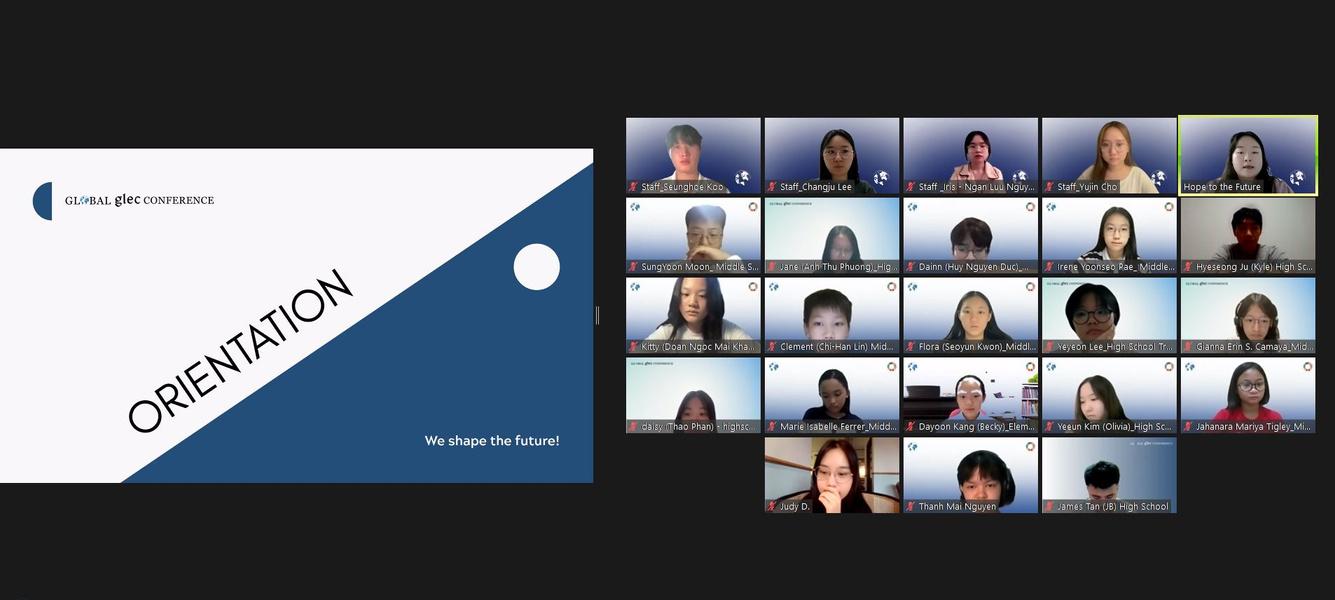

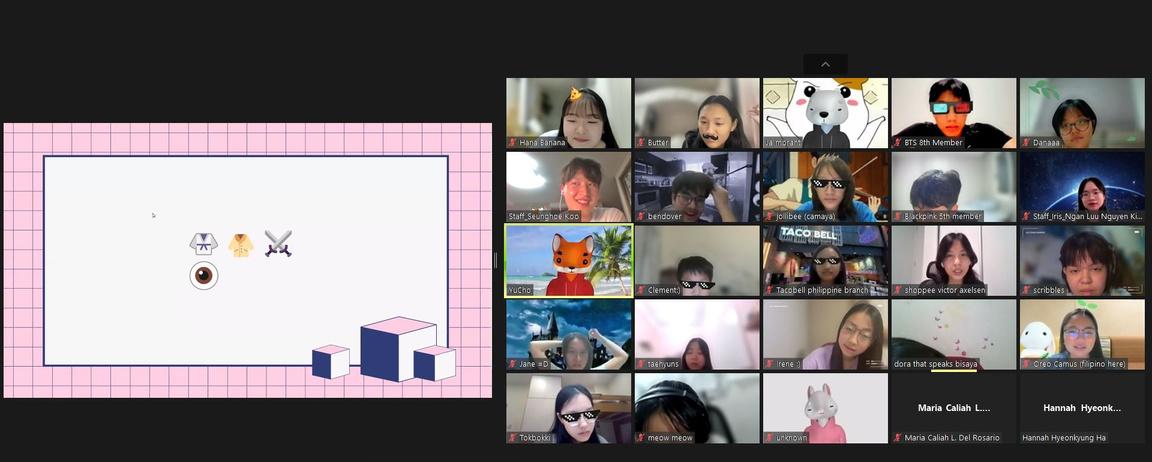
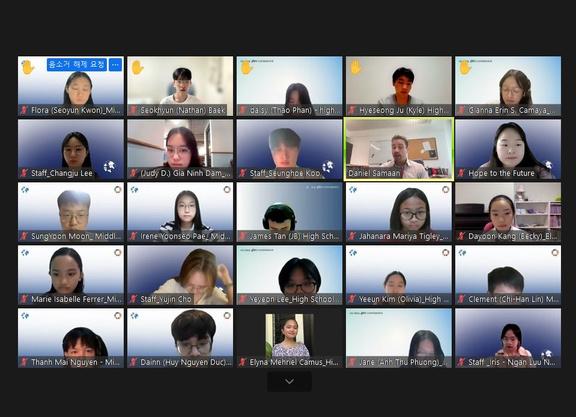

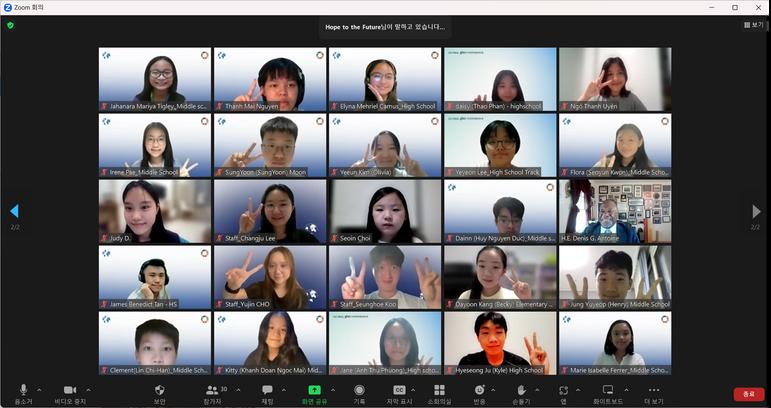
Global GLEC Conference Final Report 2023 June 165
Group Photo
HostOrganization
Name
Status Program
HopetotheFutureAssociation
CivilSocietyRepresentativeattheUnitedNationsDepartmentof GlobalCommunications(UNDGC)
GlobalCitizenshipEducation(GCED)
GlobalLeadershipEnglishChallenge(GLEC)
TrainingProgramatUNHQinNewYork(YouthTP)
UNSDGBookClubKorea
wwwhopetofutureorg
webmaster@hopetofutureorg
+82-2-6952-1616
Hope to the Future Association (HFA) is a non-profit organization registered under the Ministry of Foreign Affairs of the Republic of Korea With a strong commitment to public administration and governments, HFA actively engages in the policy-making process as a civil society organization. It works closely with policymakers and government agencies to advocate for policies that promote social progress, sustainable development, and global cooperation. HFA's role as a civil society organization allows it to bring the perspectives and concerns of the local community to the forefront of discussions and decision-making processes. By actively participating in policy dialogues and consultations, HFA contributes to shaping inclusive and effective policies that address global challenges, foster international collaboration, and create apositiveimpactonsociety.
Since 2014, HFA has been associated with the United Nations Department of Global Communications (UN DGC) as a Civil Society Organization. Serving as a bridge between the United Nations and the local community, HFA plays a vital role in raising awareness about the UN's initiatives and goals It facilitates the dissemination of information and resources provided by the United Nations to the public, ensuring that individuals and communities have access to accurate and up-to-date information on global issues Additionally, HFA organizes events, seminars, and workshops that promote understanding and engagement in global issues at the grassroots level By fostering dialogue and collaboration between the UN and diverse stakeholders, HFA strengthens the connection between global initiatives and local actions, promoting the implementationofsustainabledevelopmentgoalswithinthecommunity

Global GLEC Conference Final Report 2023 June
Contact Web Email
167
ⓒ 2023 GLOBAL LEADERSHIP ENGLISH CHALLENGE. All Rights Reserved. AllimagesanddetailsincludedinthisreportarecopyrightedtoGlobalLeadershipEnglishChallenge, exceptforparticularimagesnotedwithreferencesonthepages
Requeststoreproduceexcerpts,orallotherqueriesonrightsandlicenses,includingsubsidiaryrights, shouldbeaddressedtoglec@hopetofuture.org.
Publish Date
June252023
GlobalLeadershipEnglishChallenge
4FDanaBldg.,Bongeunsa-ro,Gangnam-gu, Seoul,RepublicofKorea06125
Contact
Publisher Website
Address Email
+82-2-6952-1616
Fax
+82-2-538-5928
www.gleader.org
glec@hopetofutureorg








































































 GiannaErinCamaya
Henry(YuyeopJung)
IrenePae
GiaNinhDam
HuyNguyenDuc
HyeseongJu
SeoinChoi
DayoonKang
GiannaErinCamaya
Henry(YuyeopJung)
IrenePae
GiaNinhDam
HuyNguyenDuc
HyeseongJu
SeoinChoi
DayoonKang























































































































 Lawrence S Ting School
Lawrence S Ting School






































